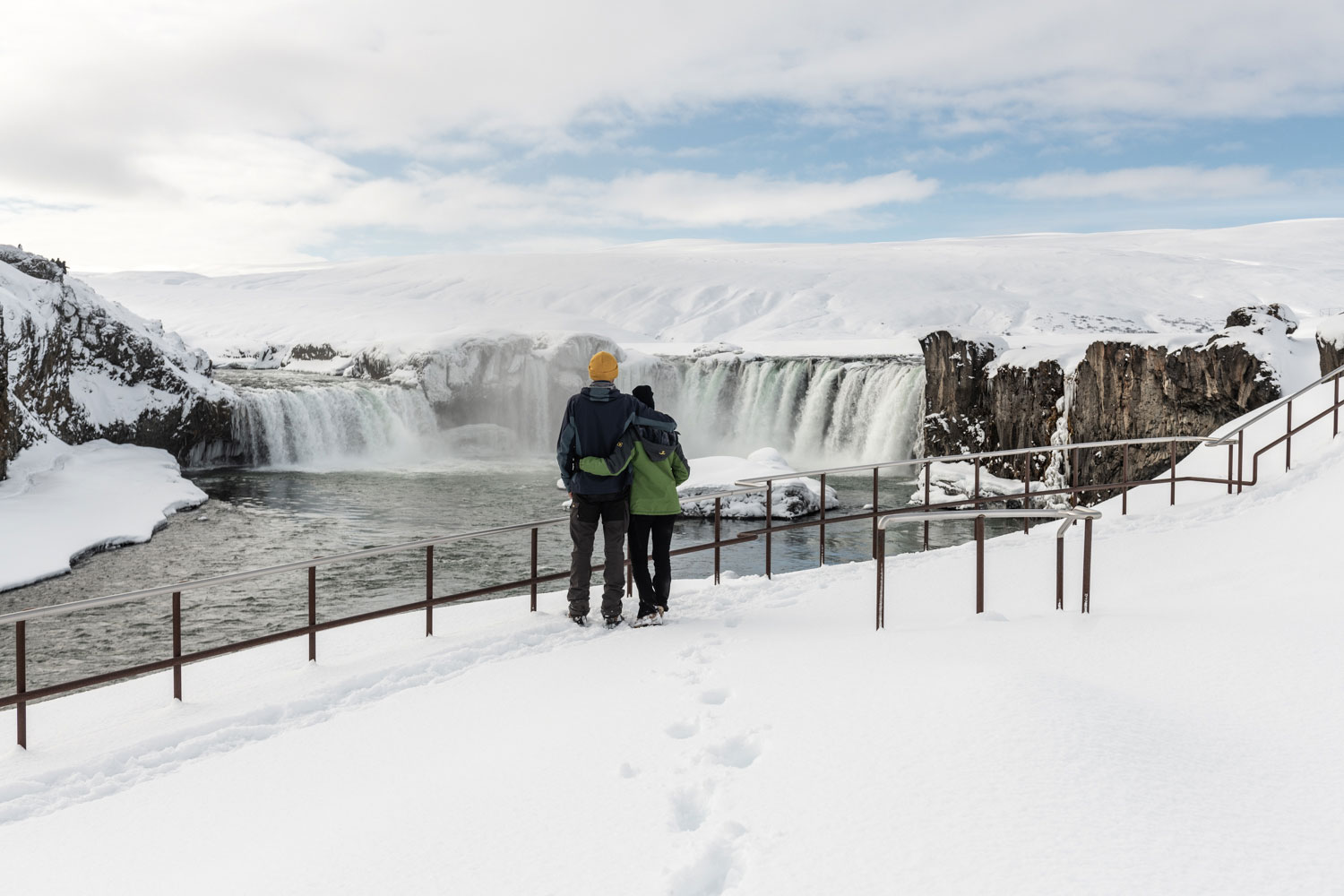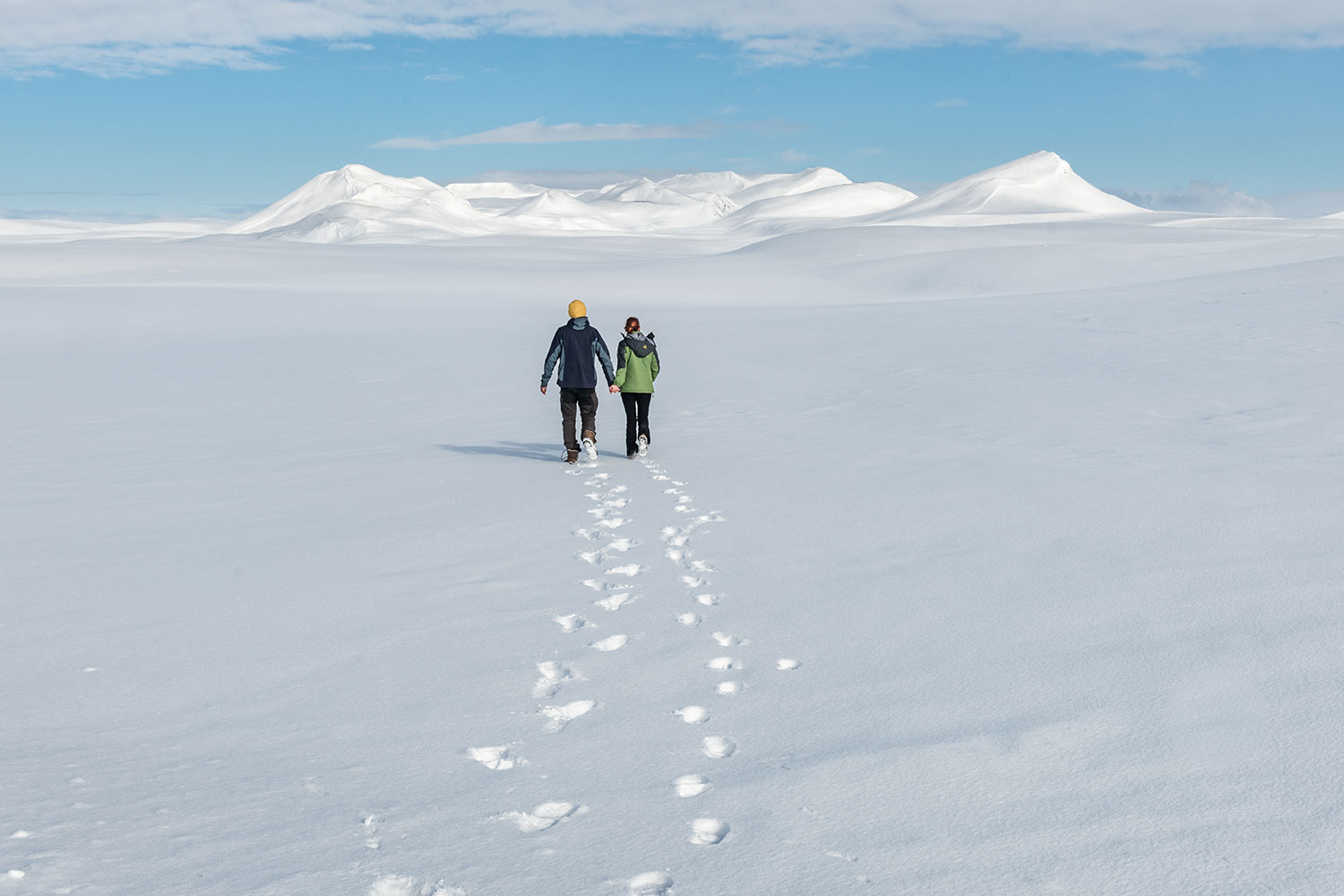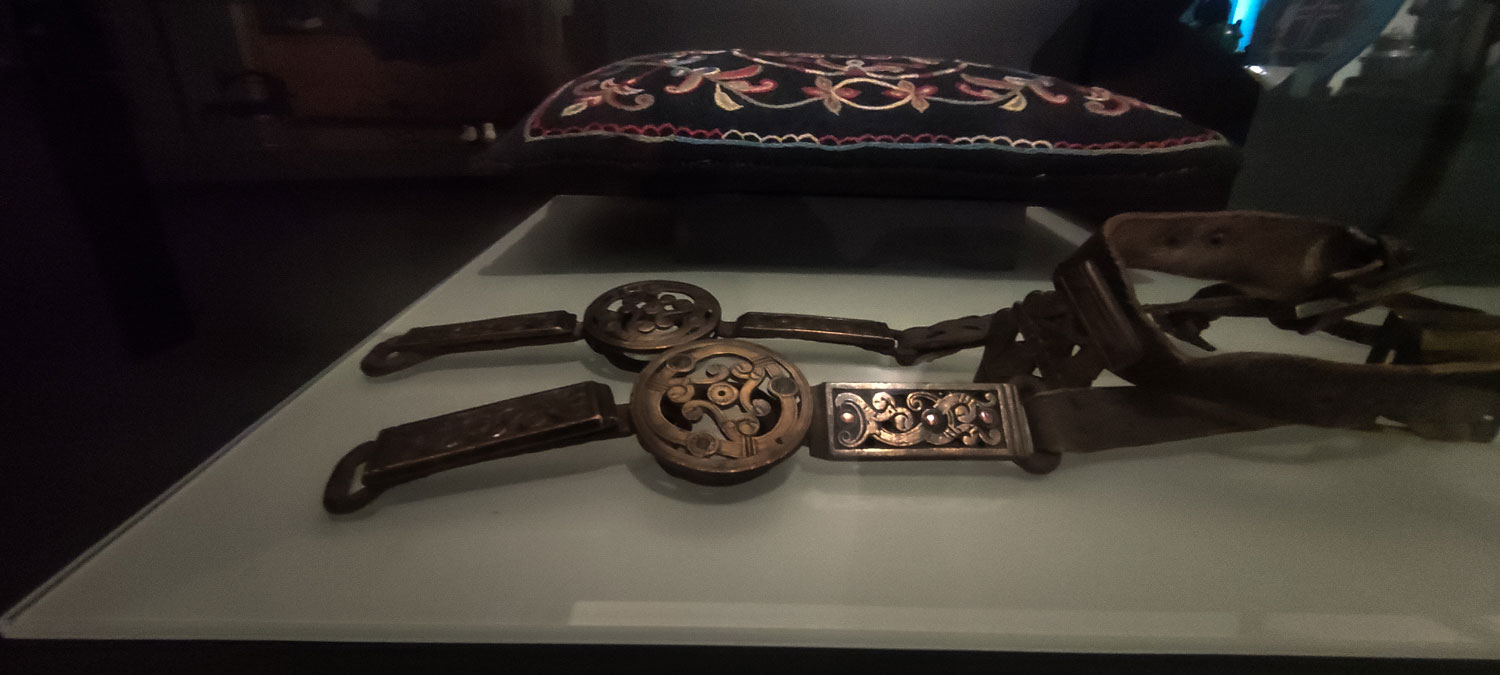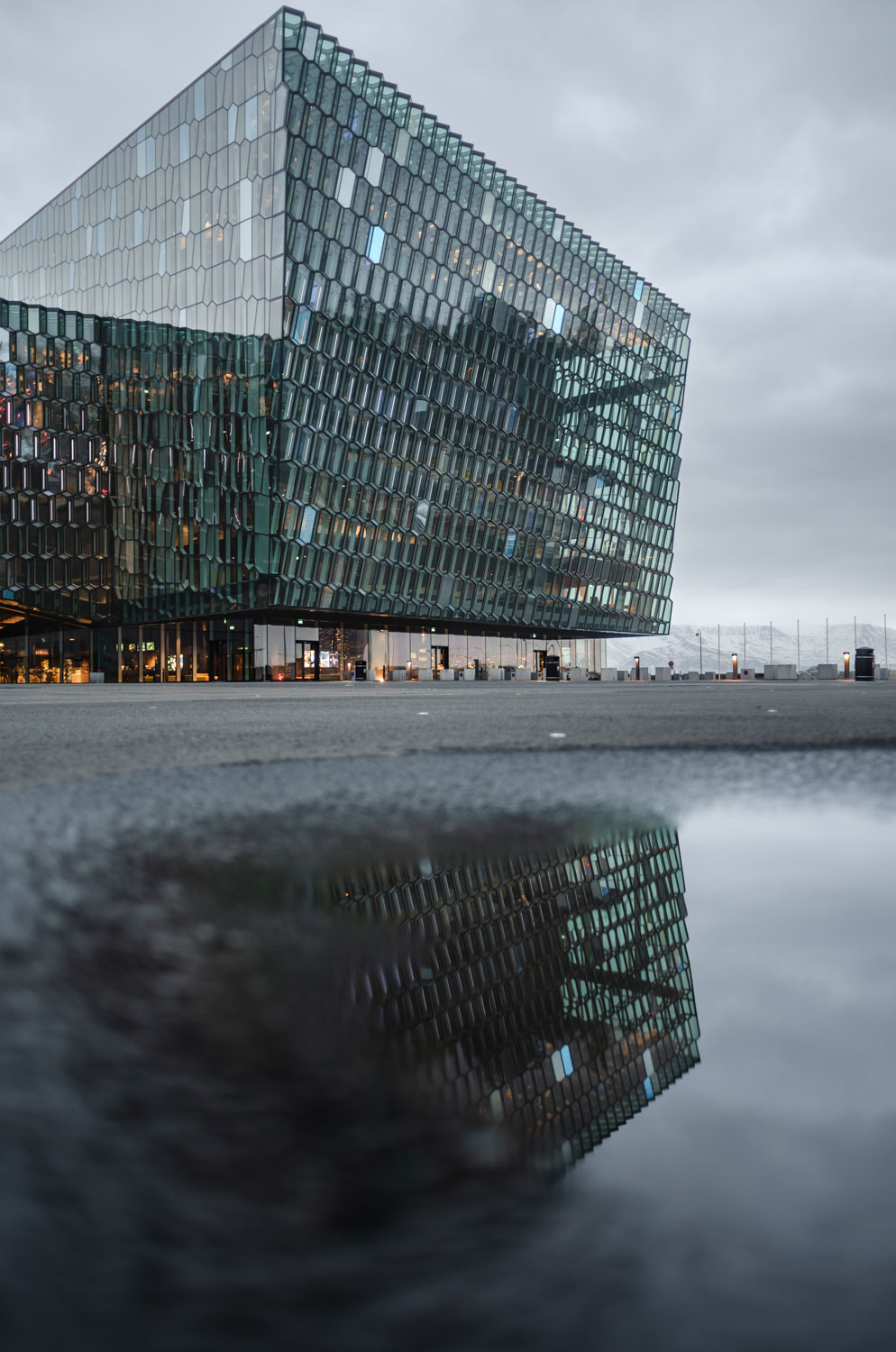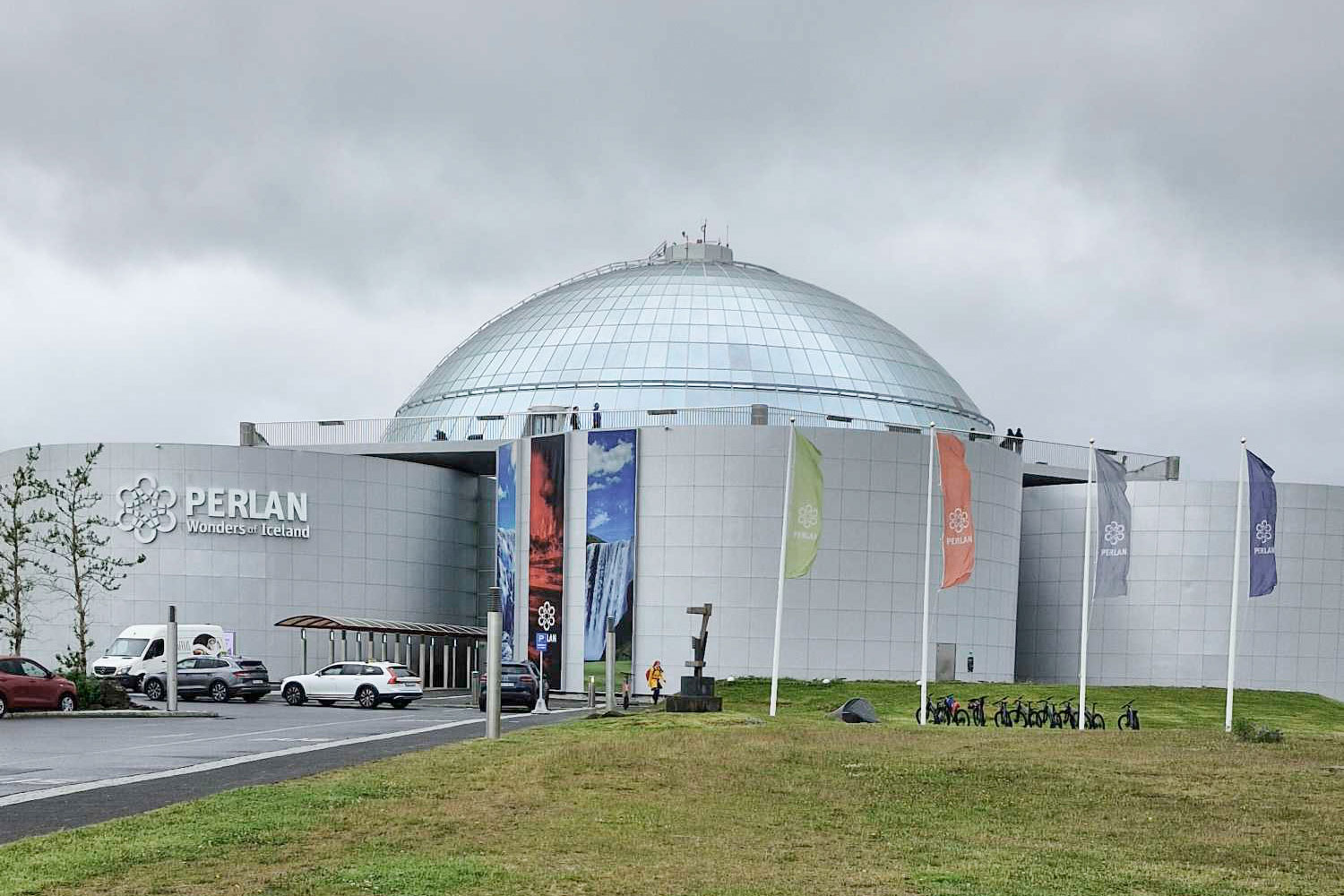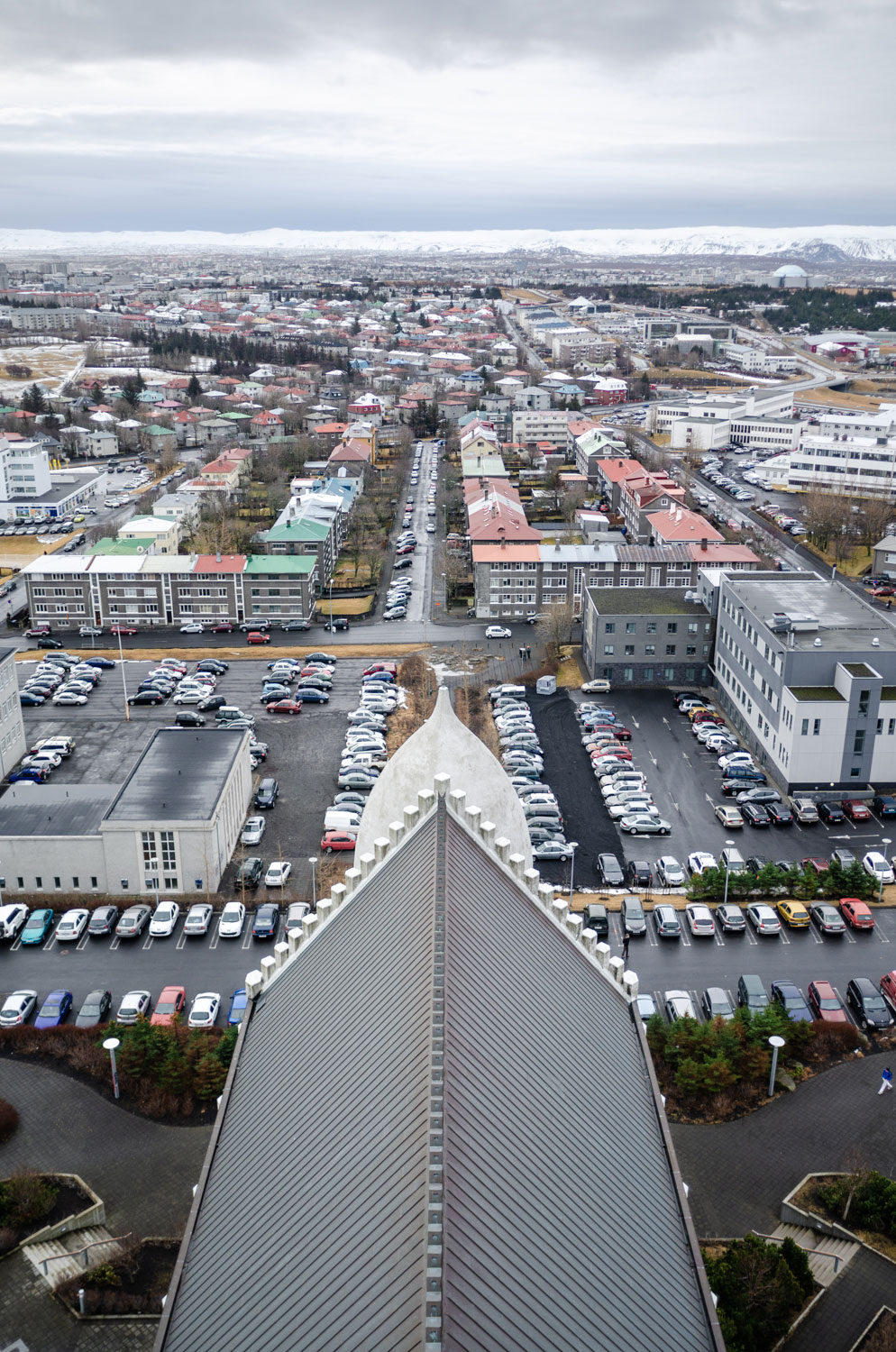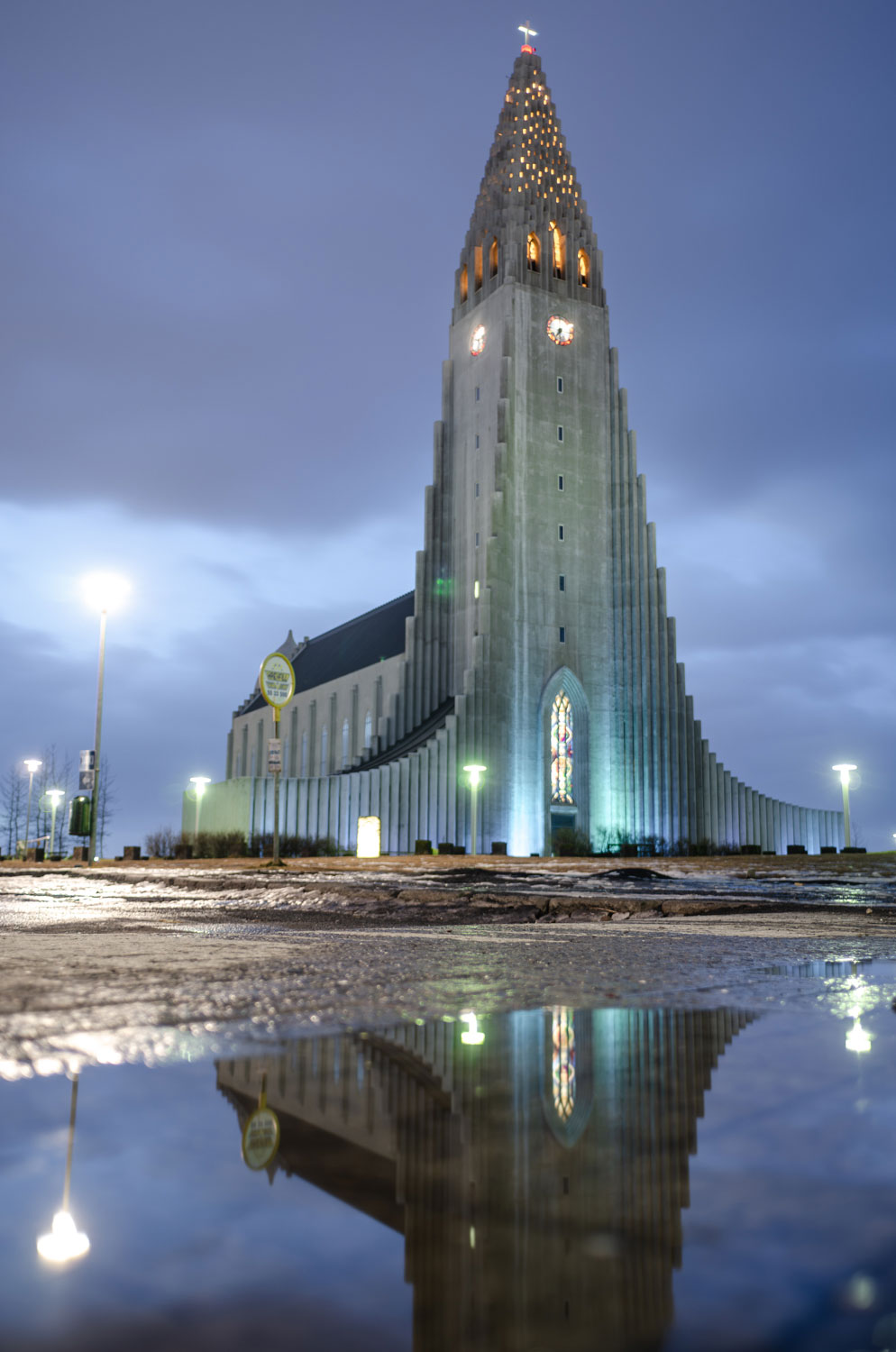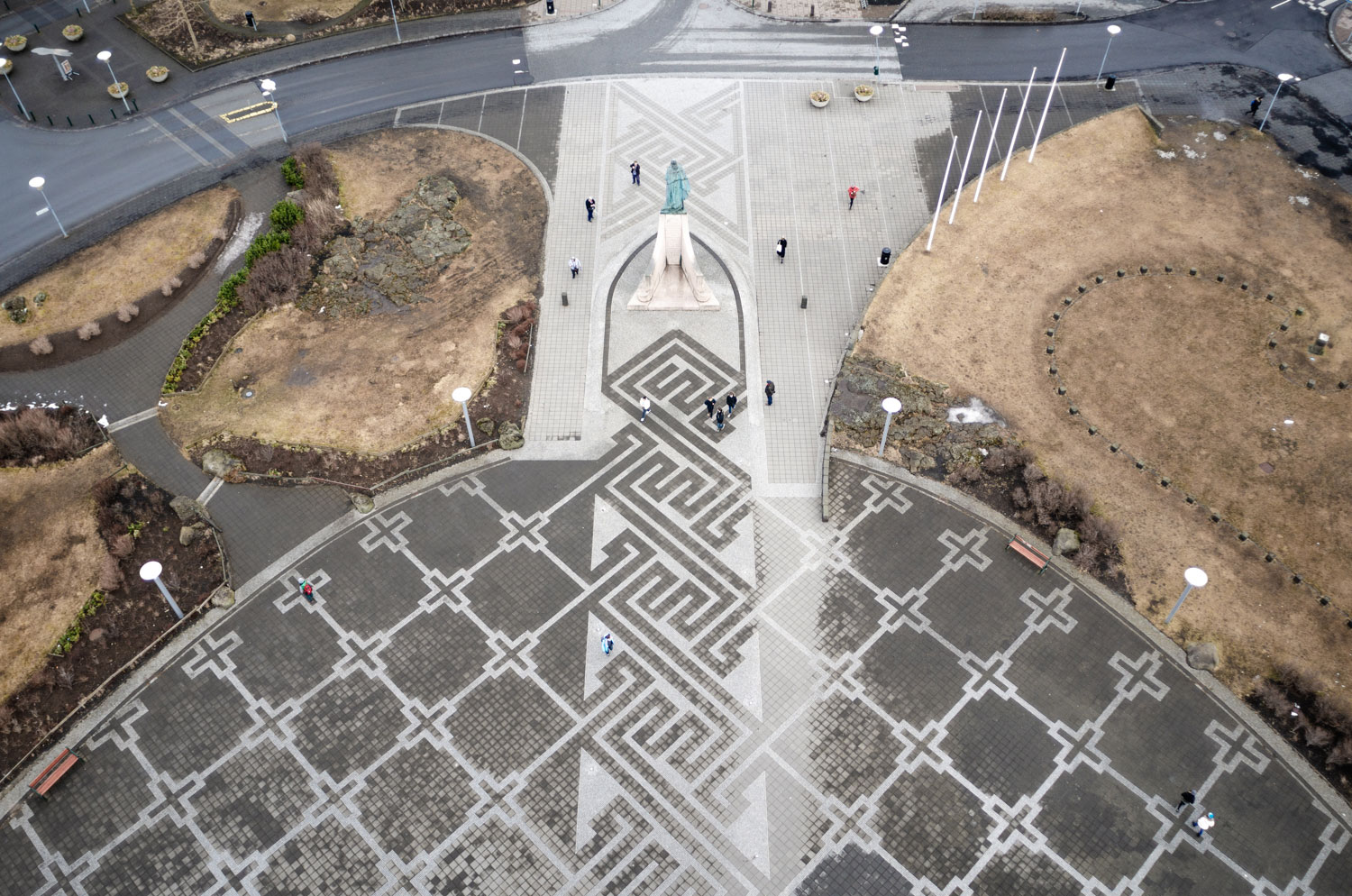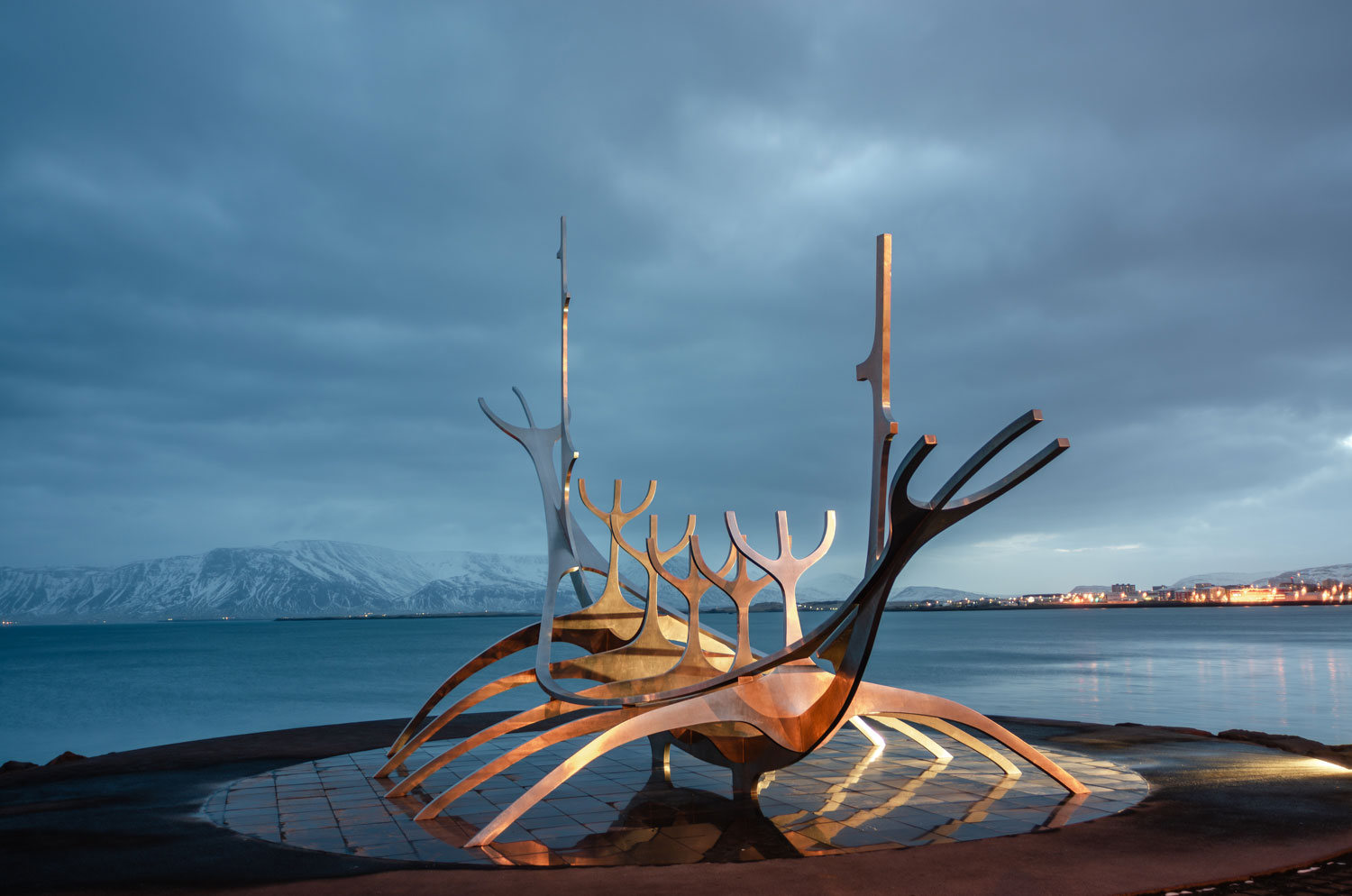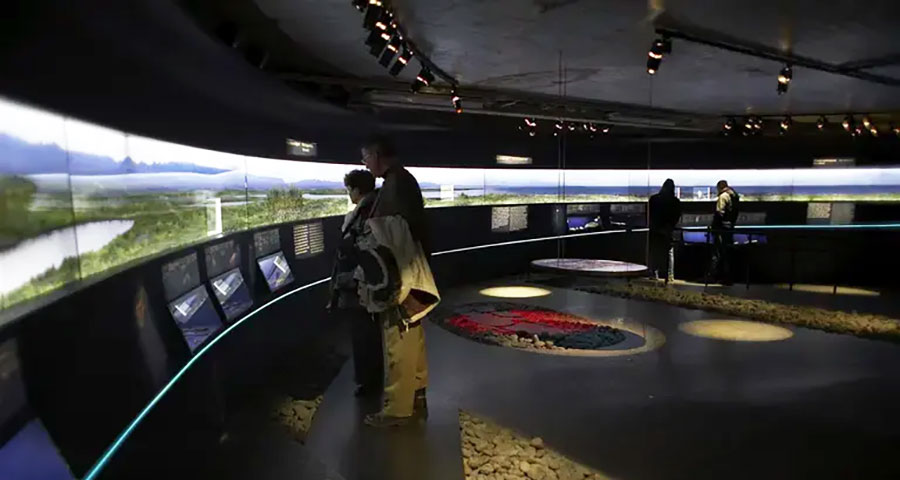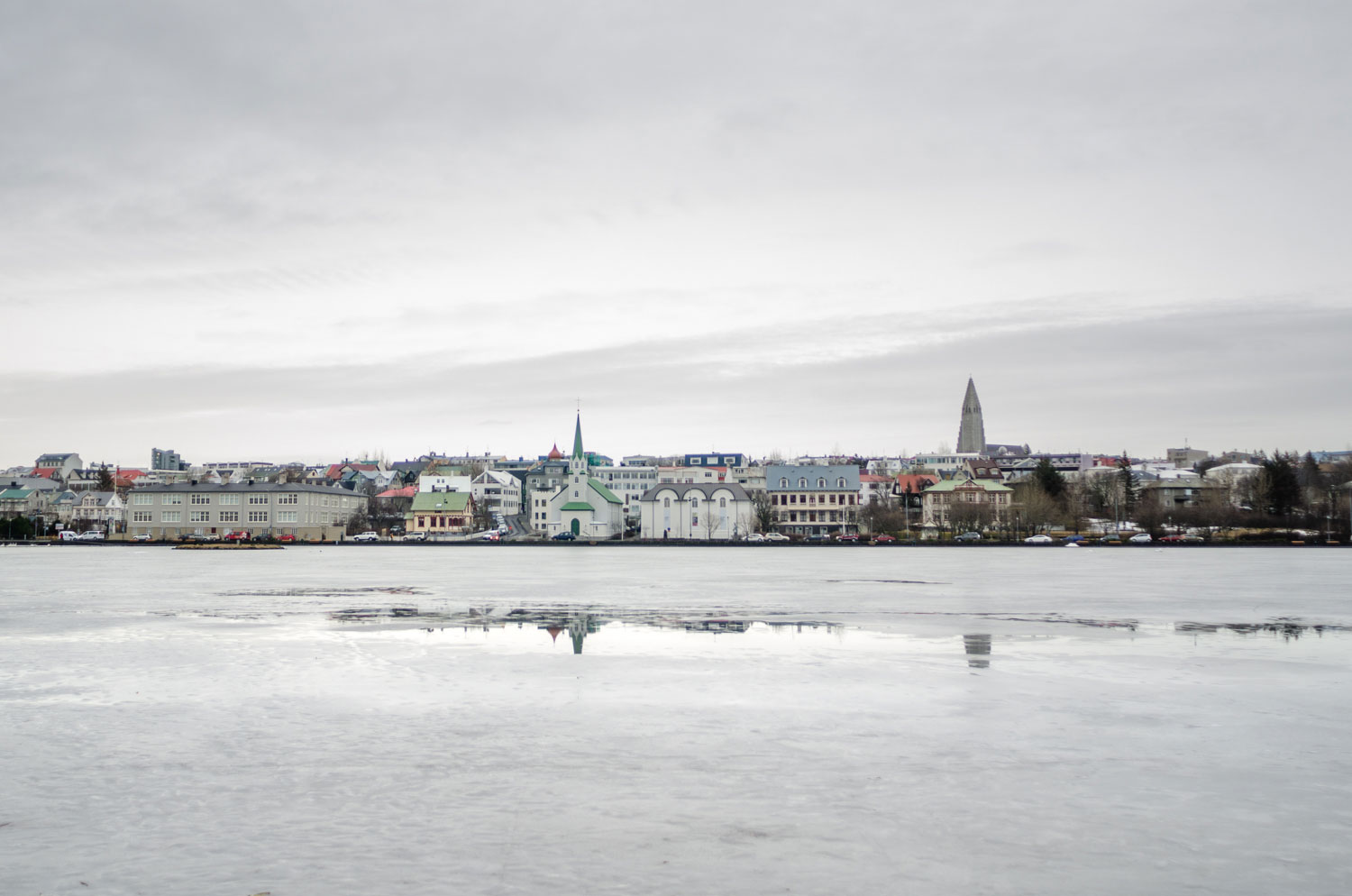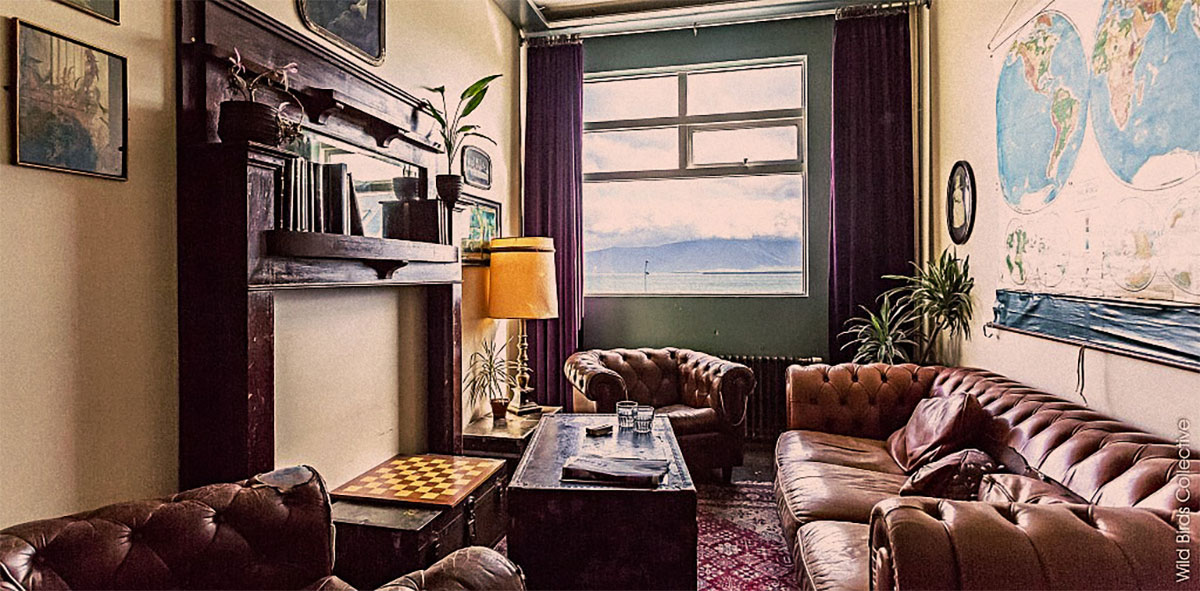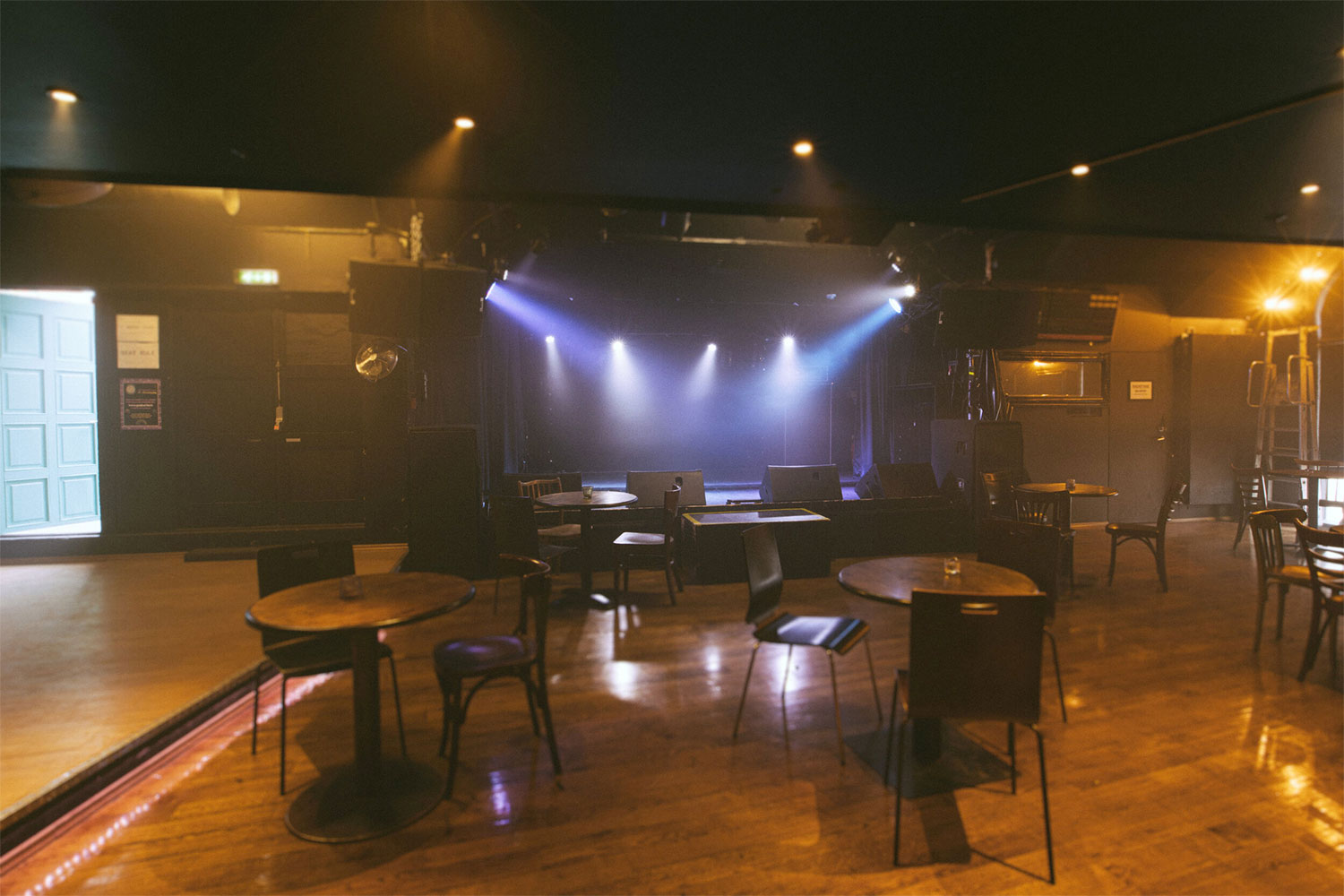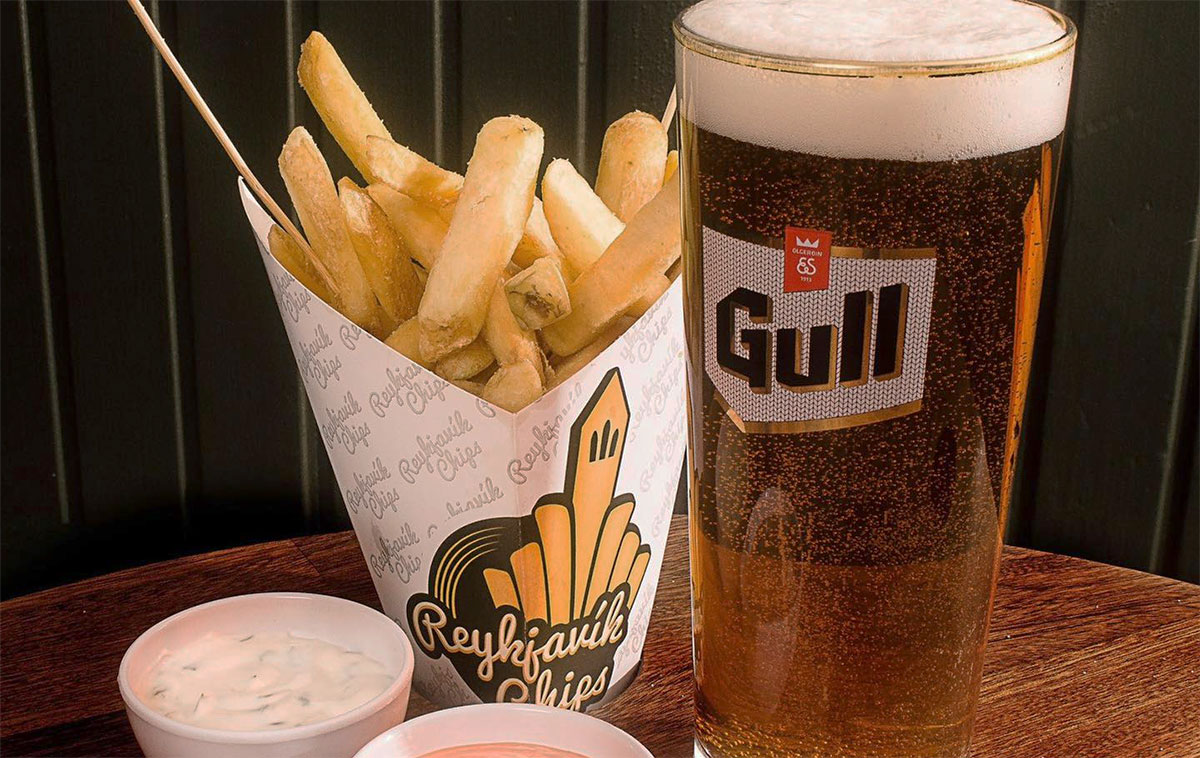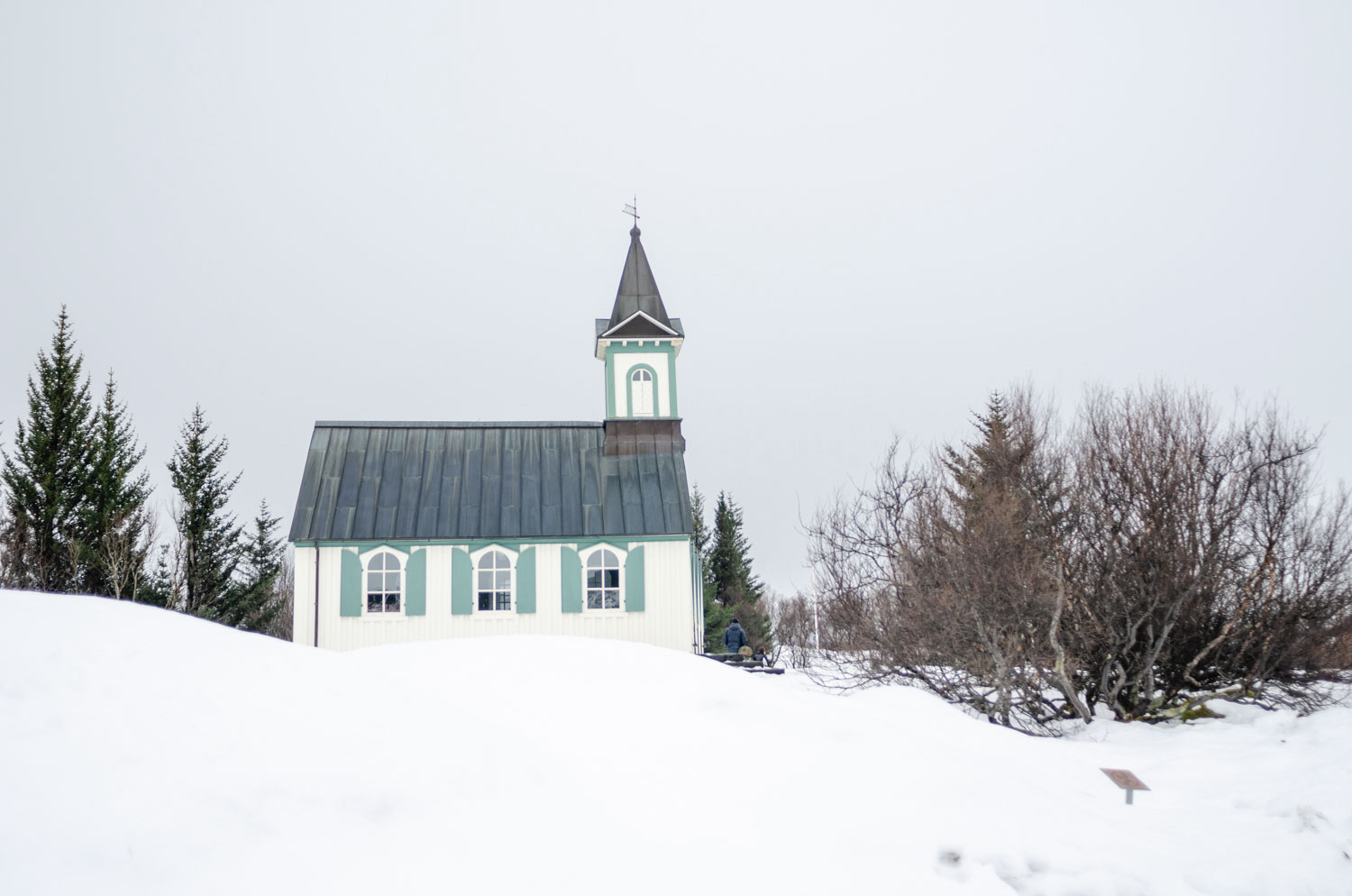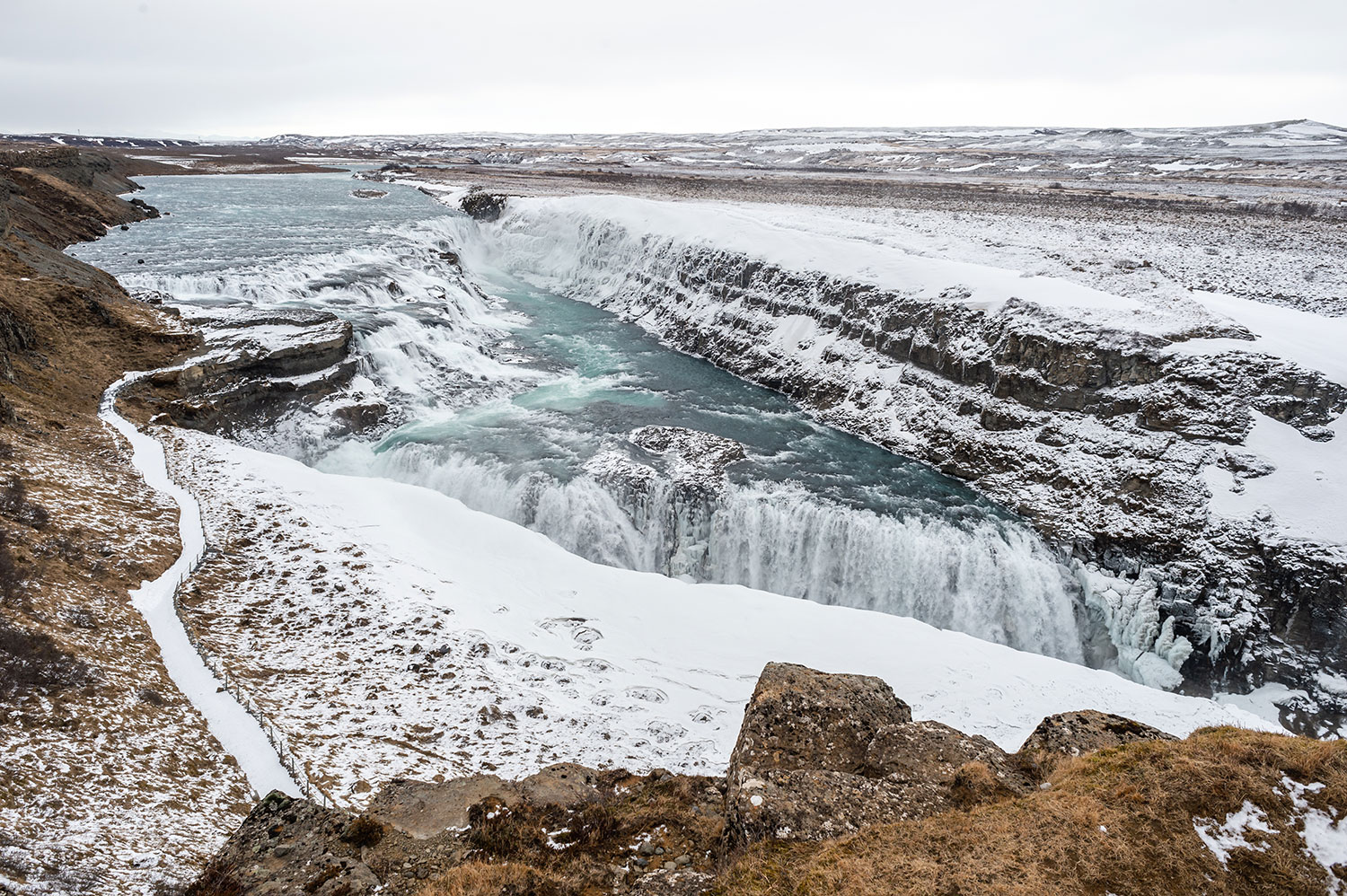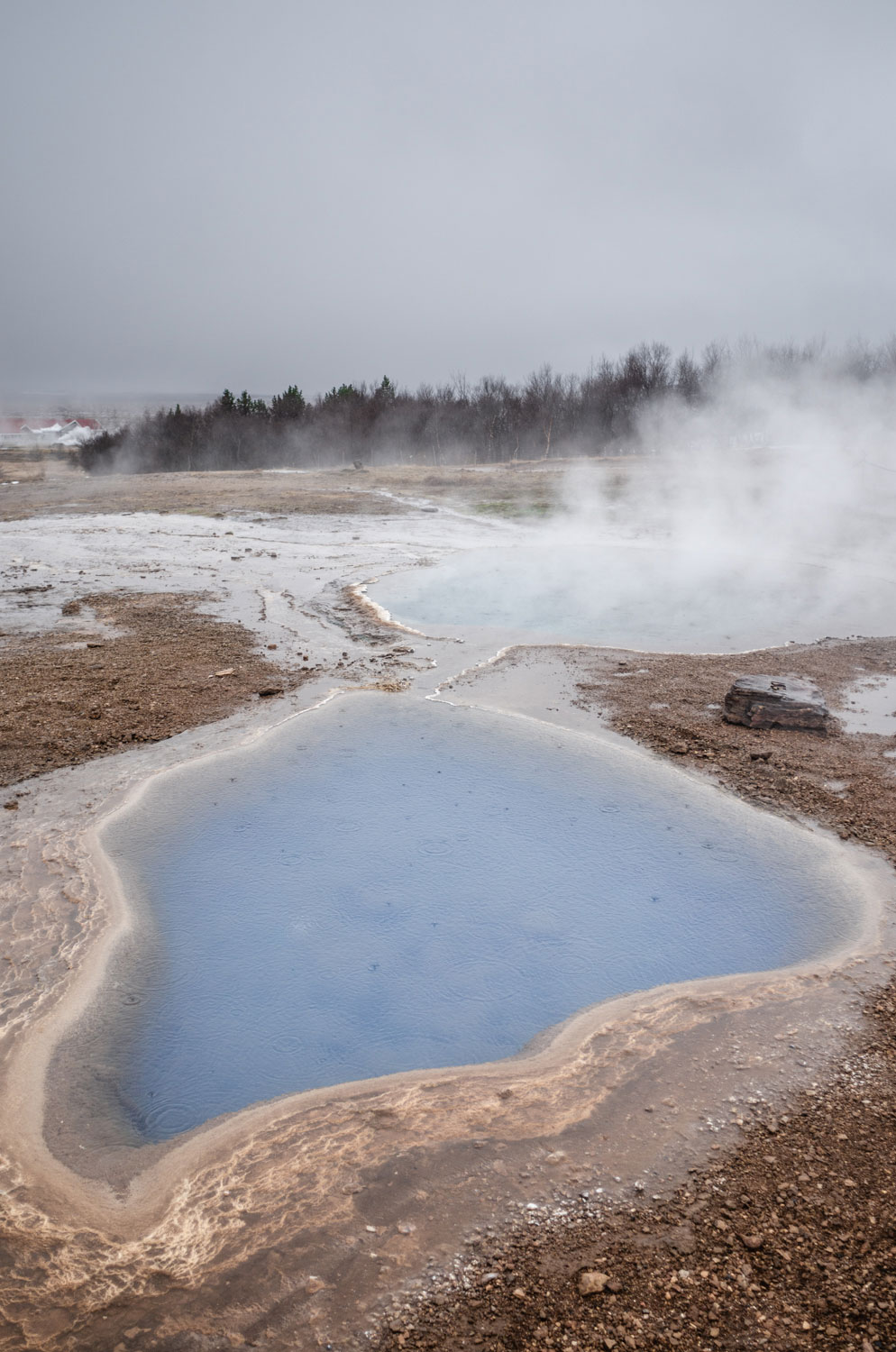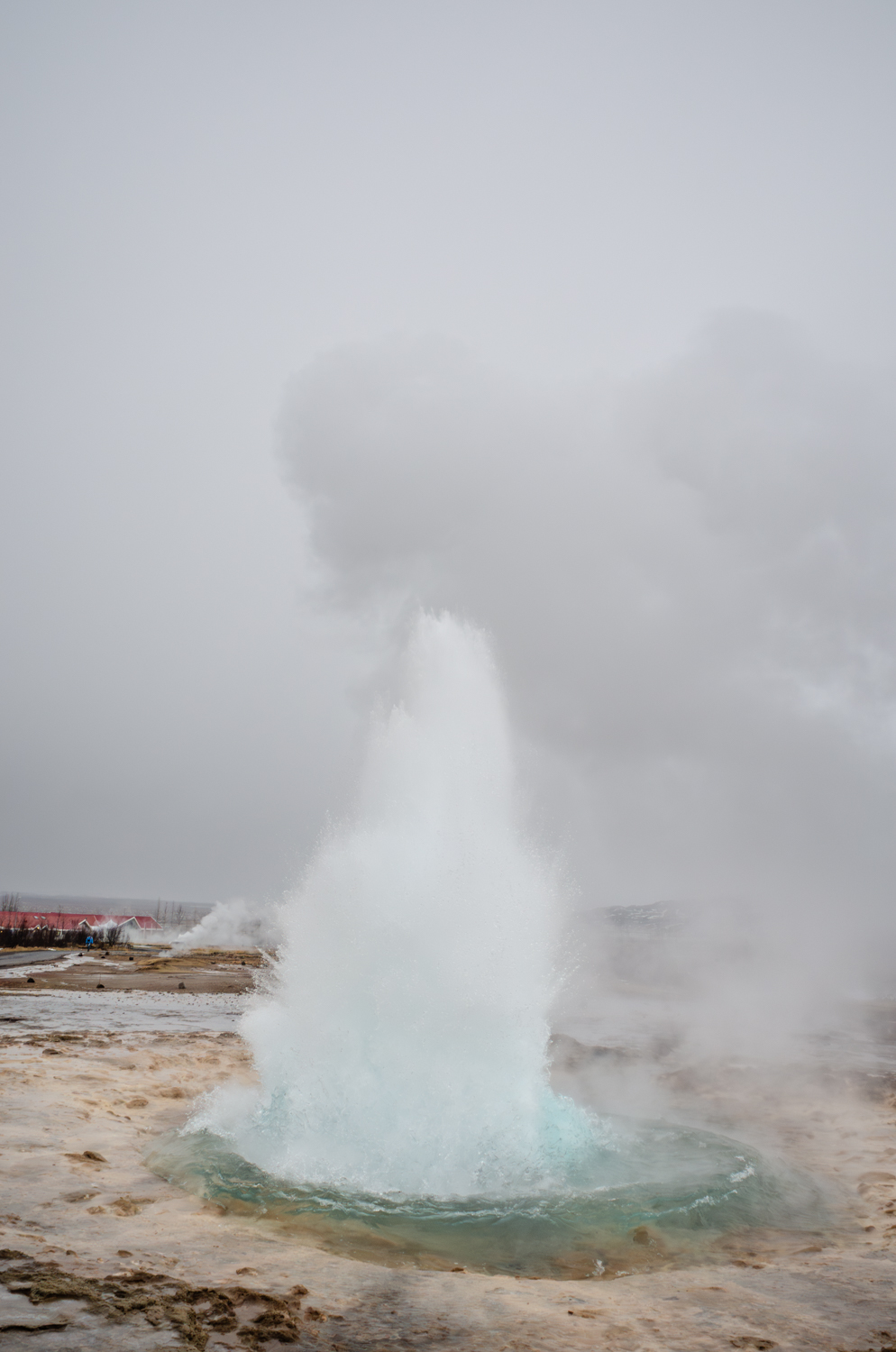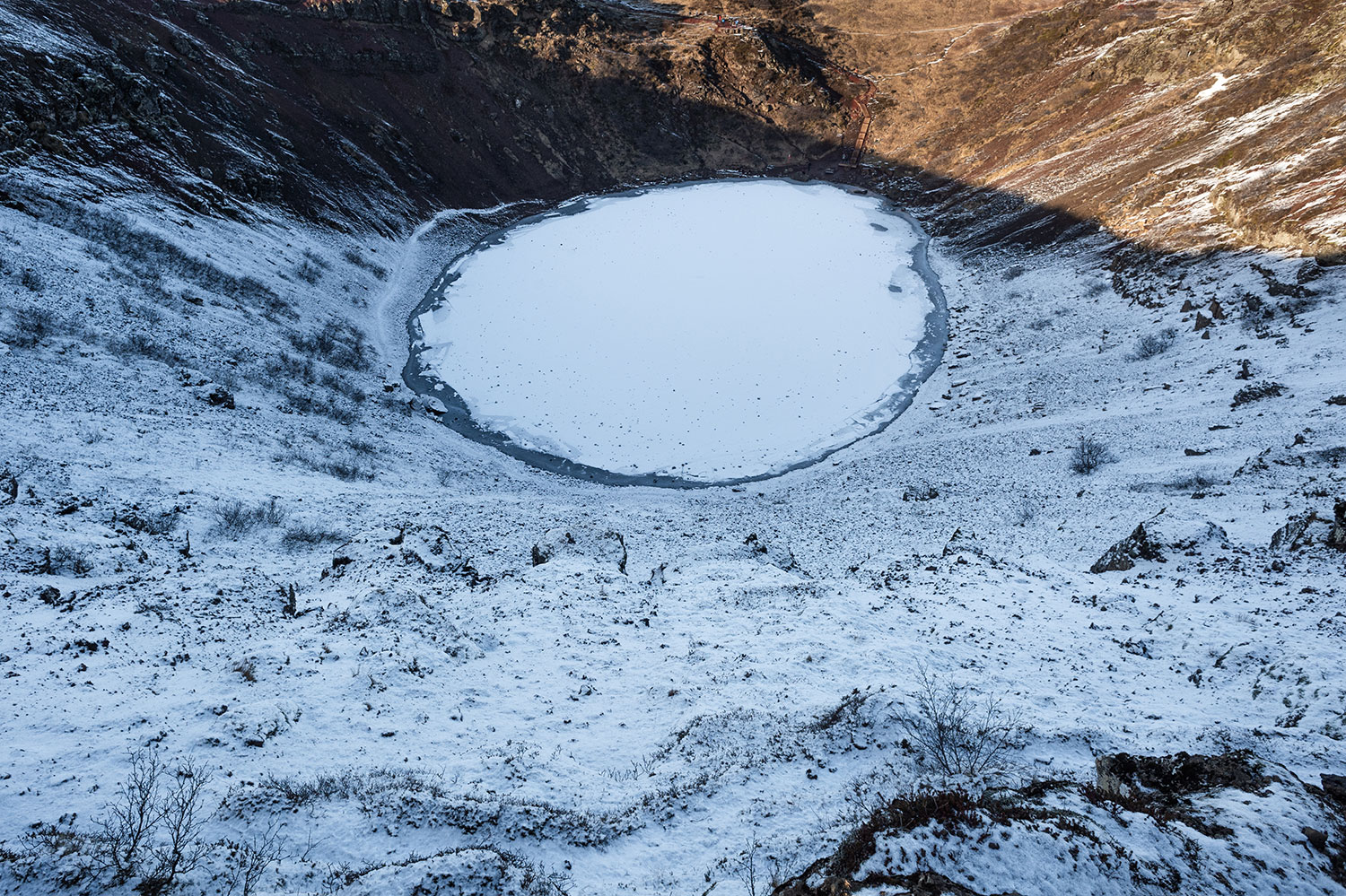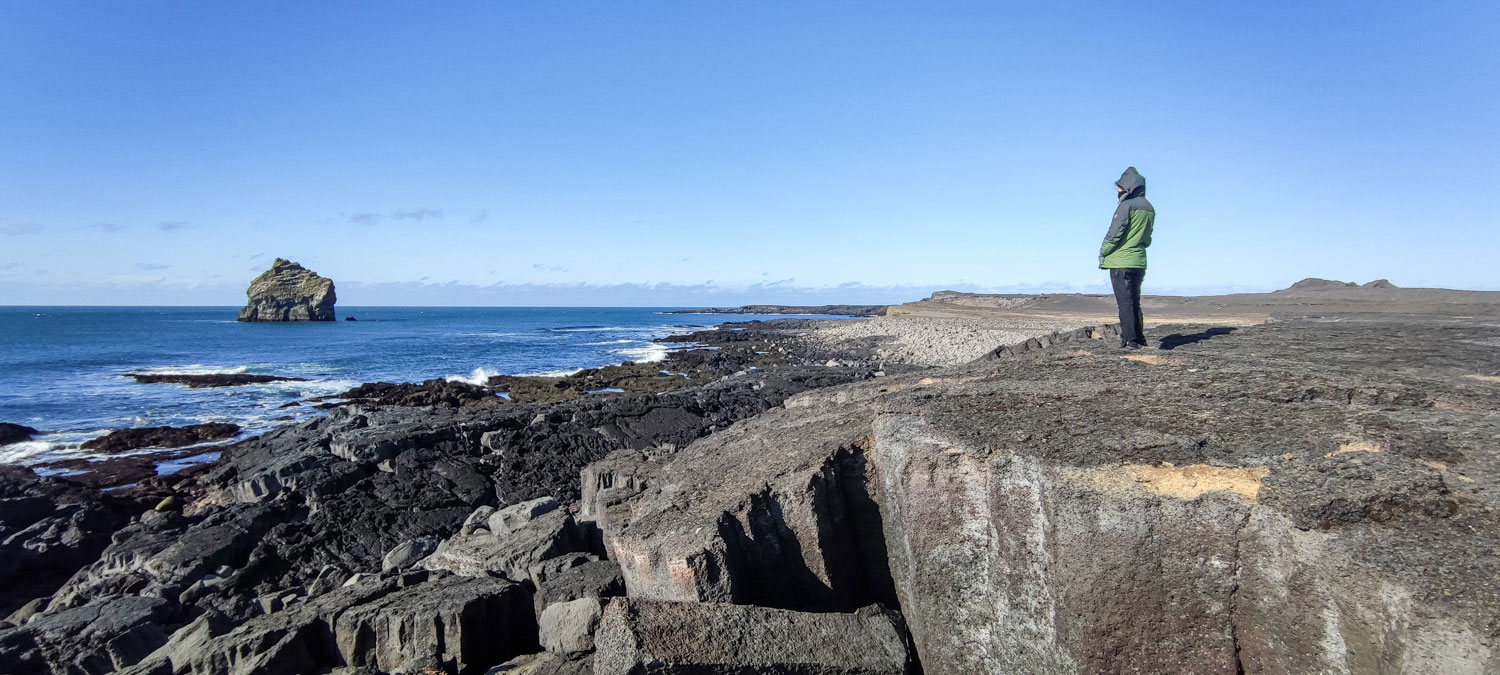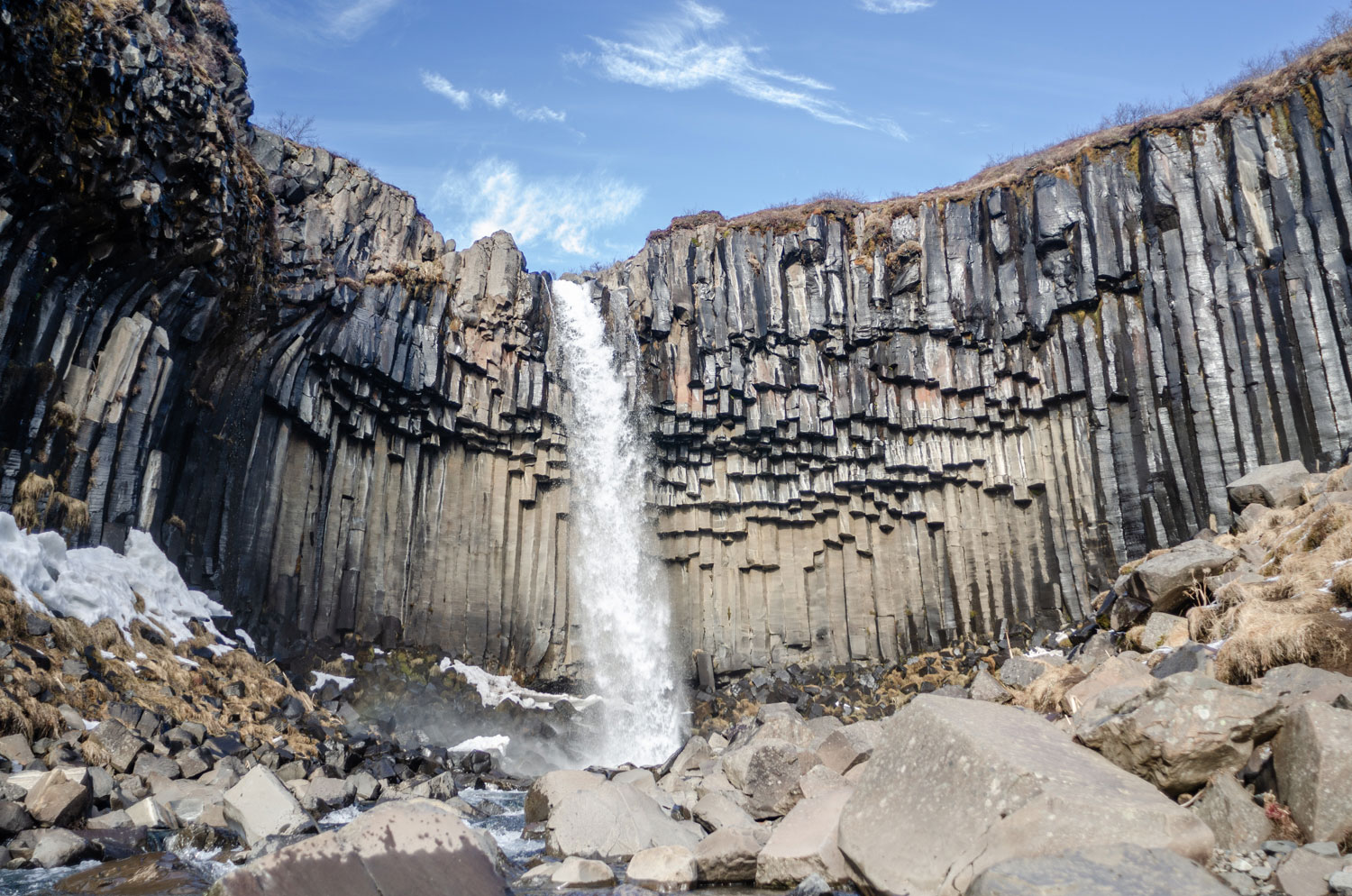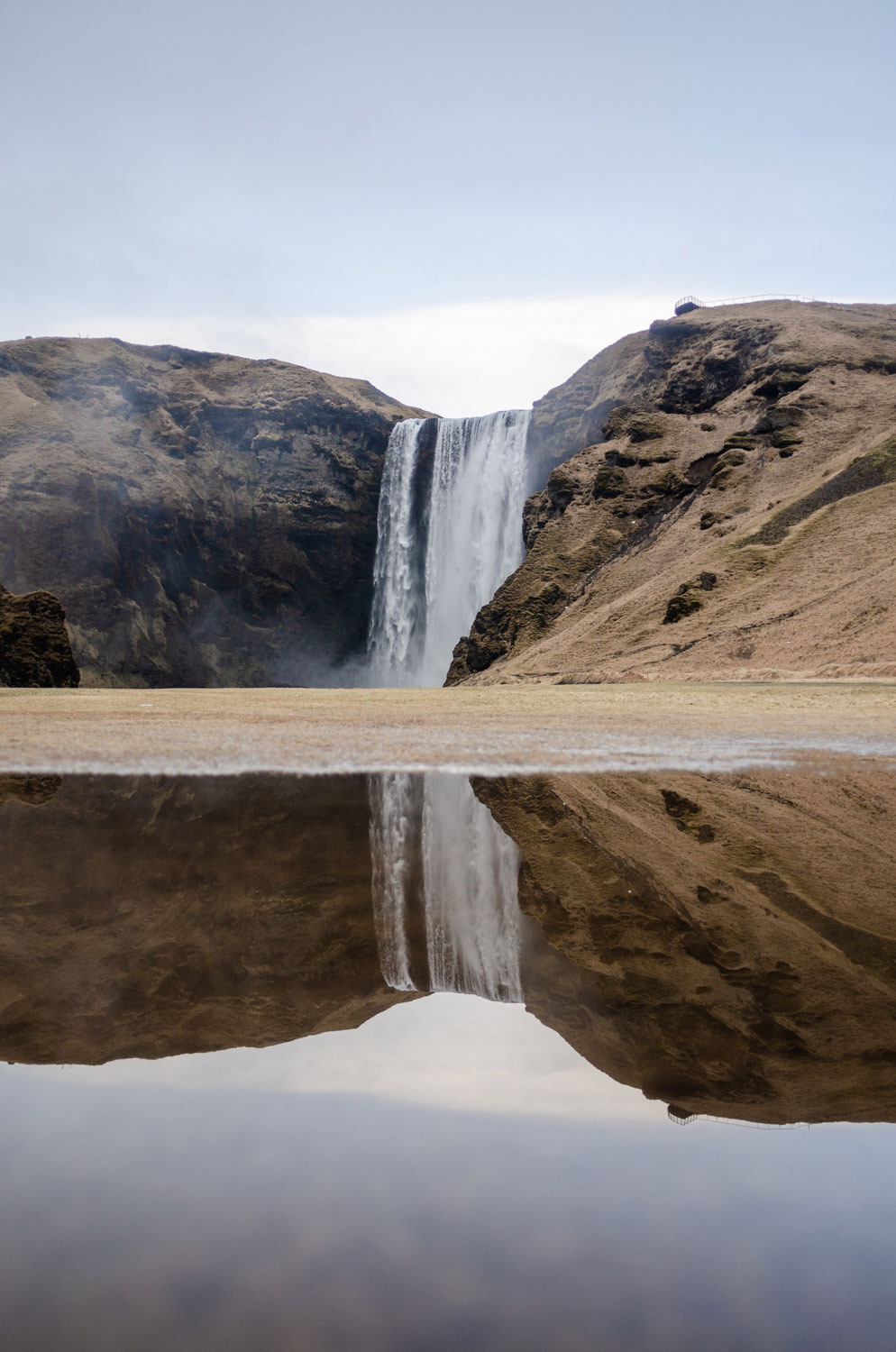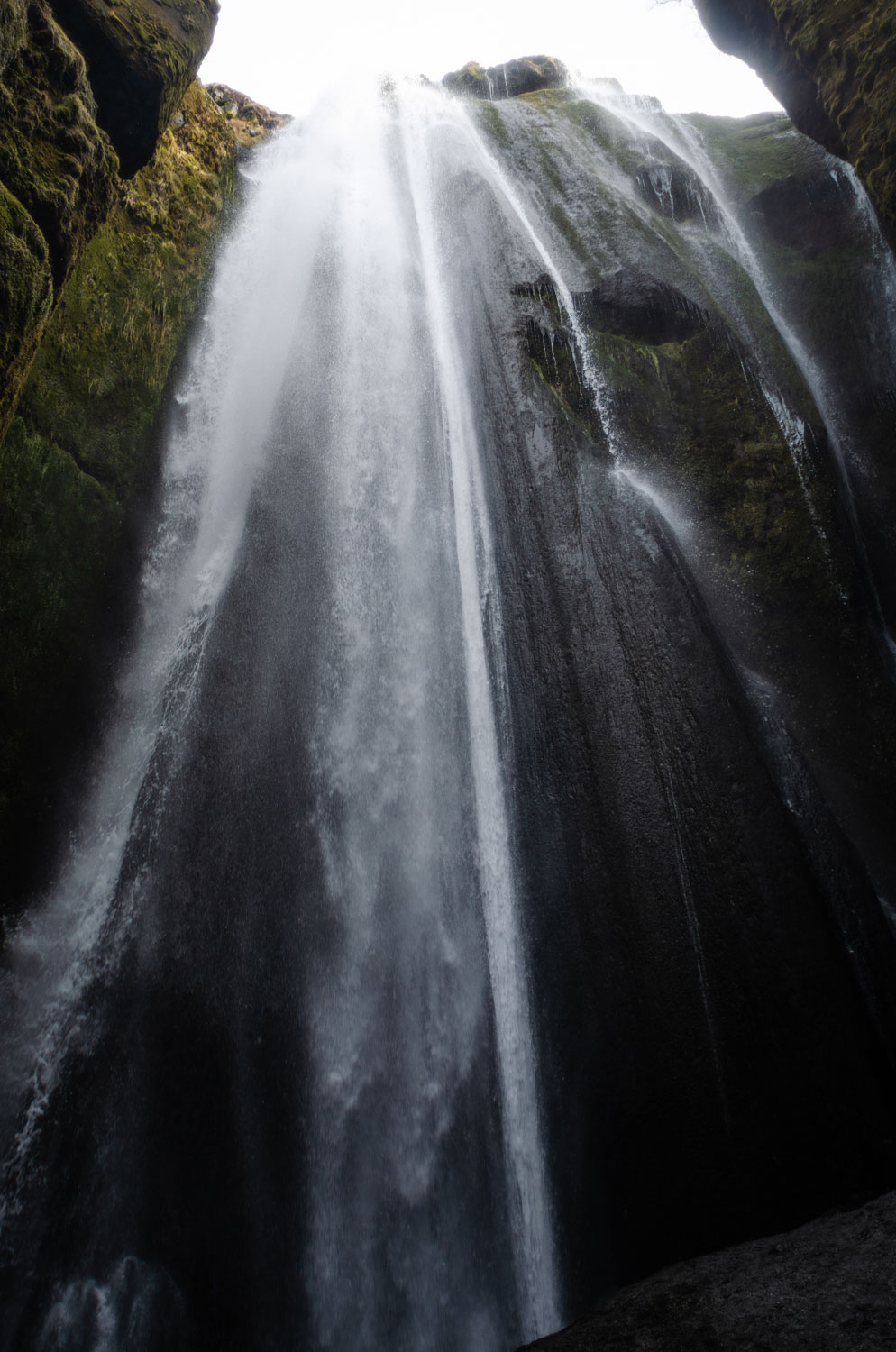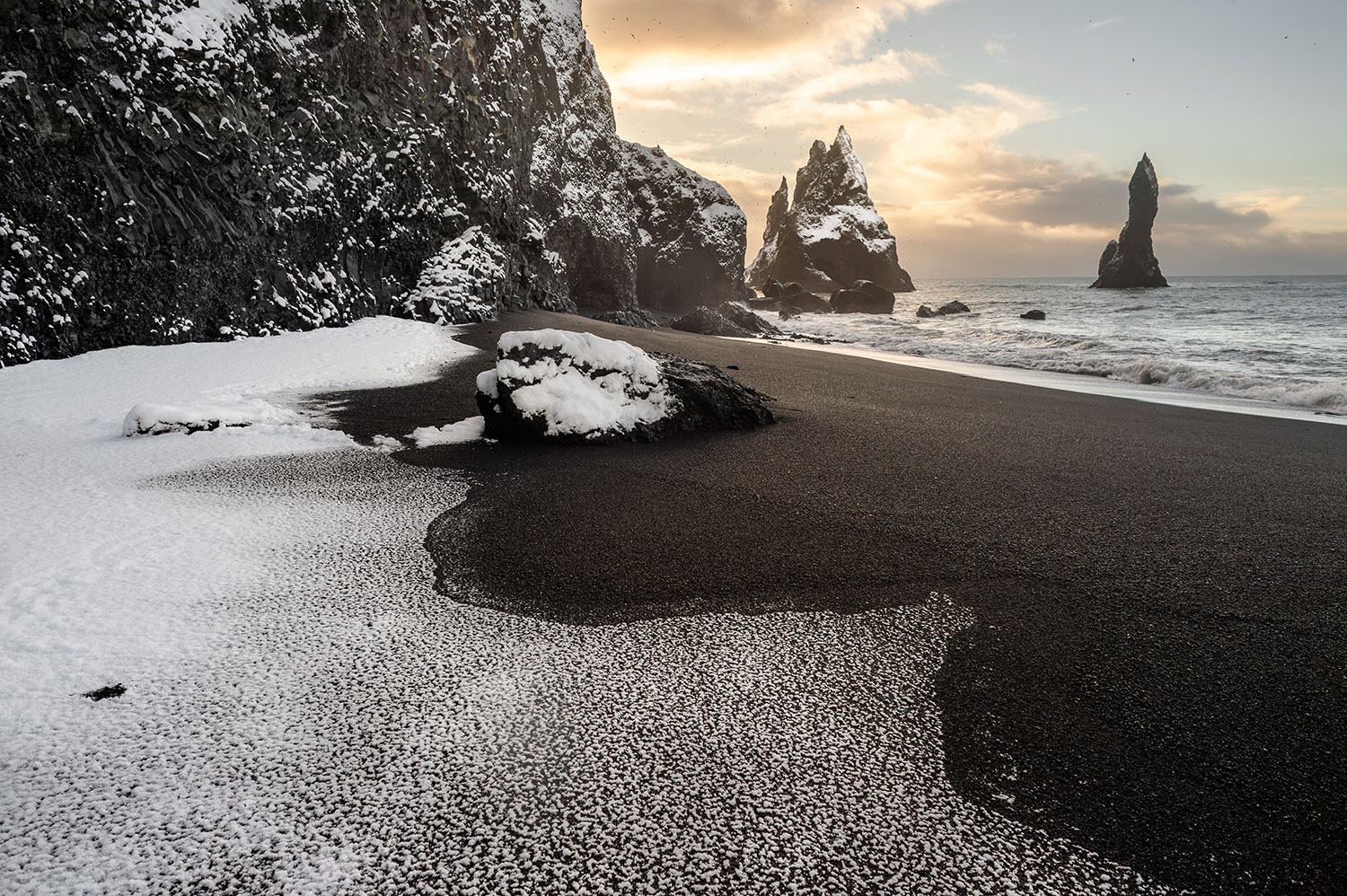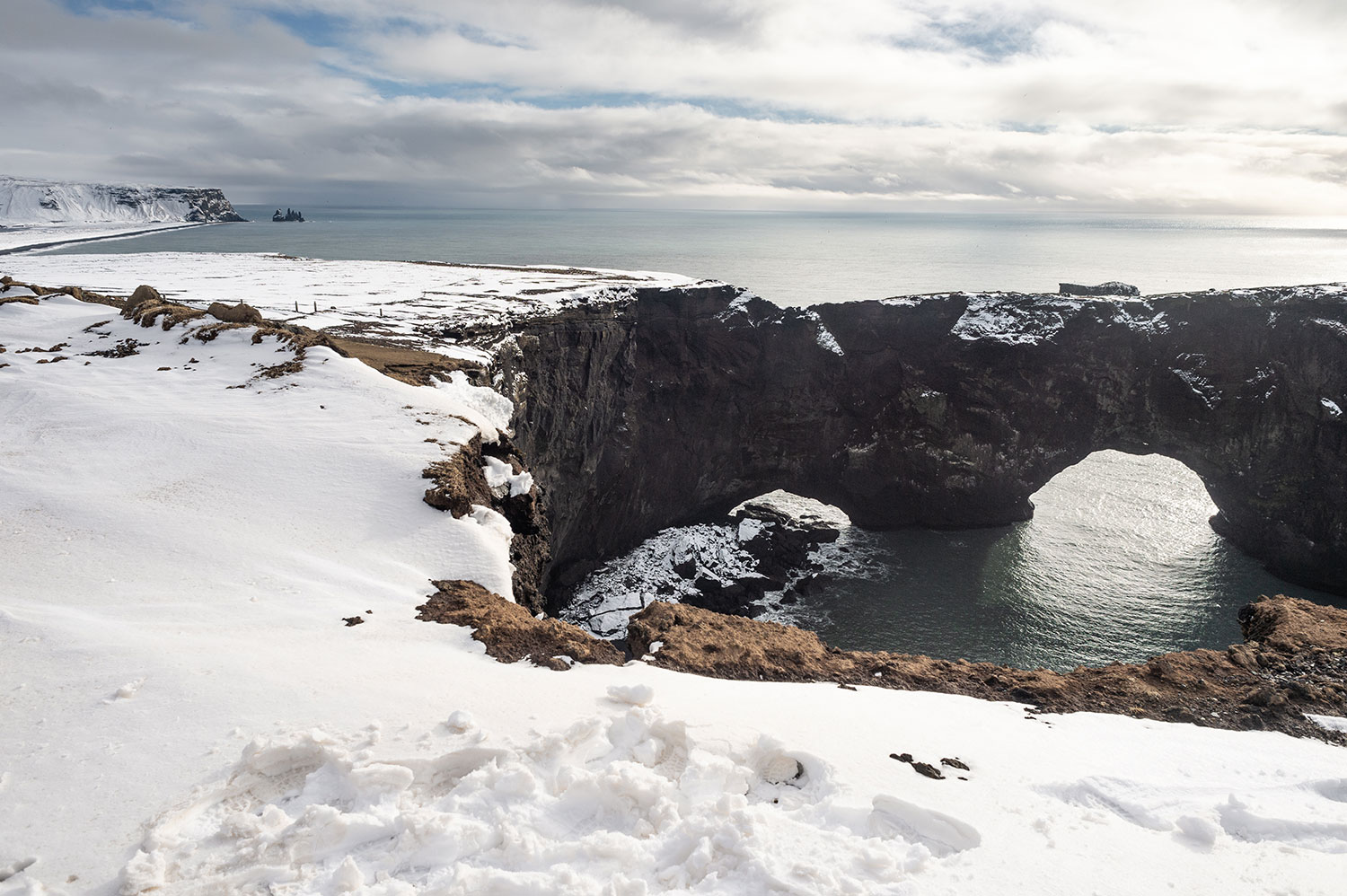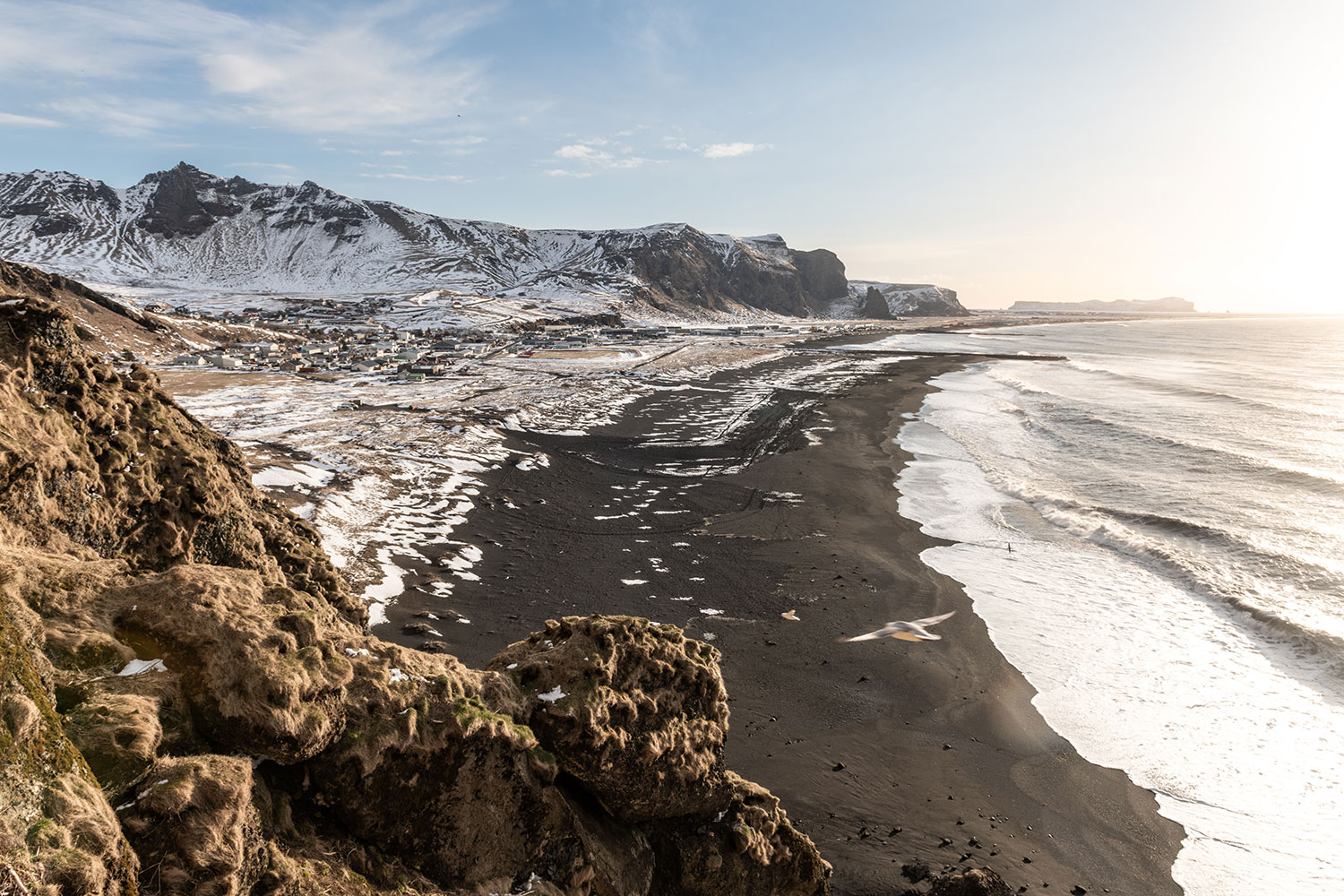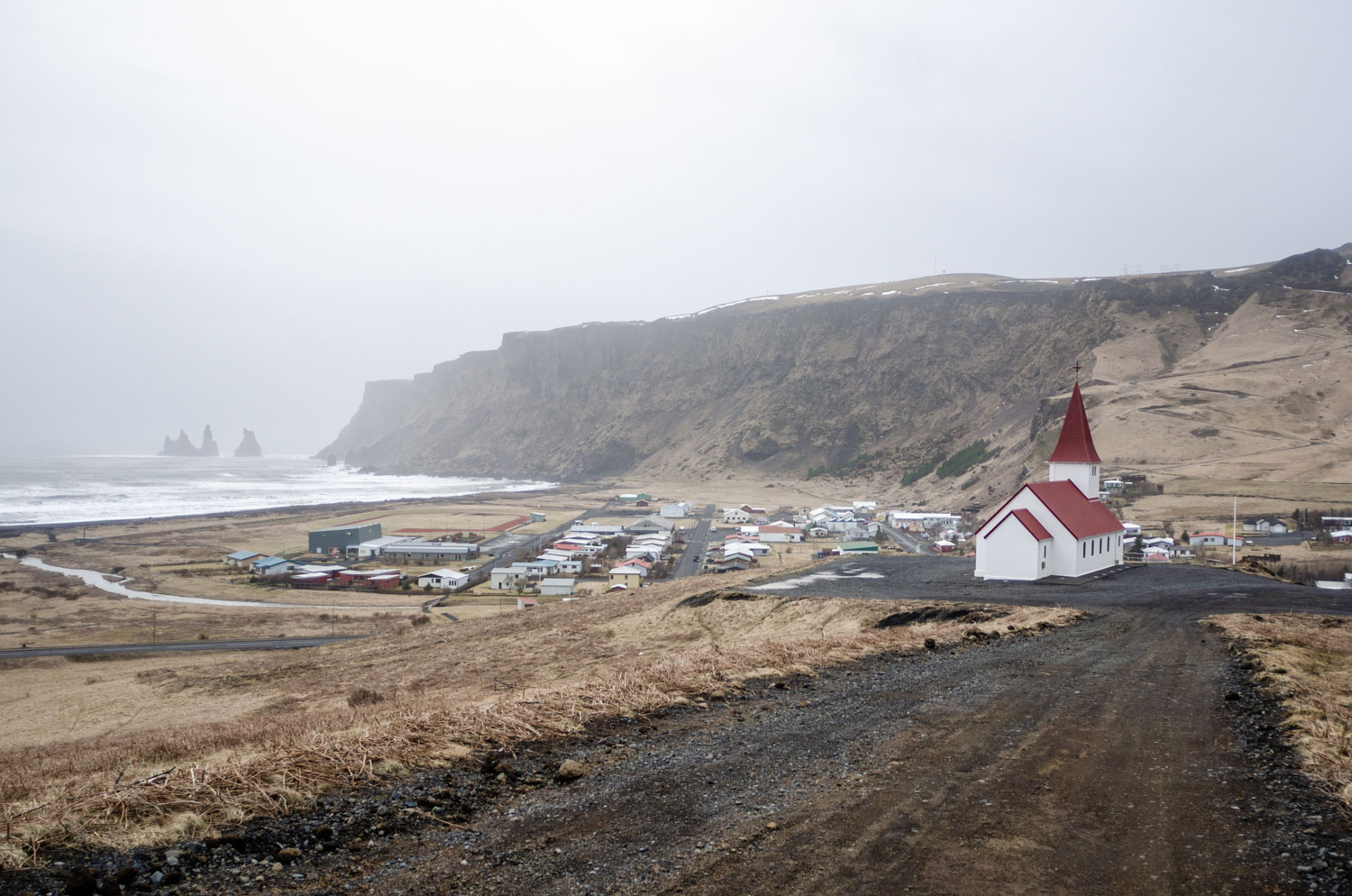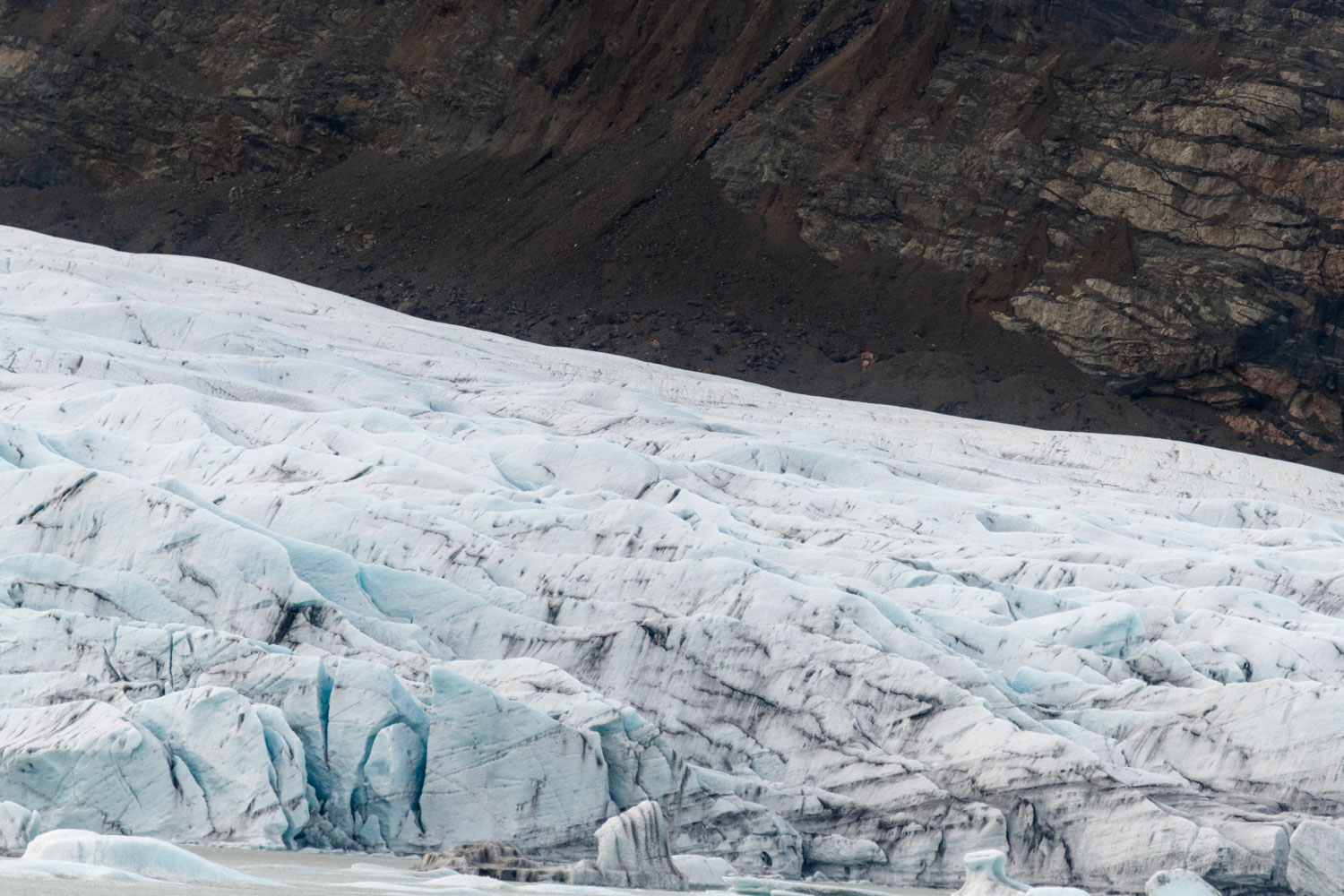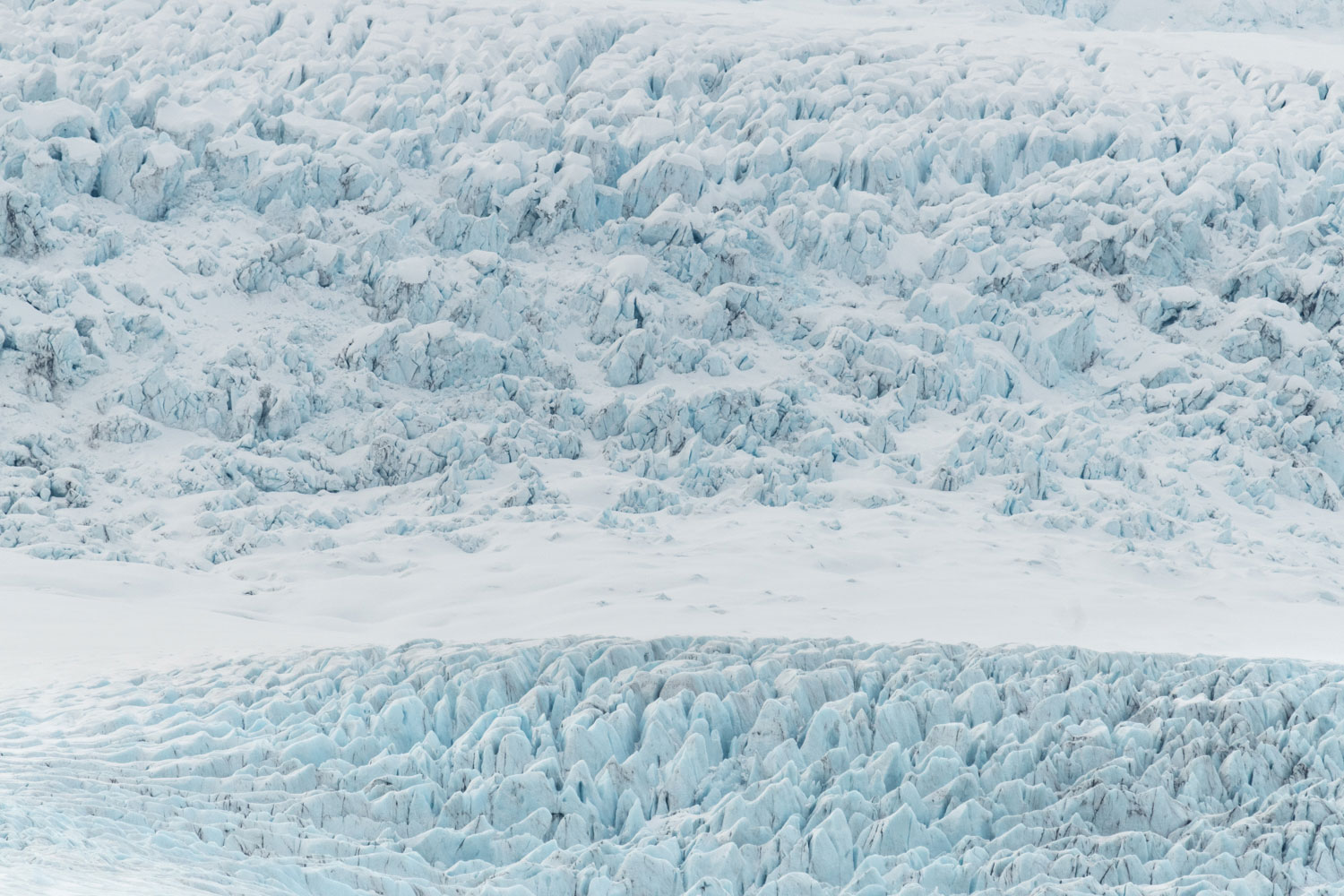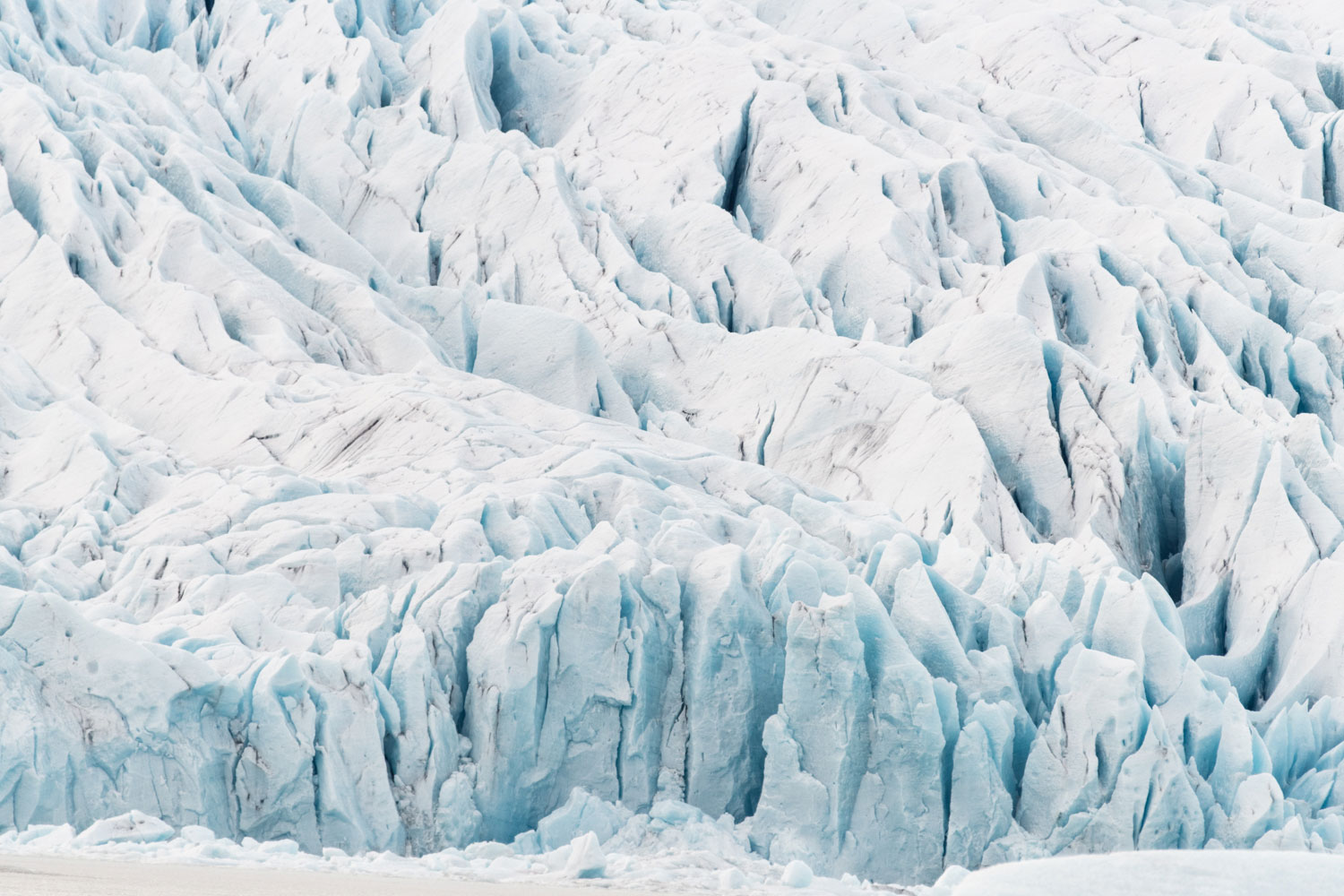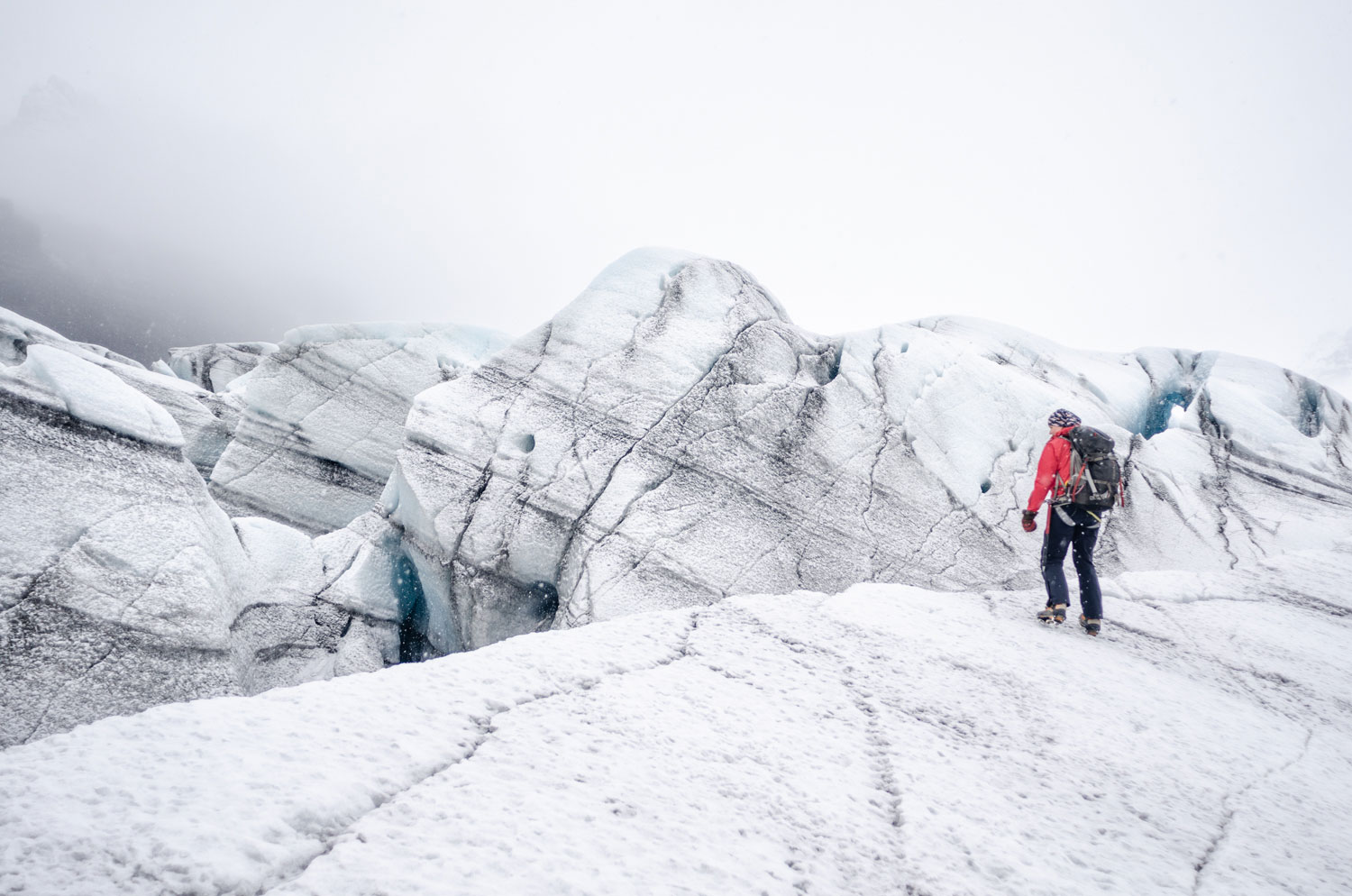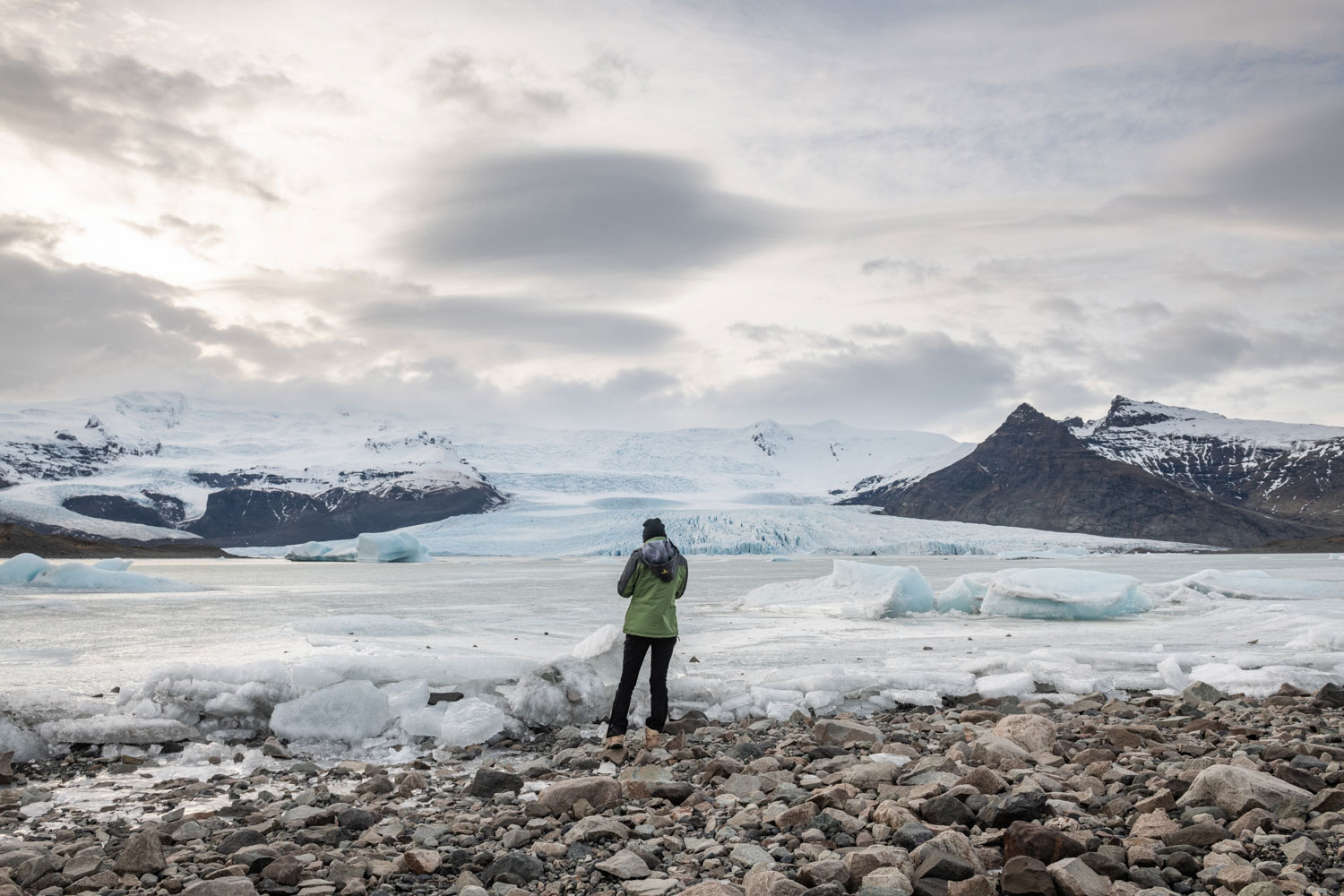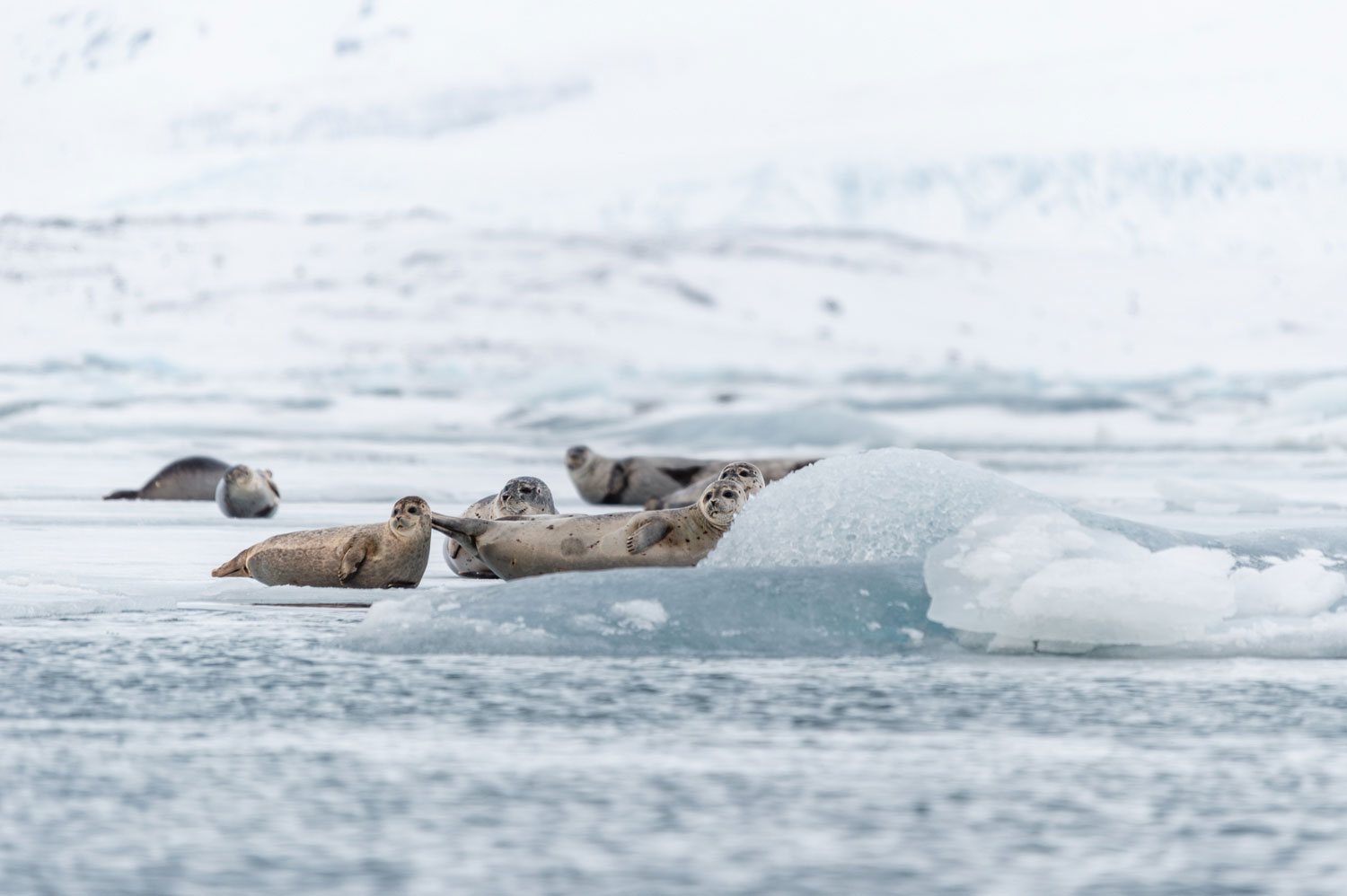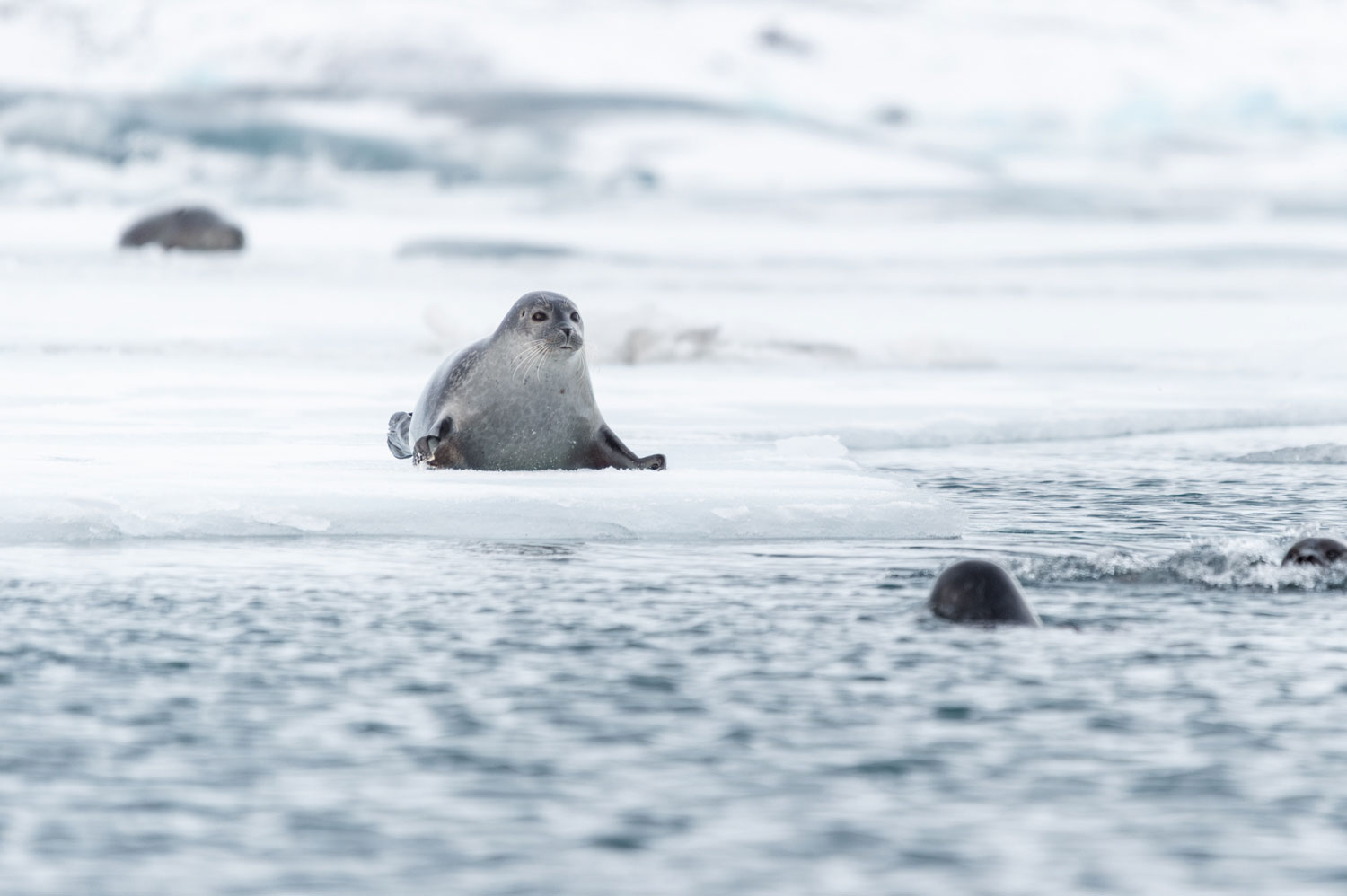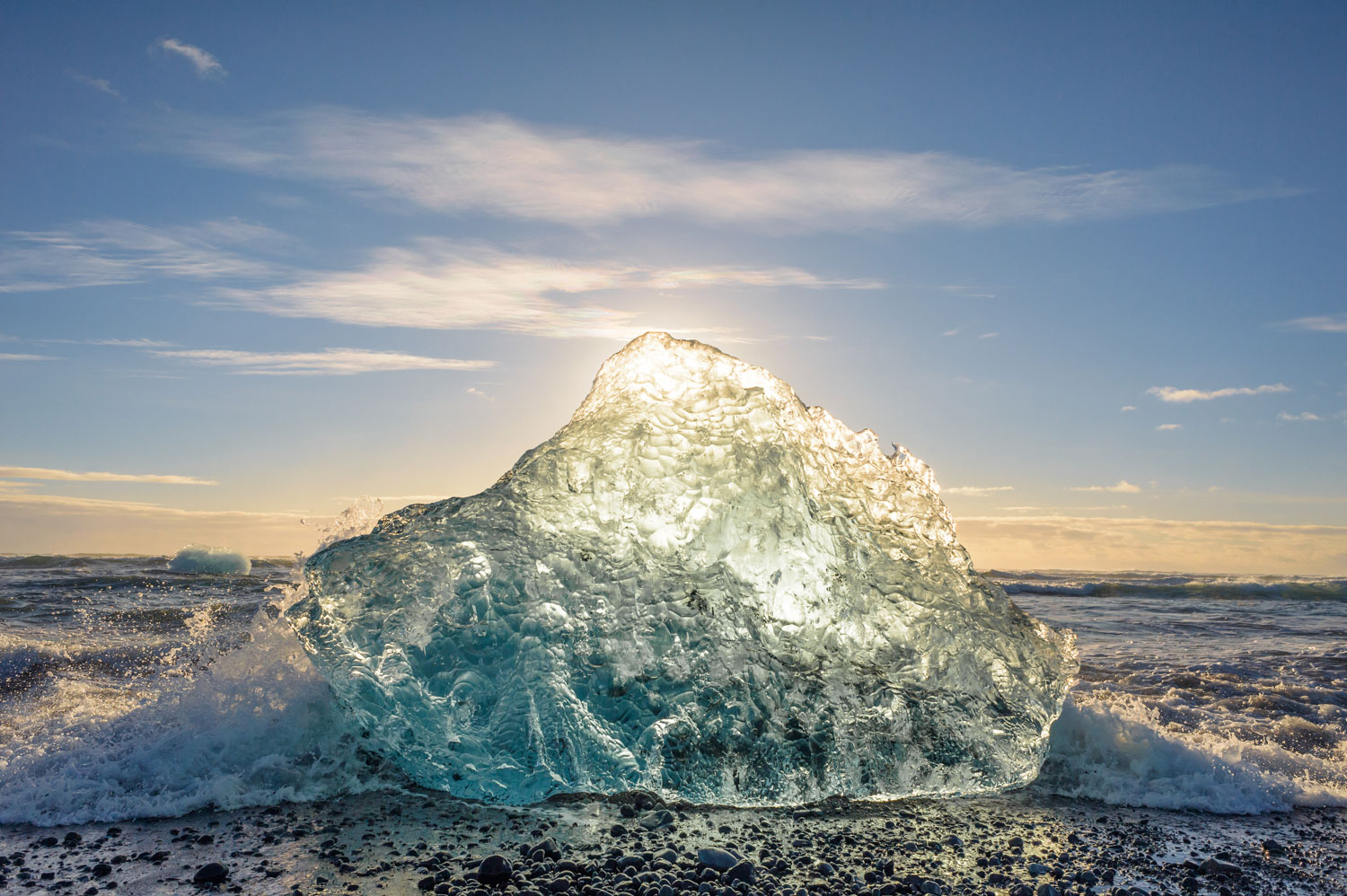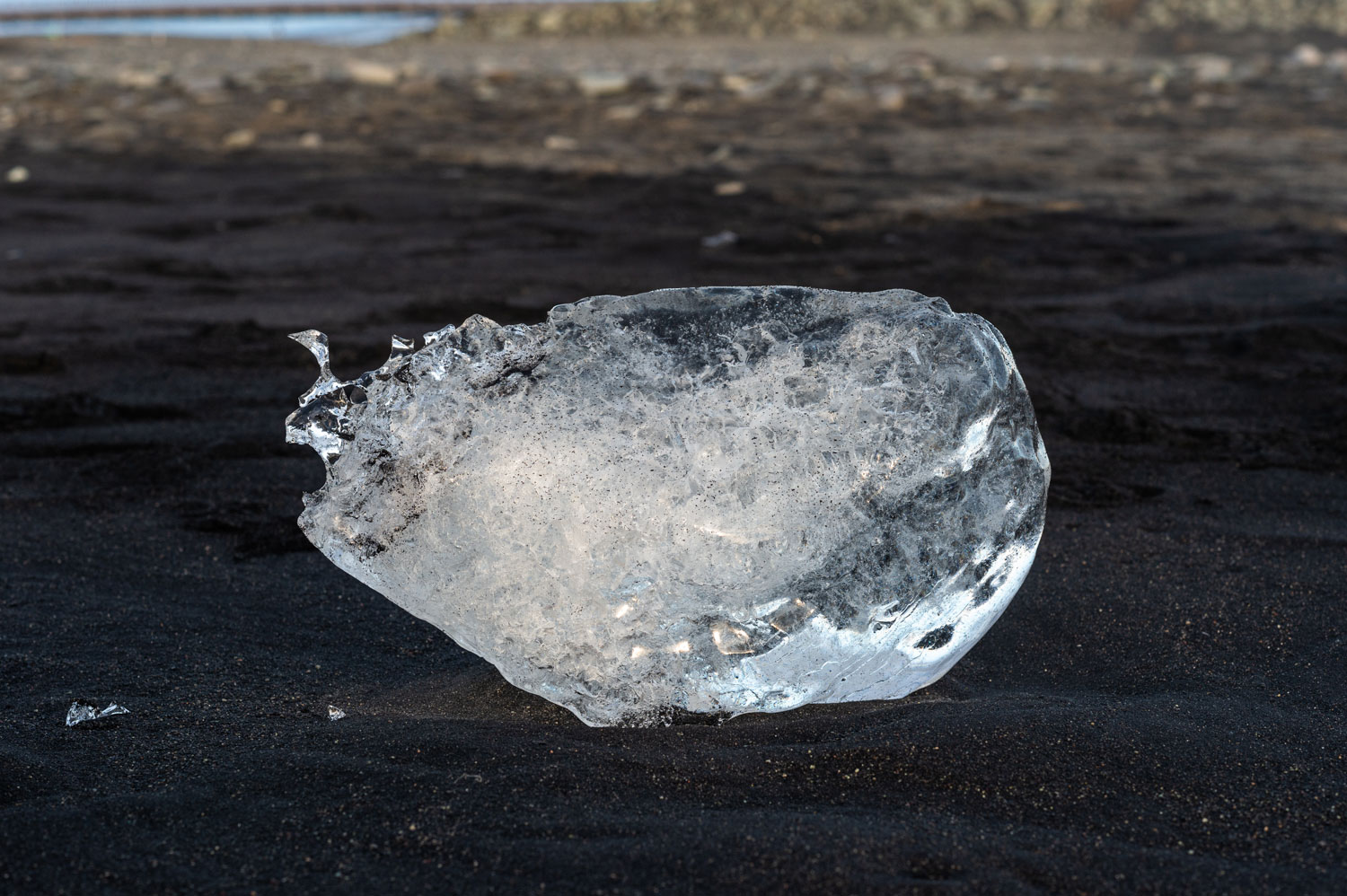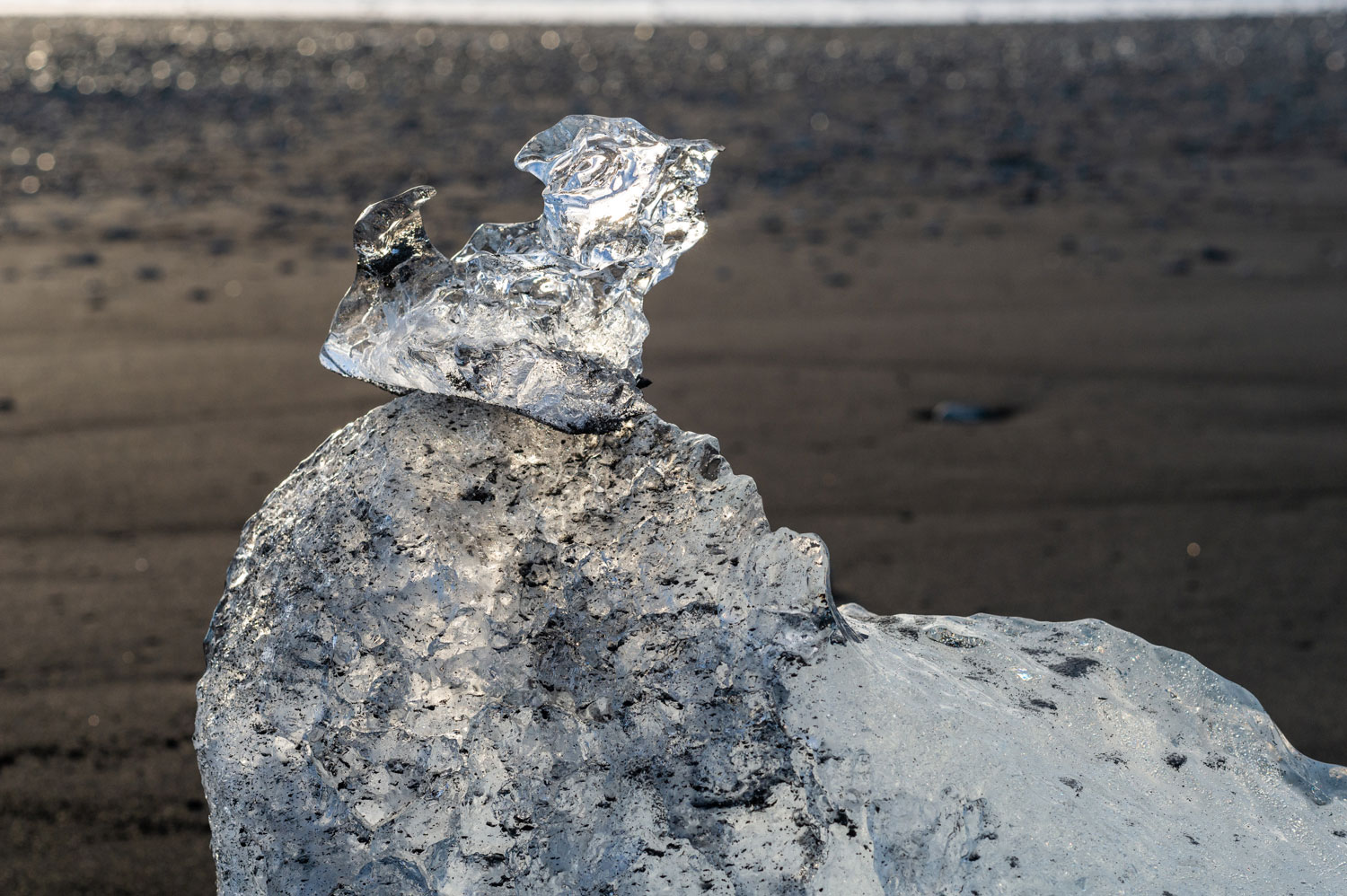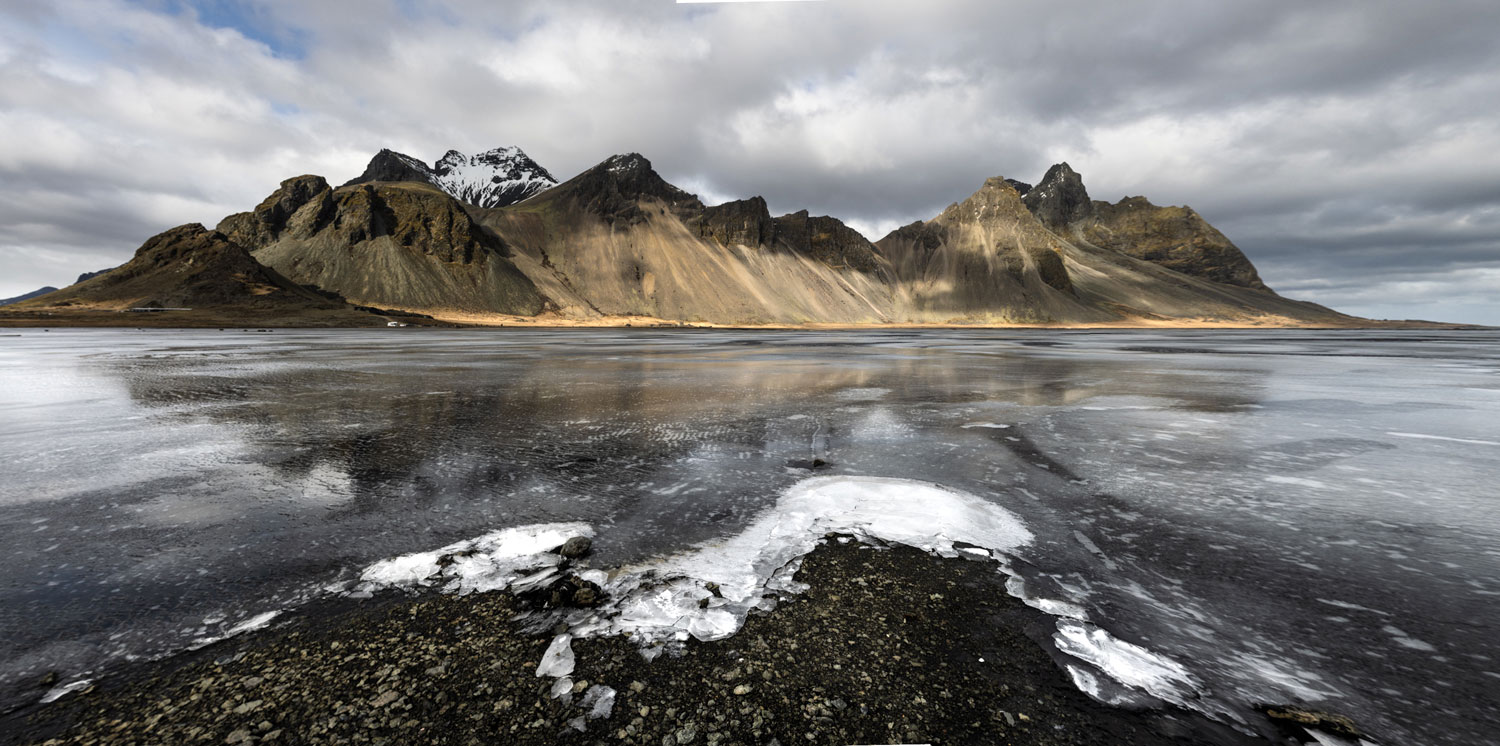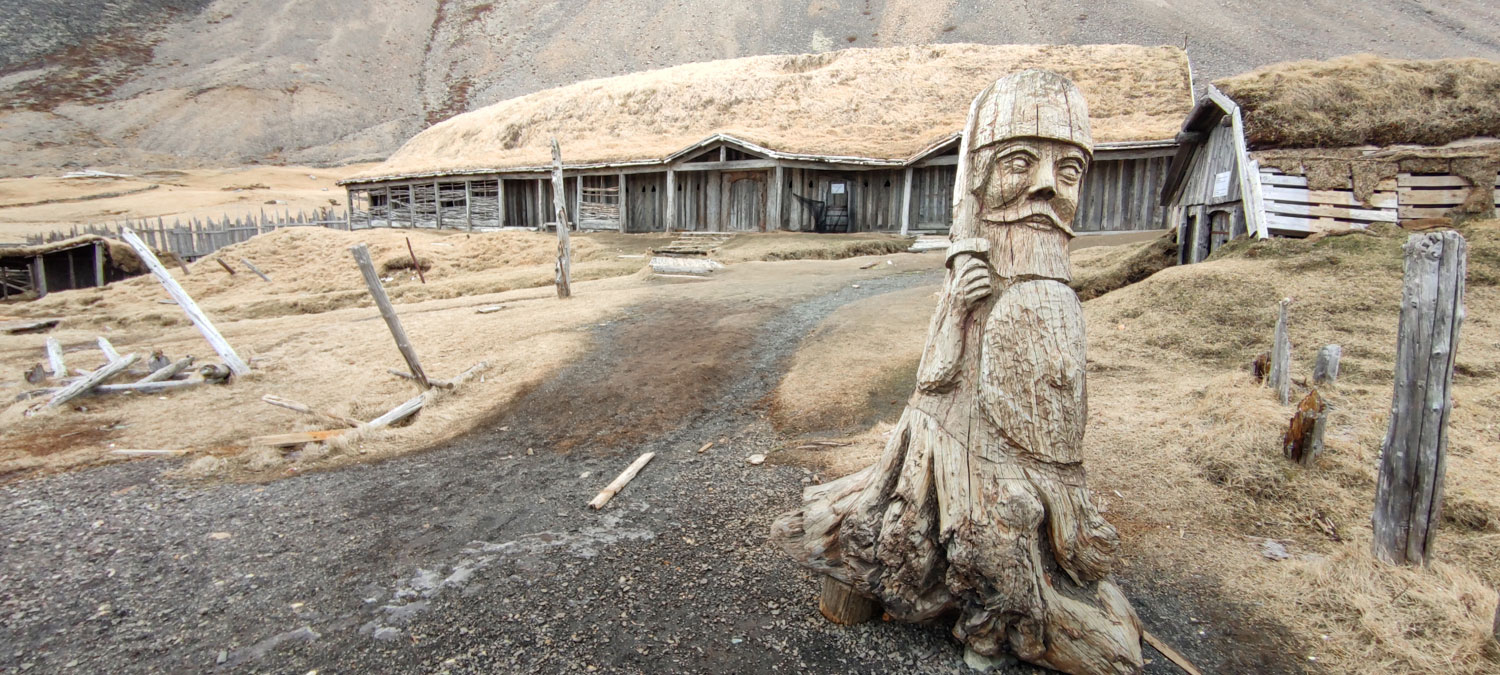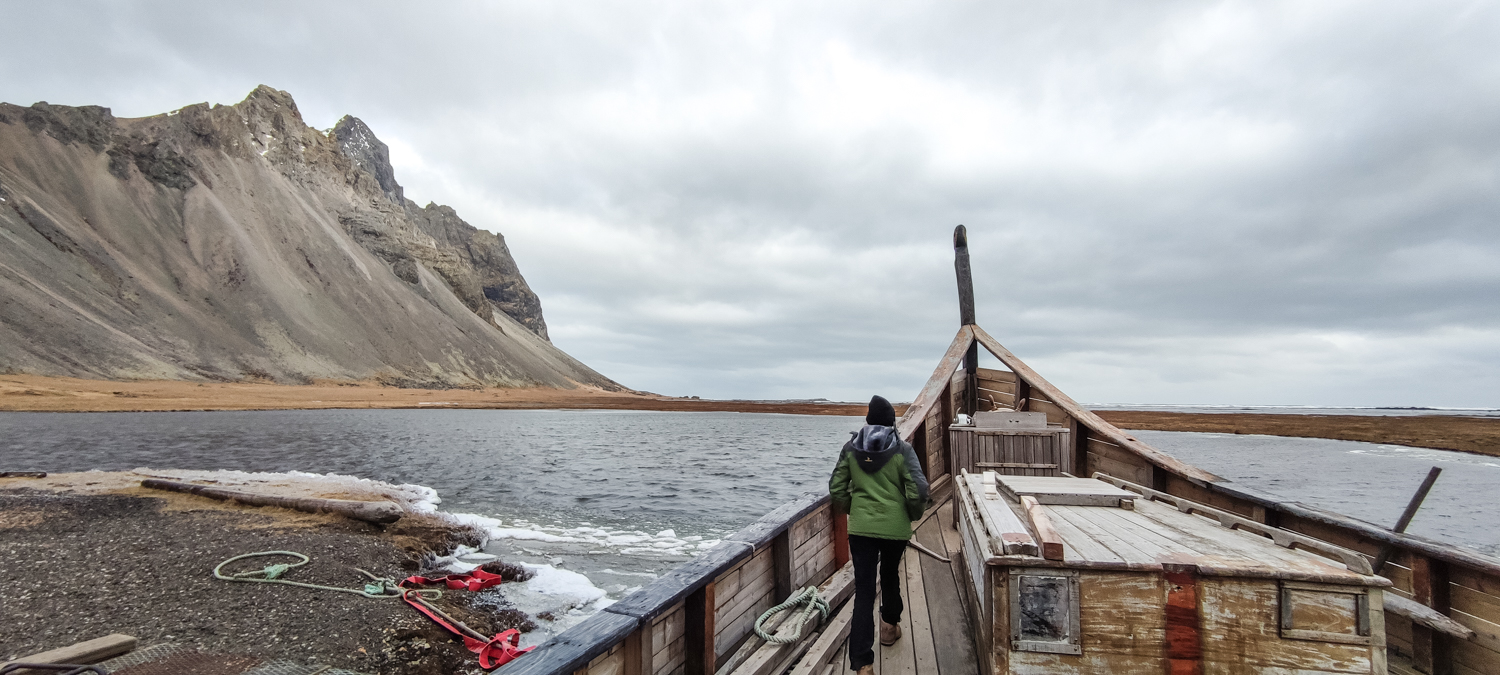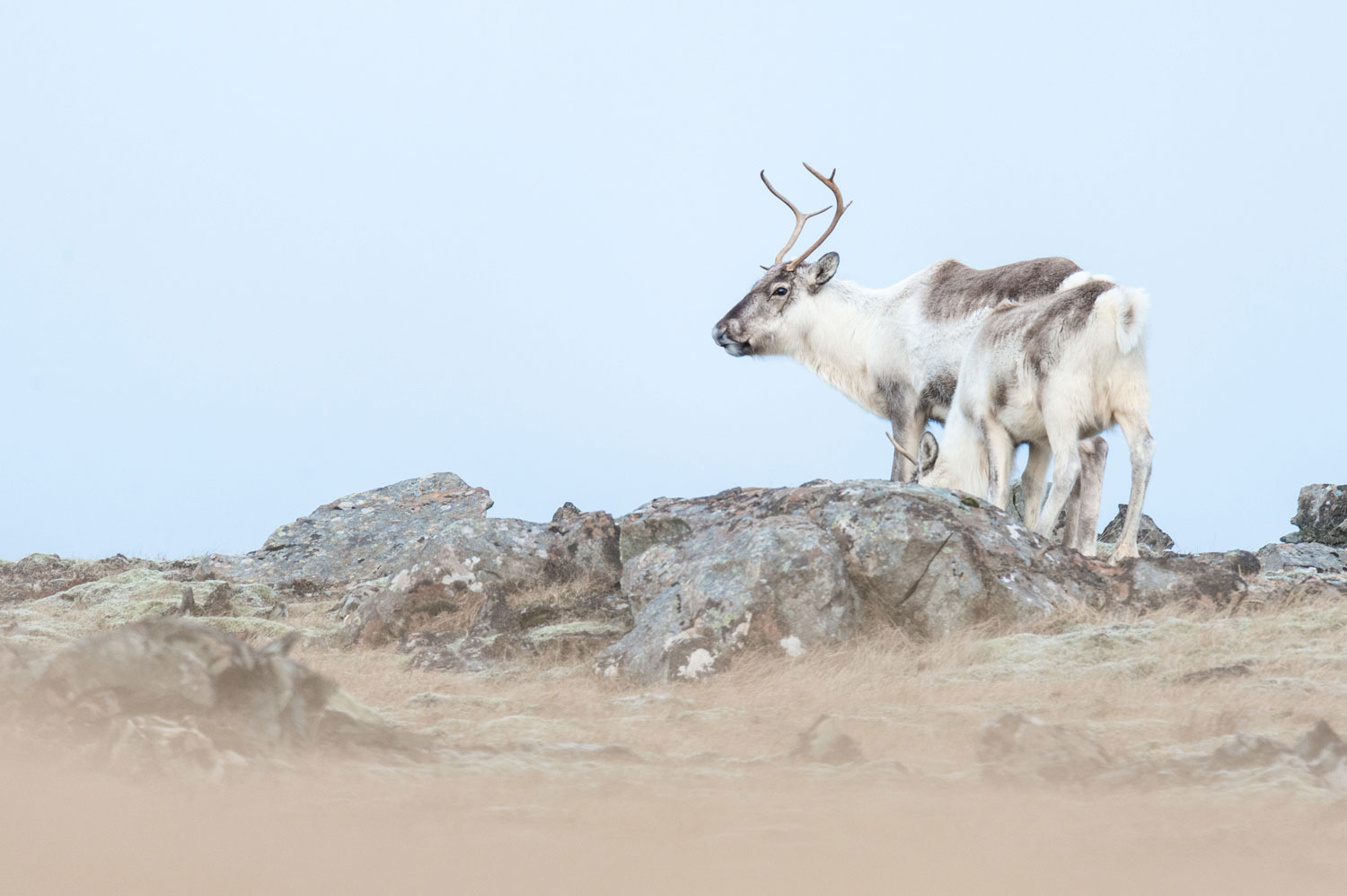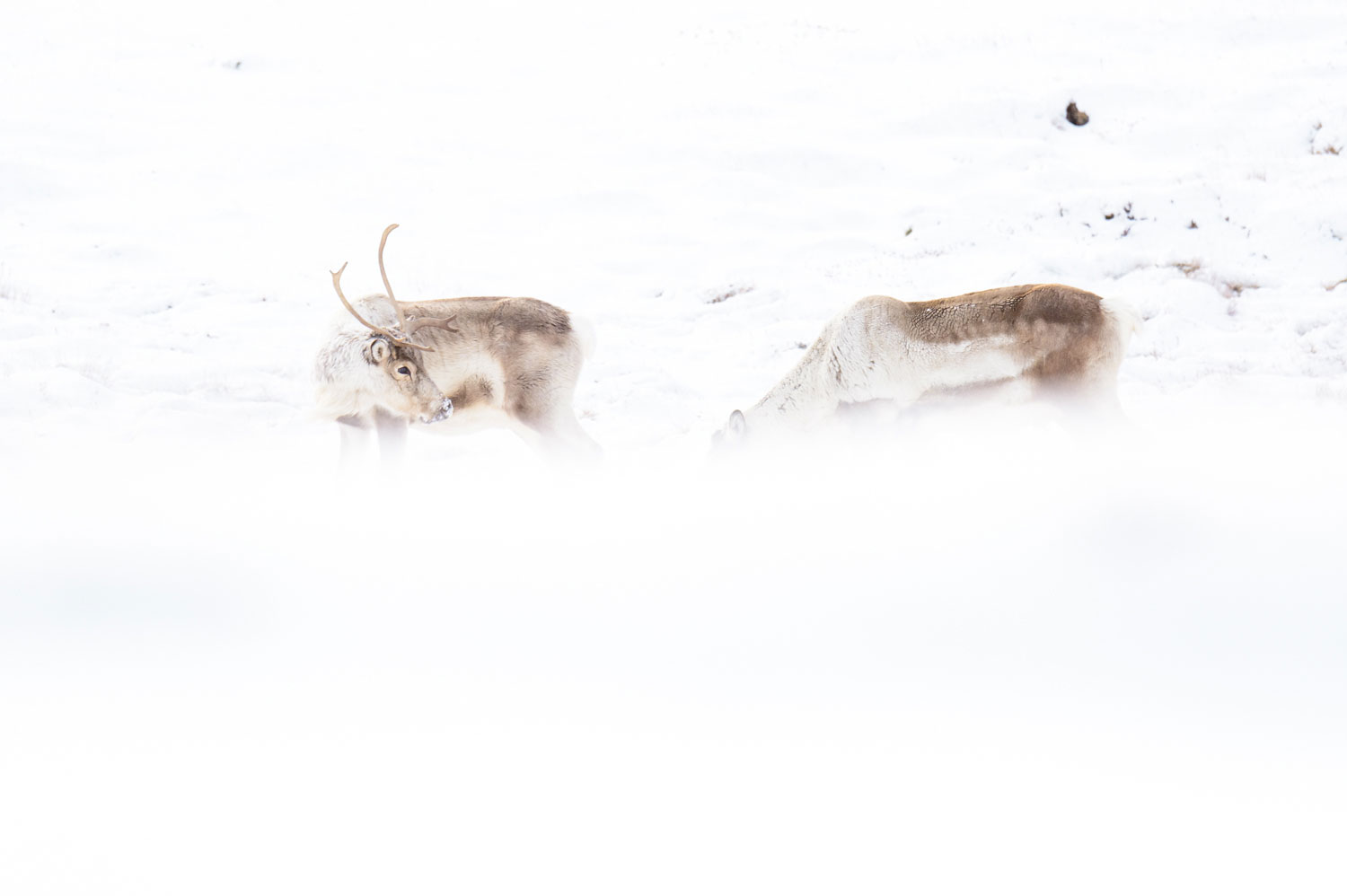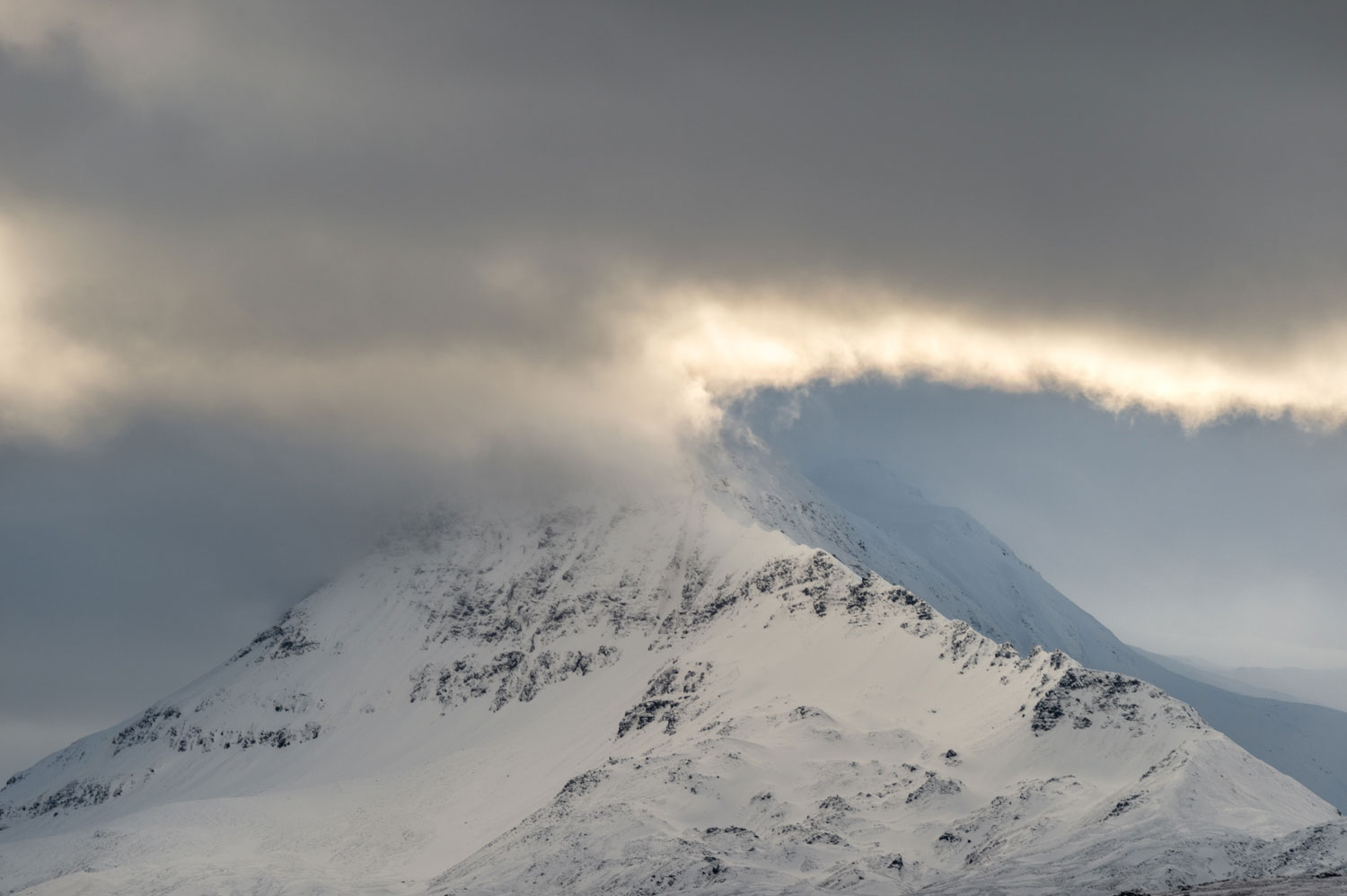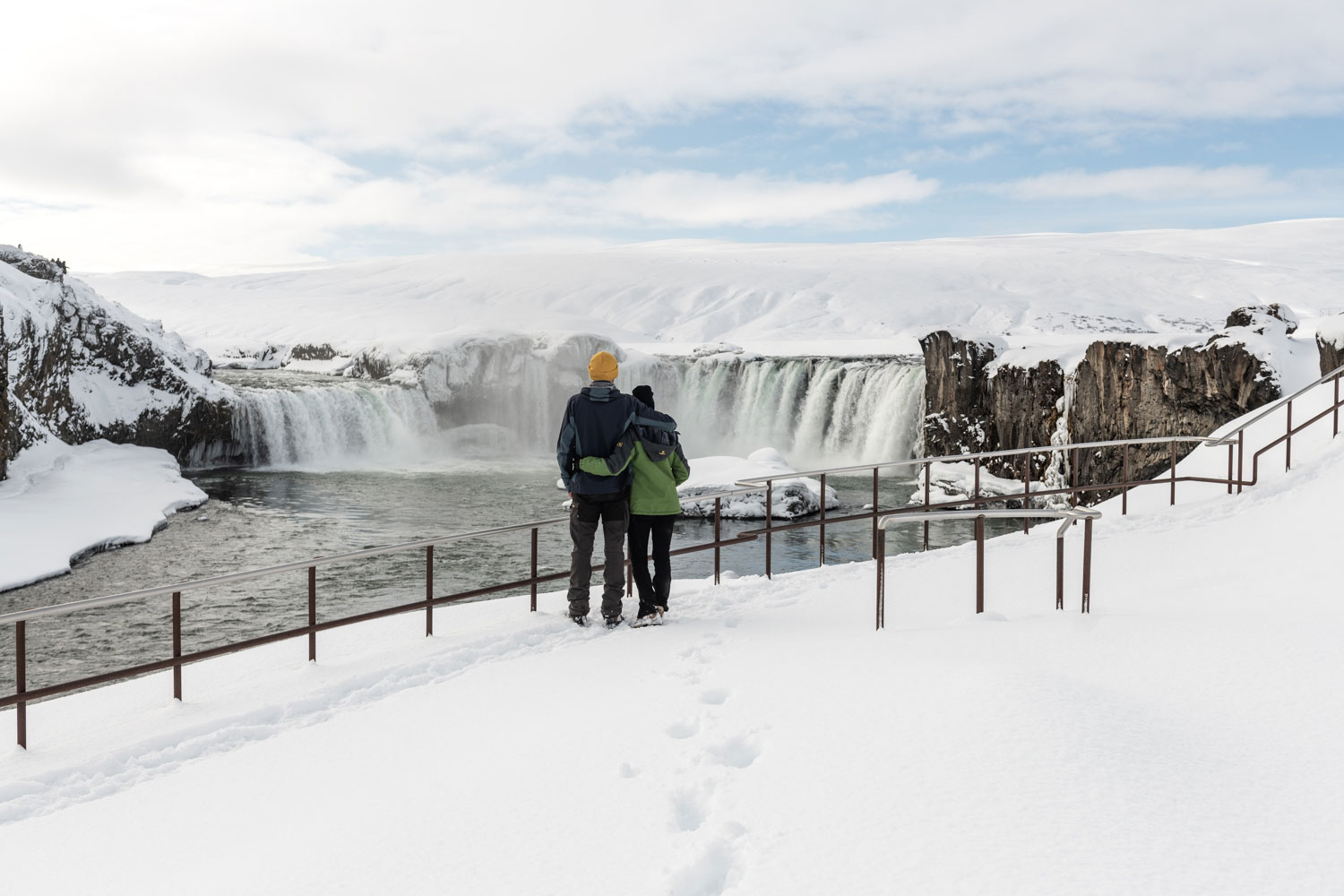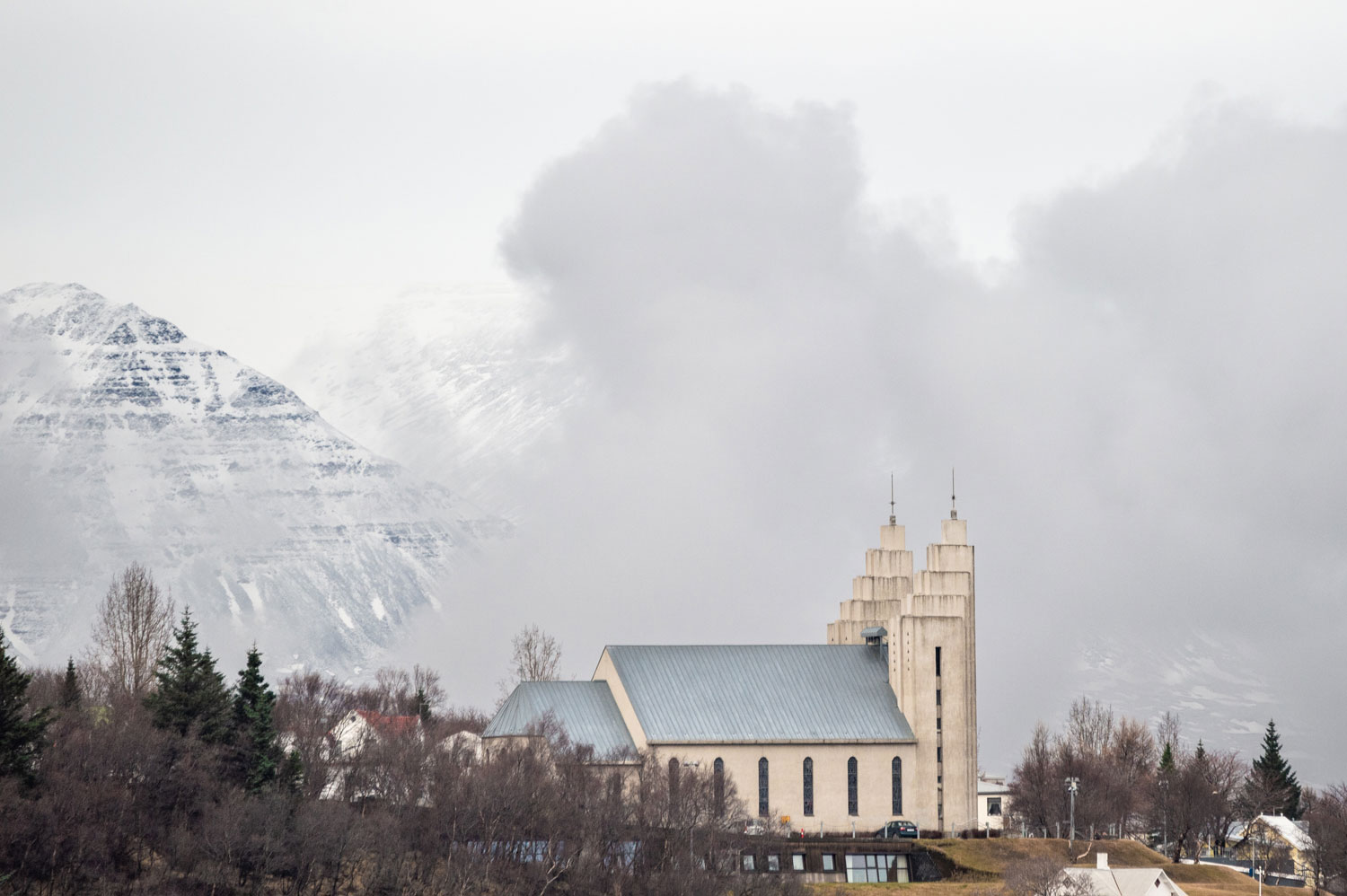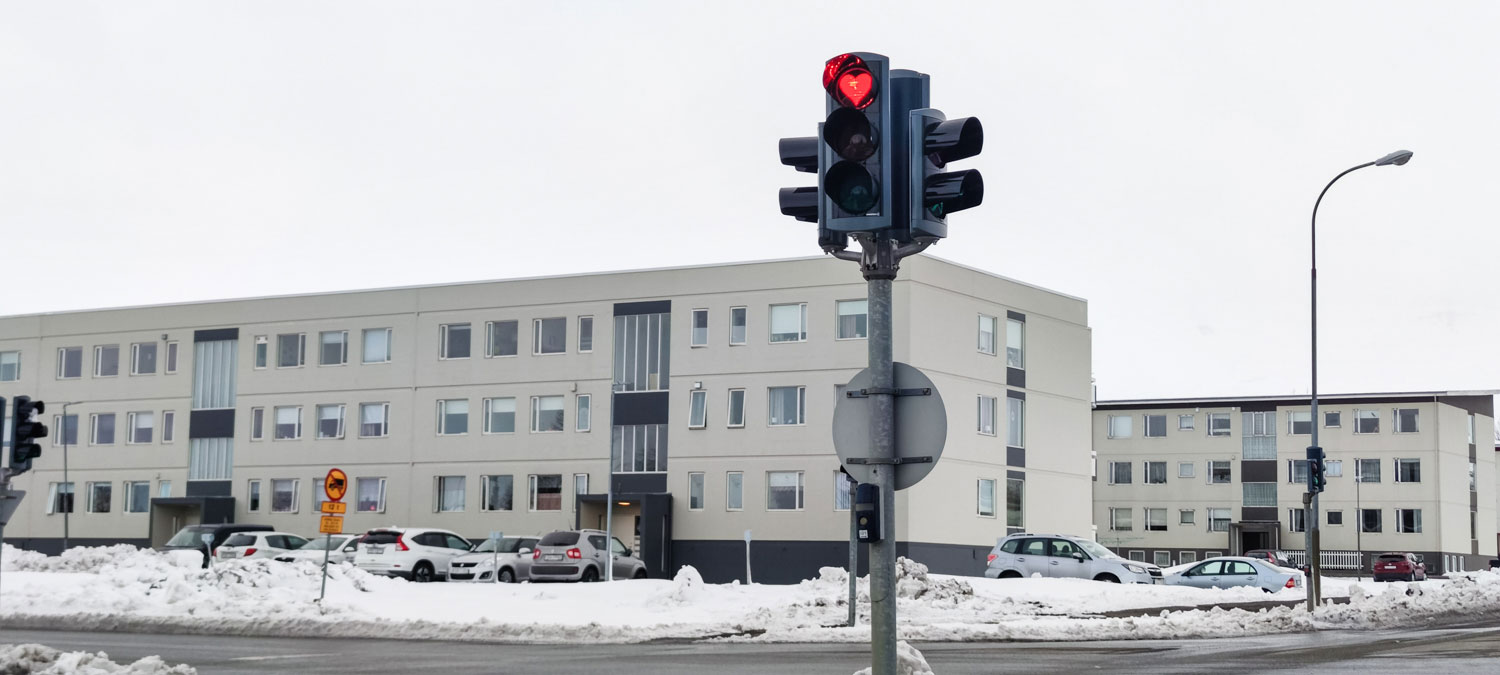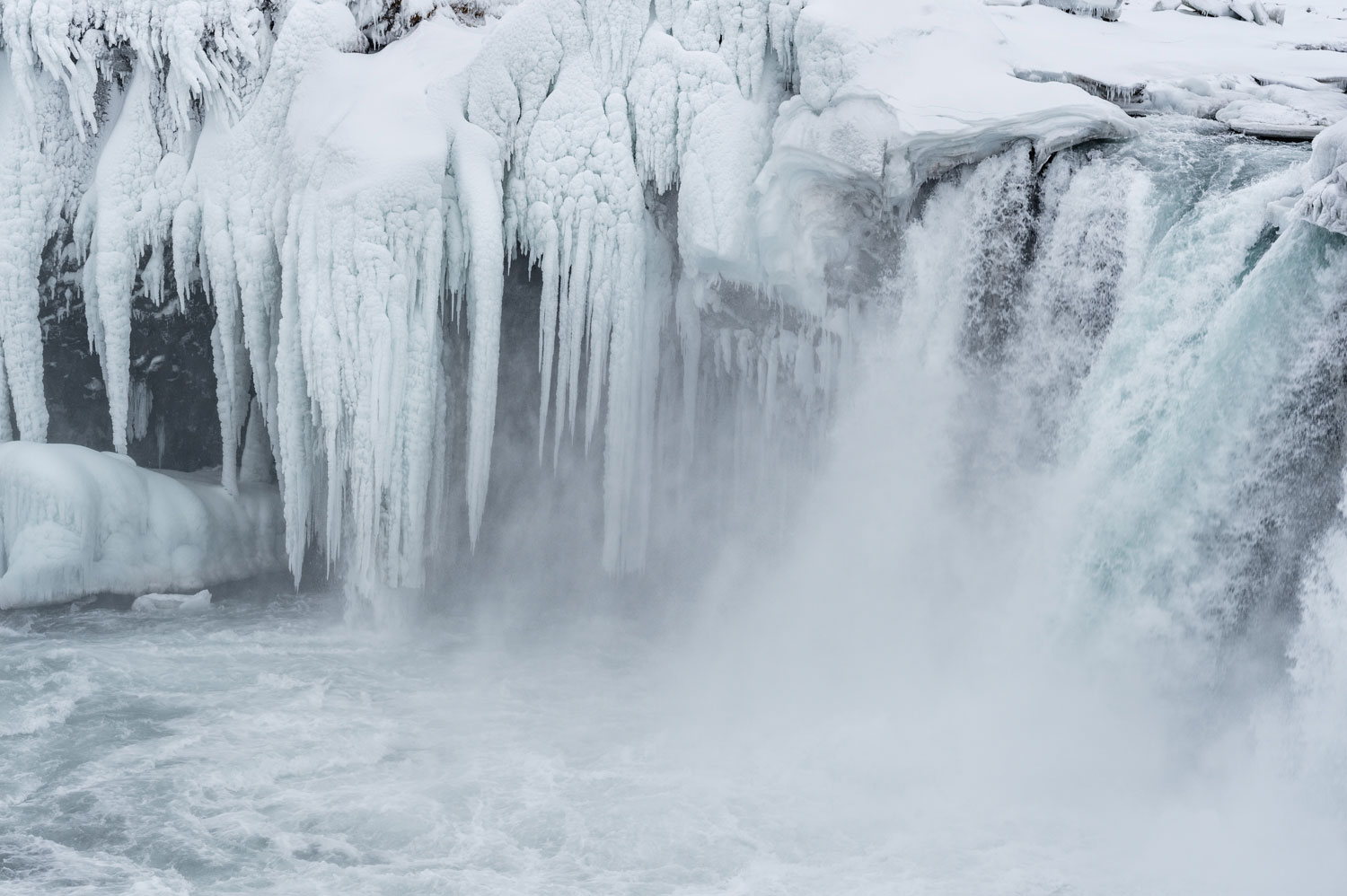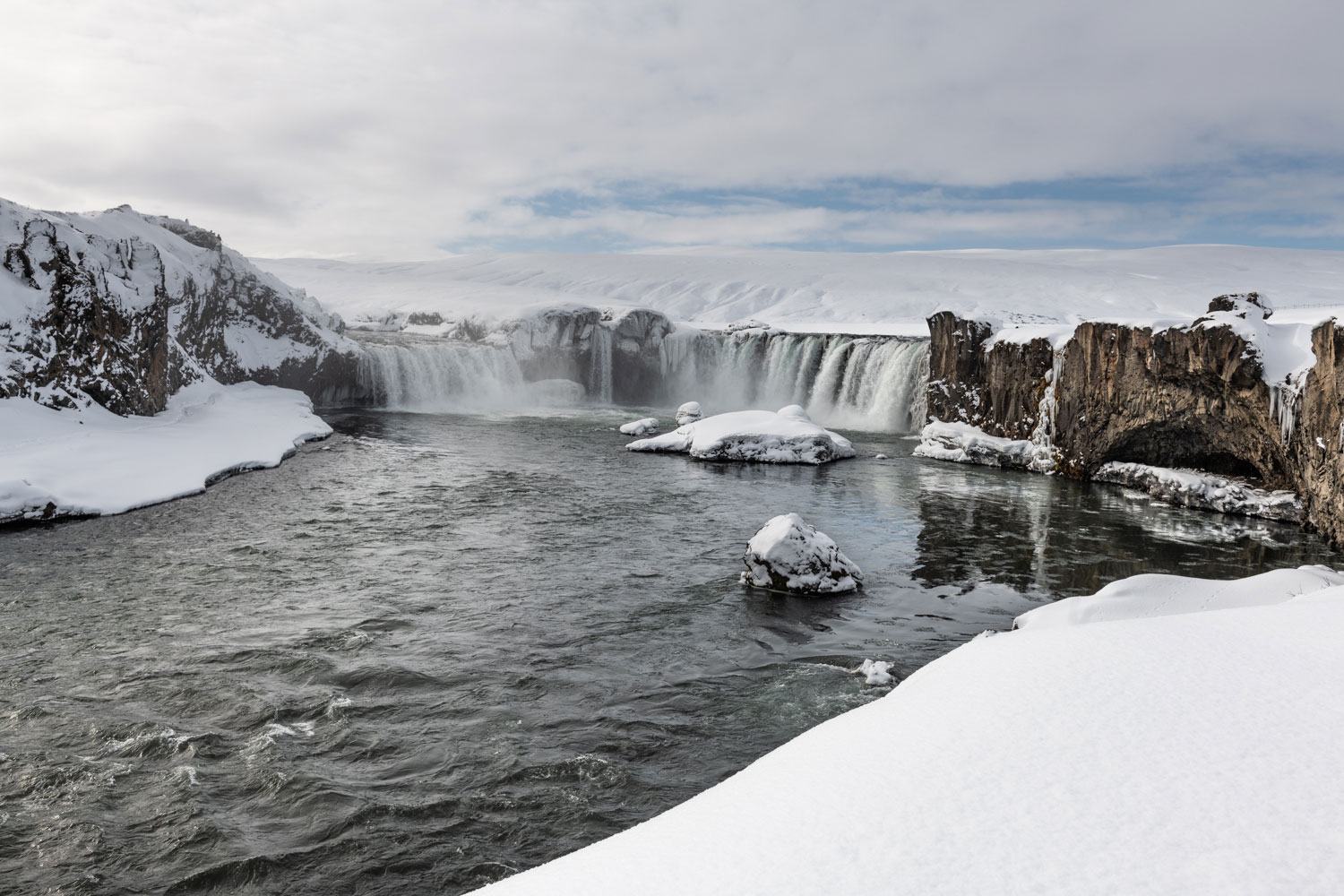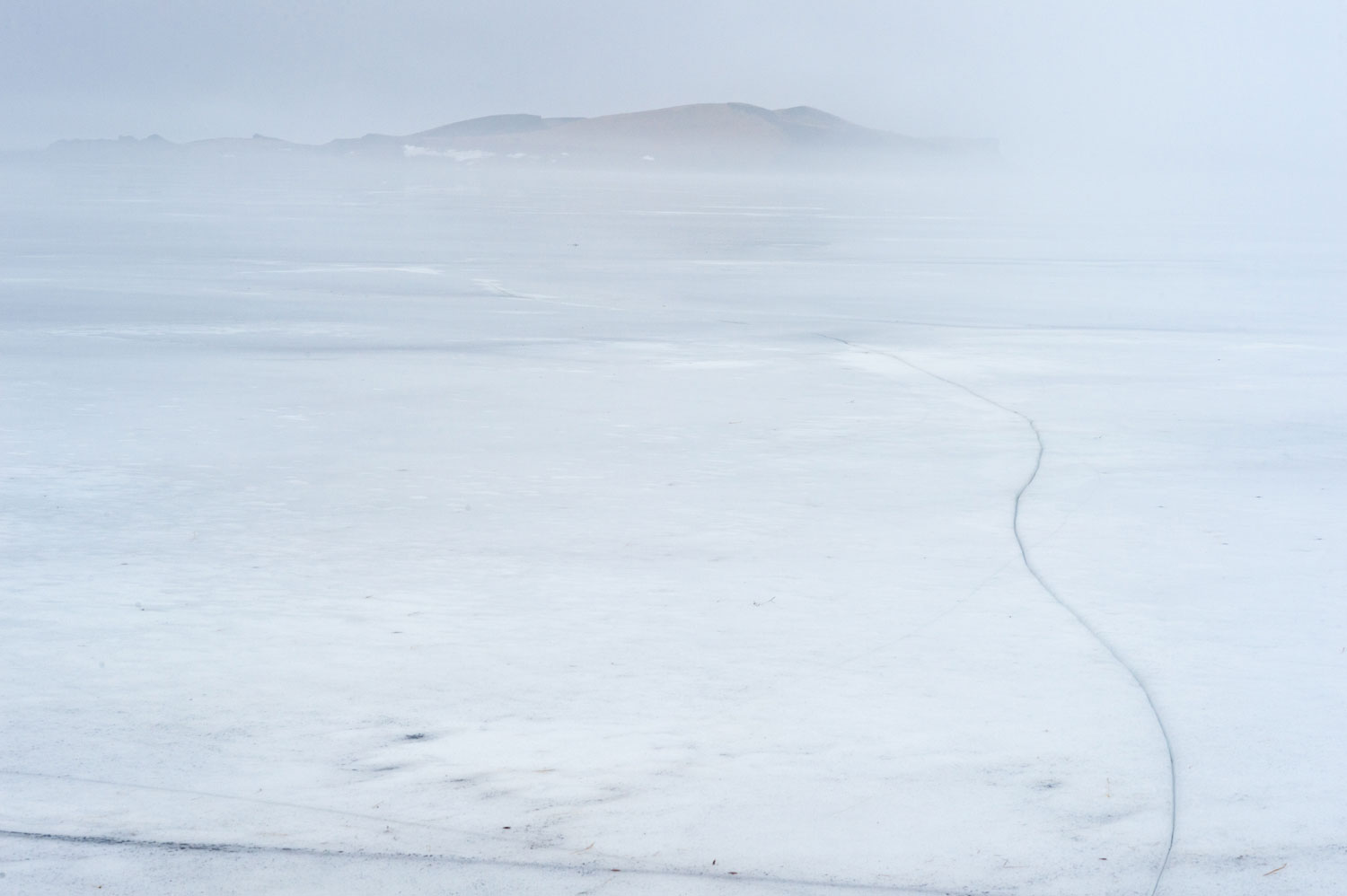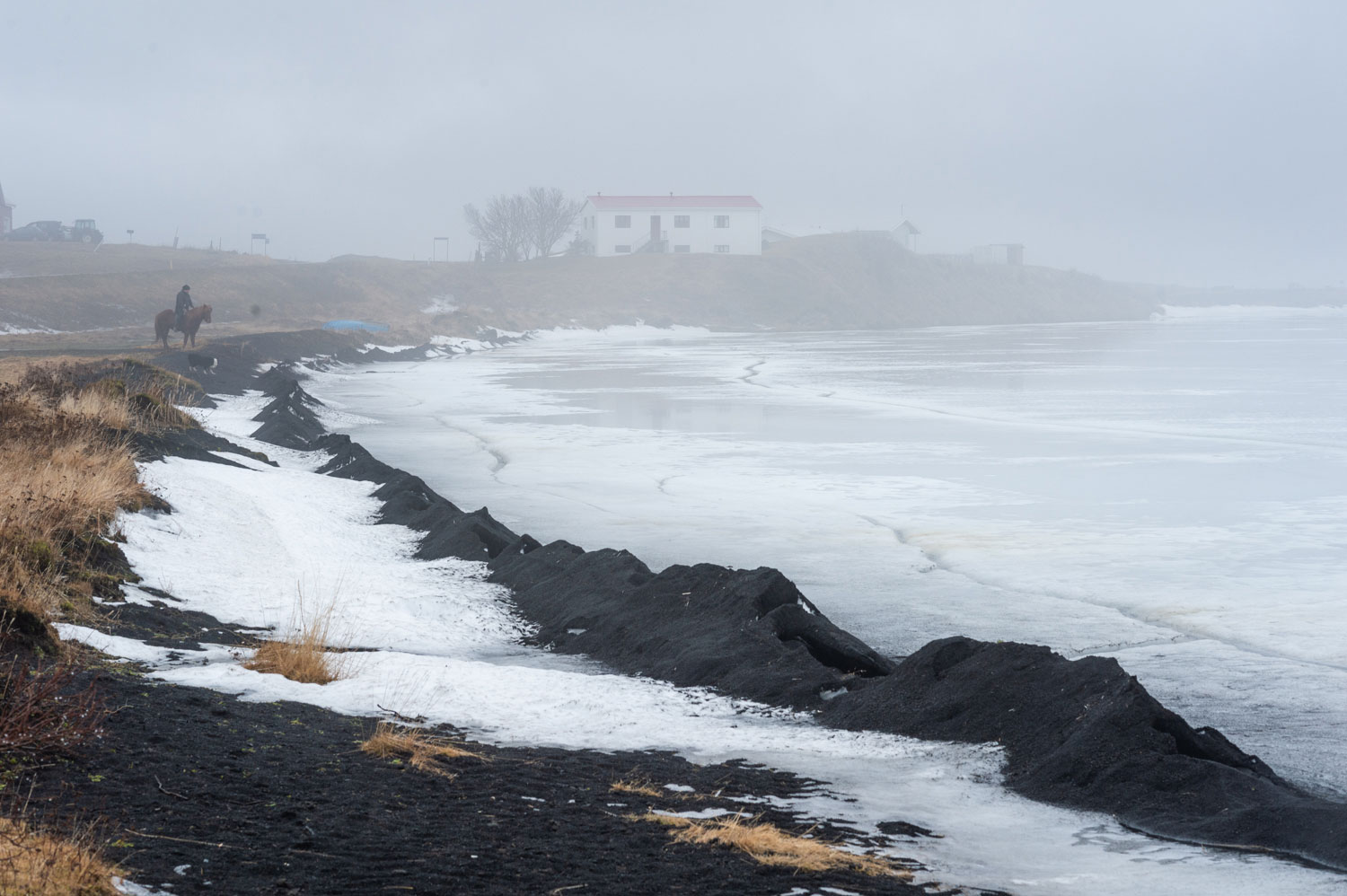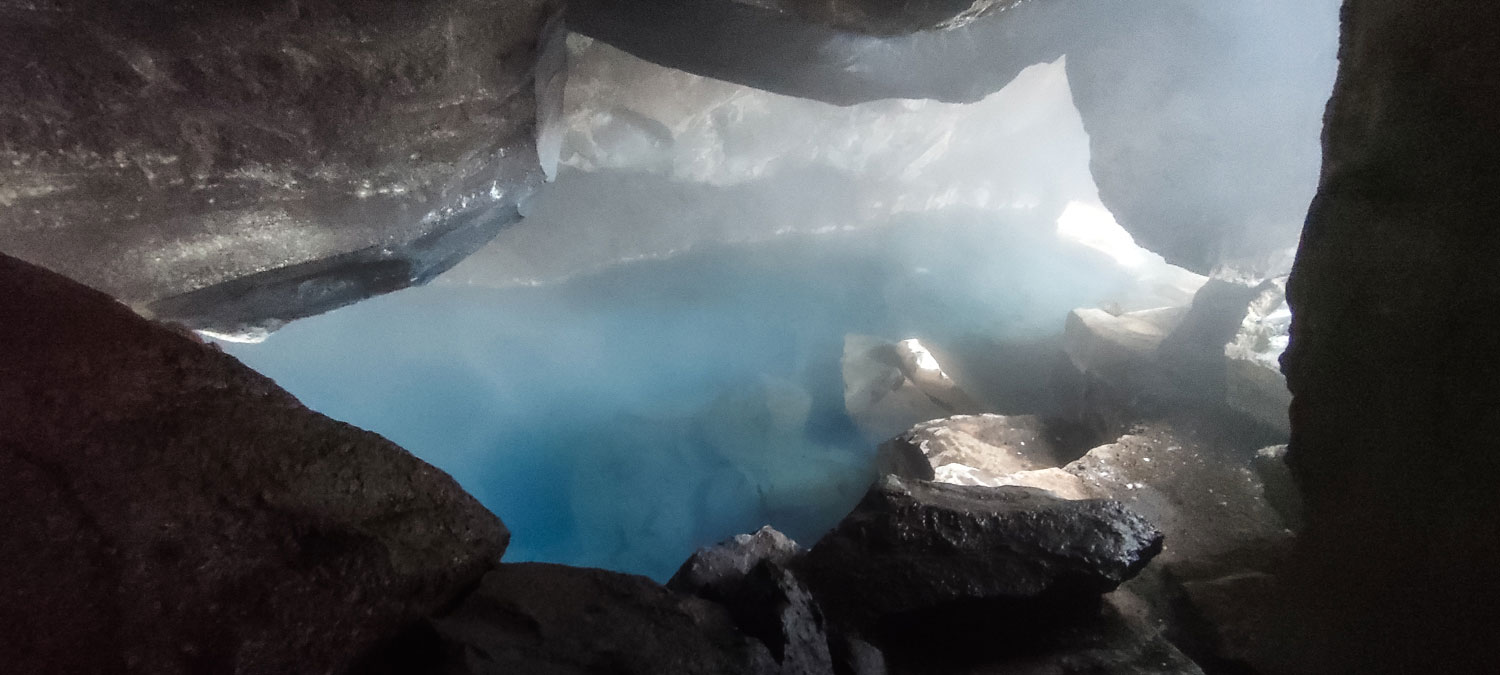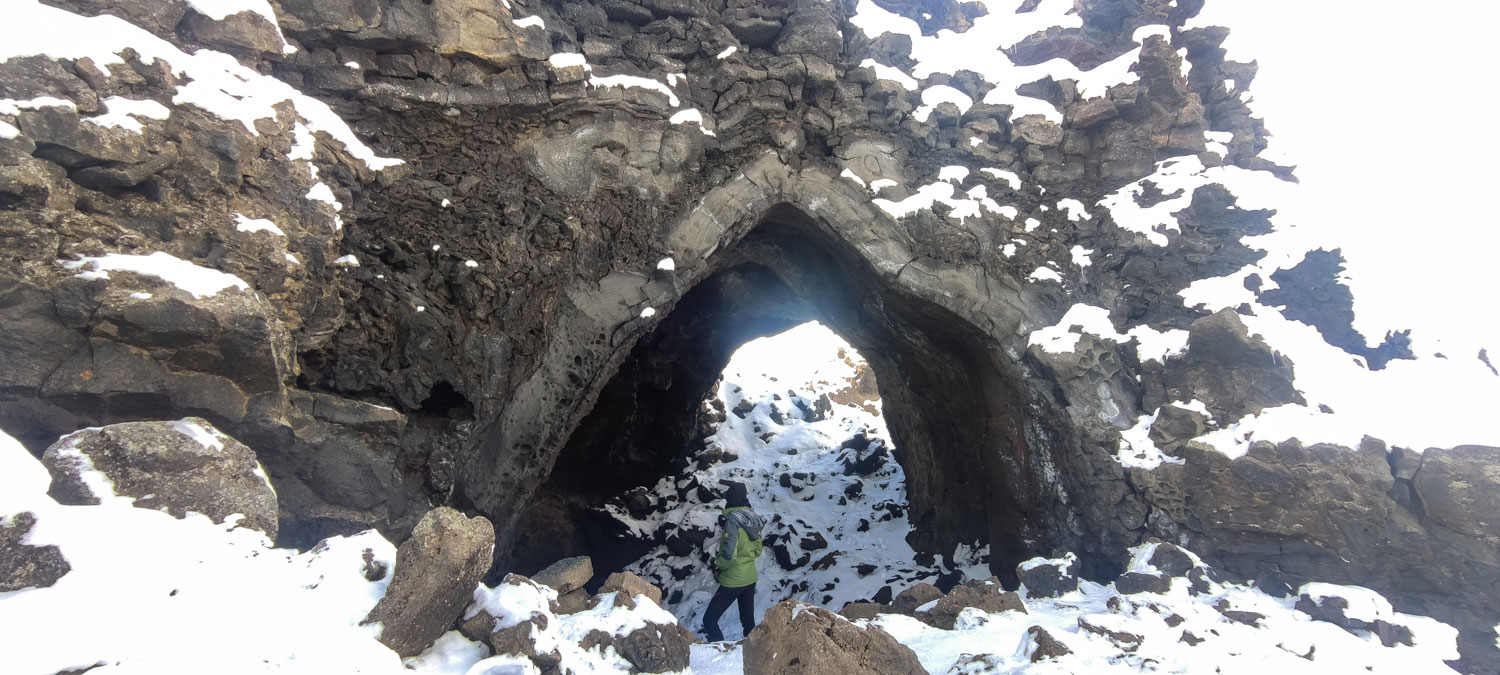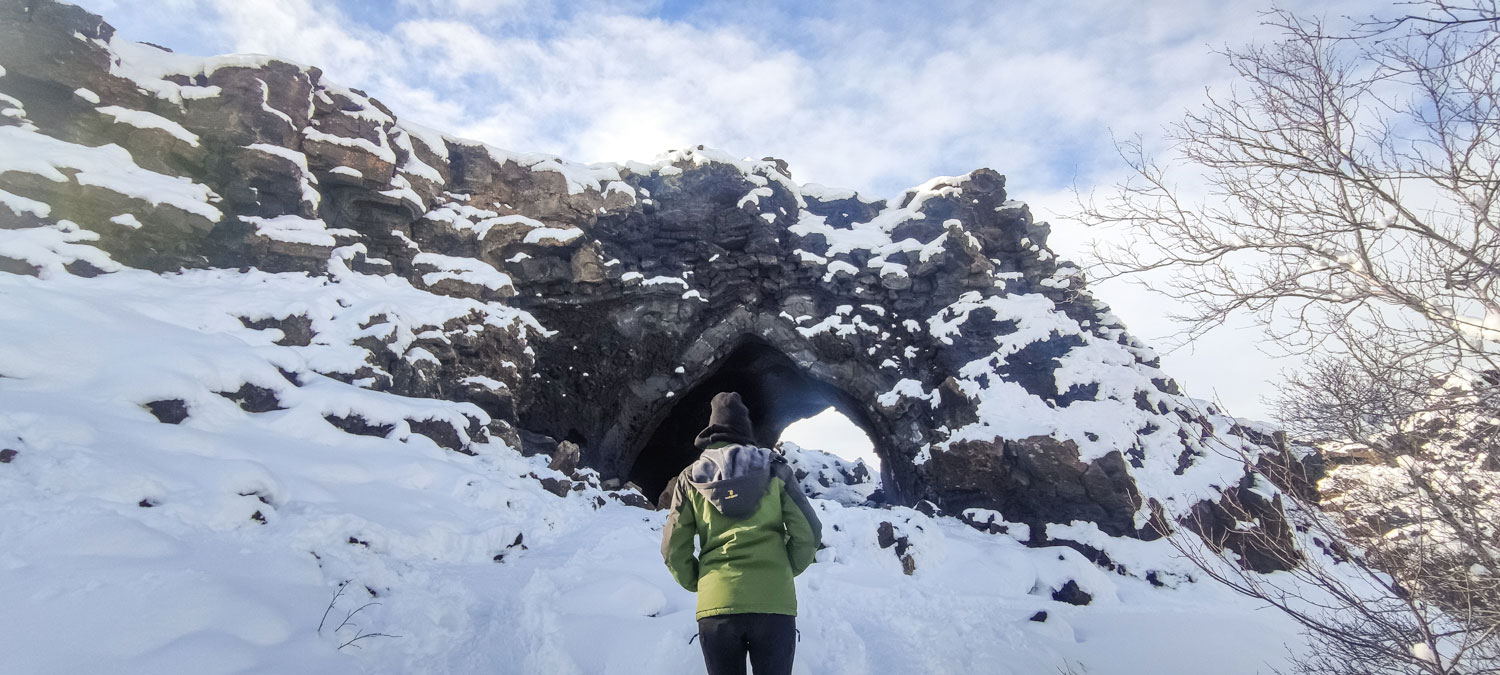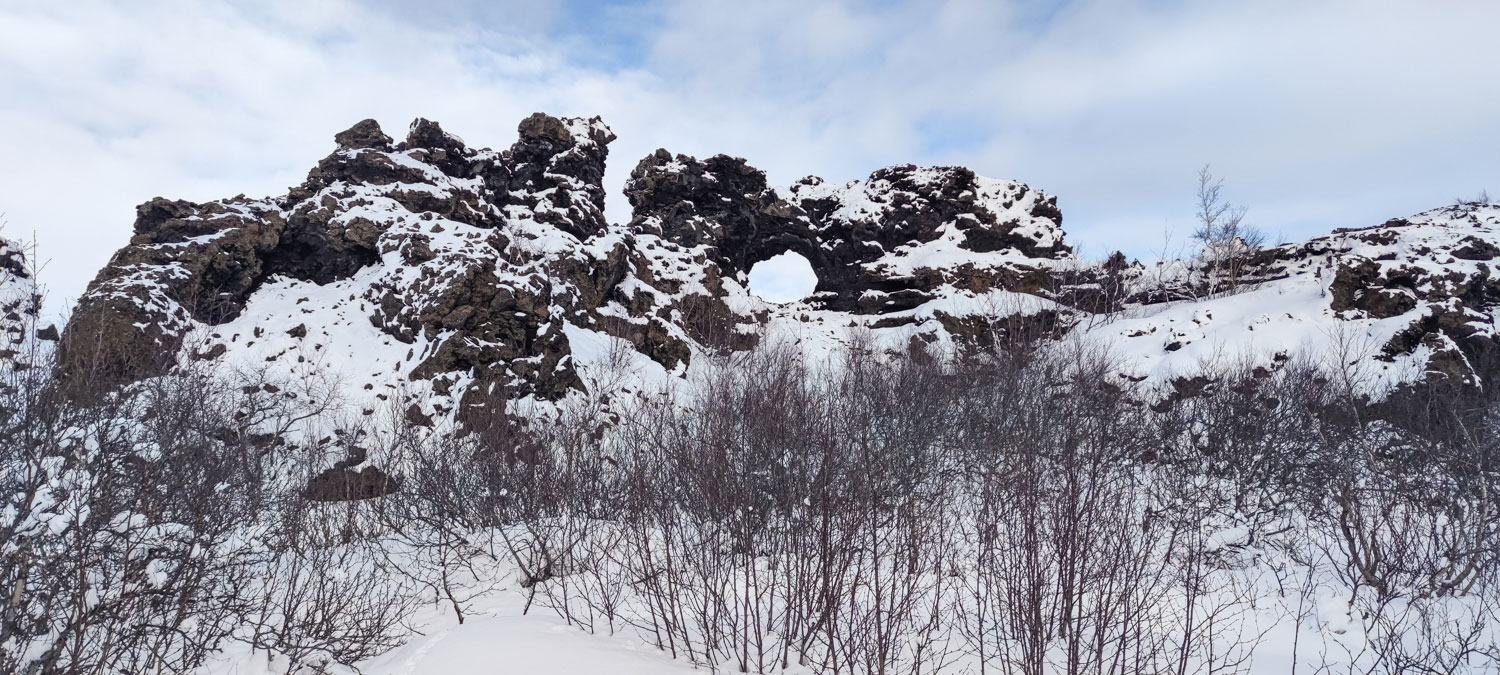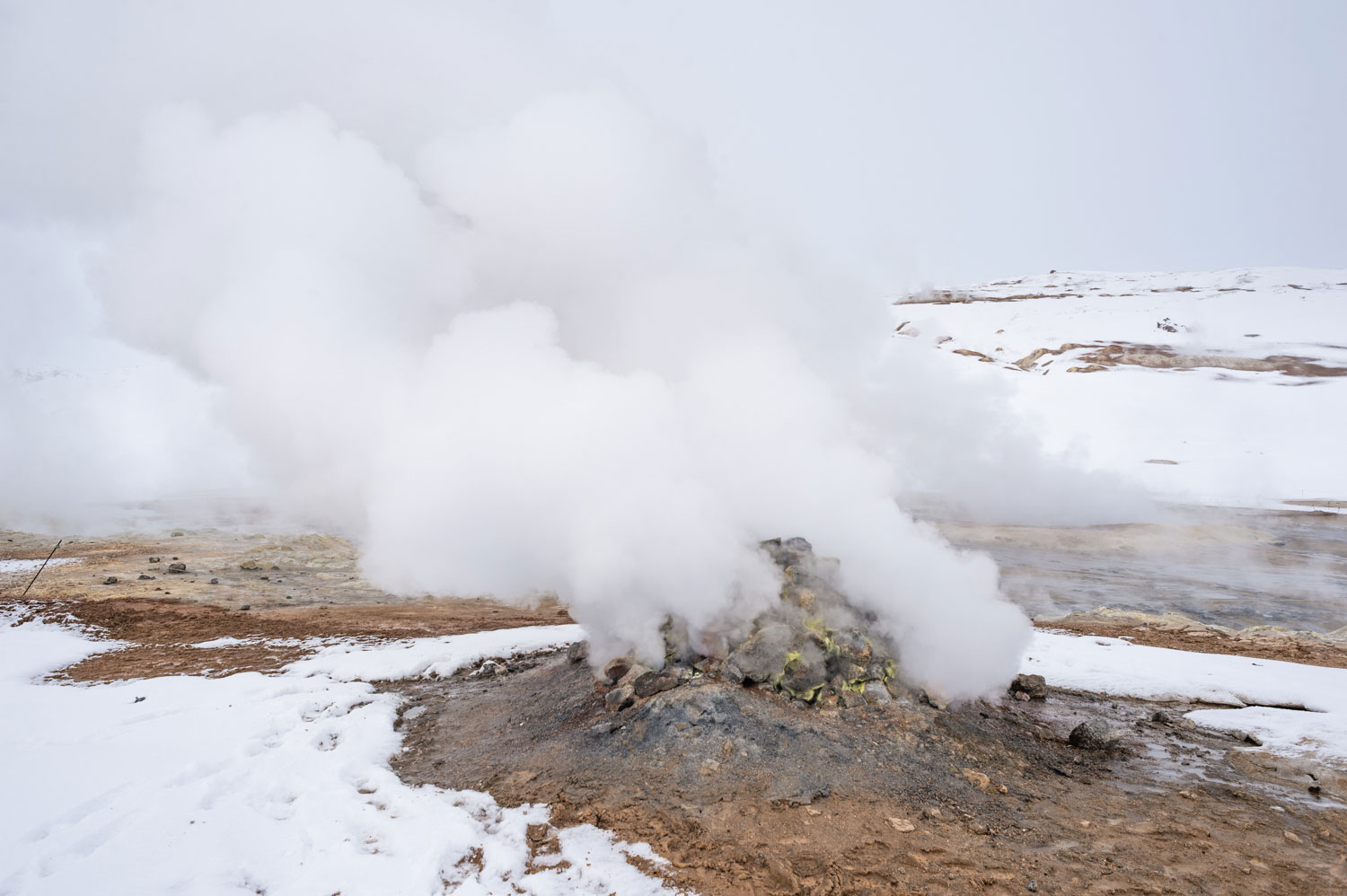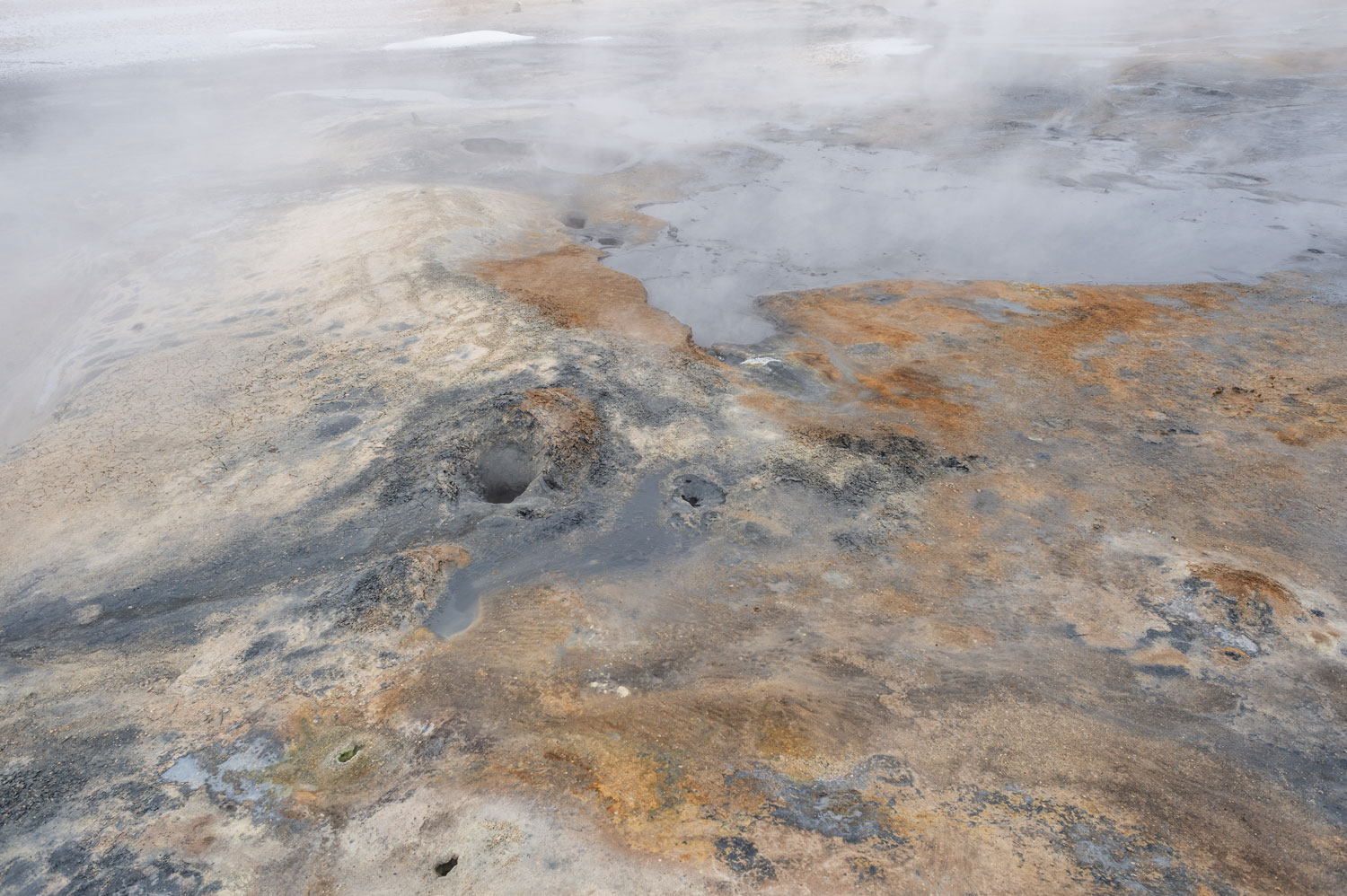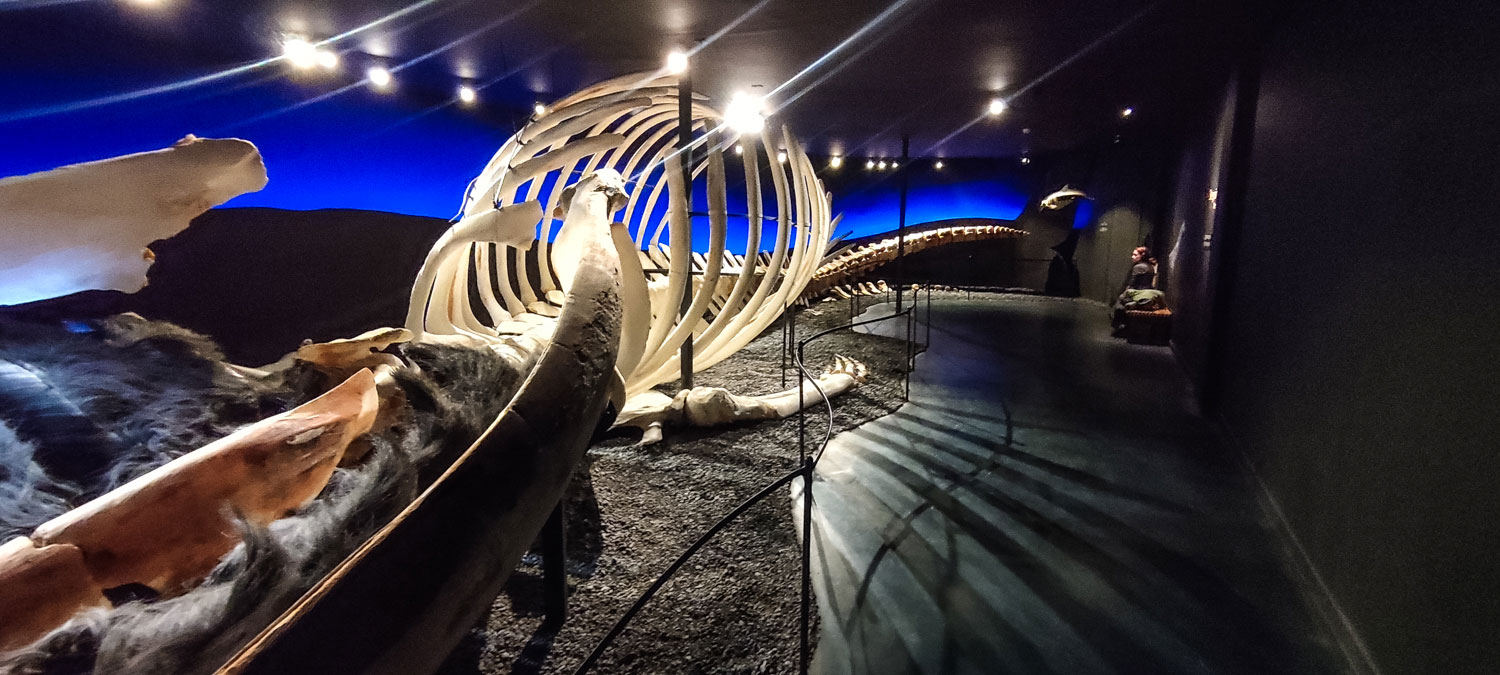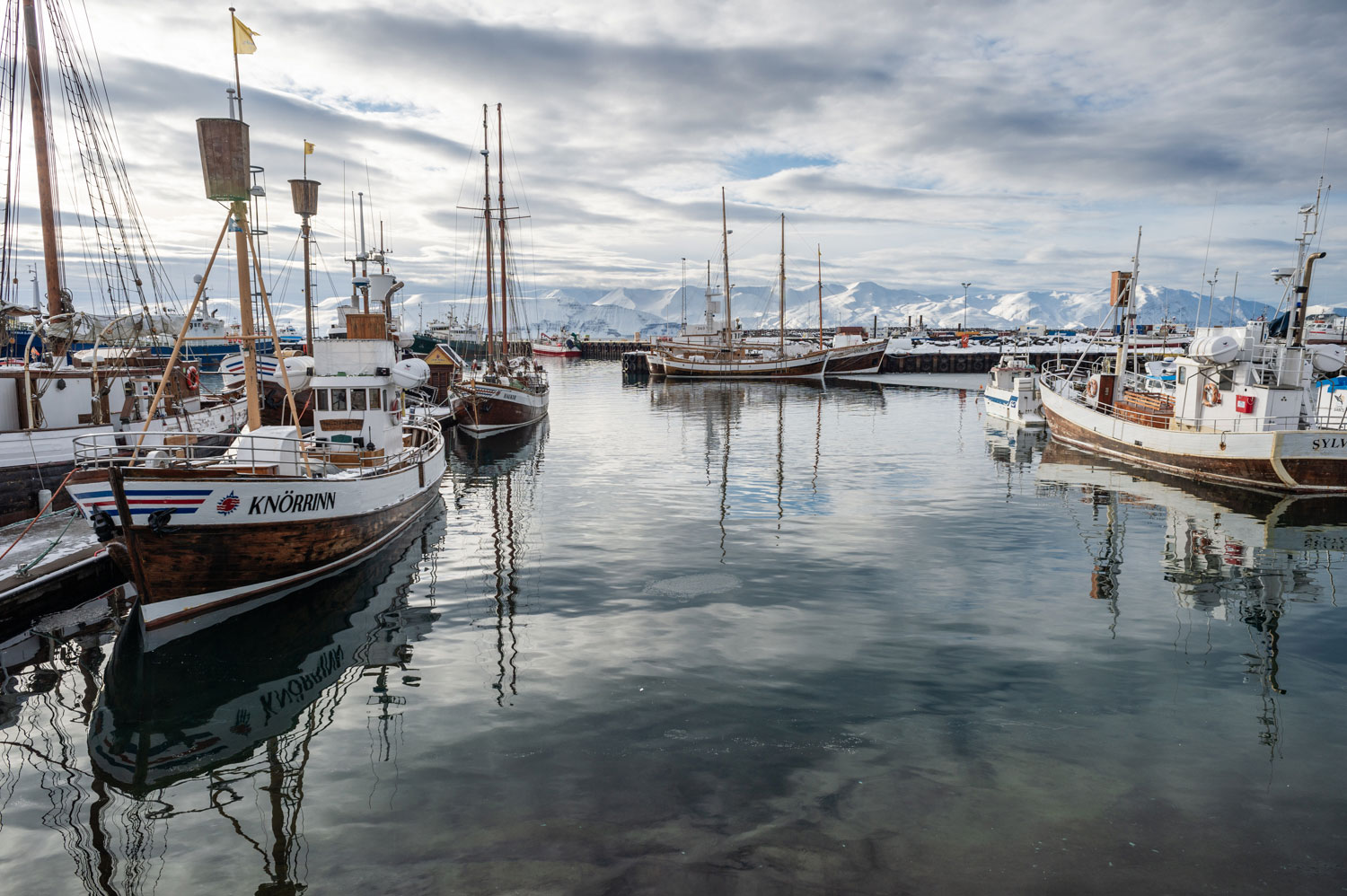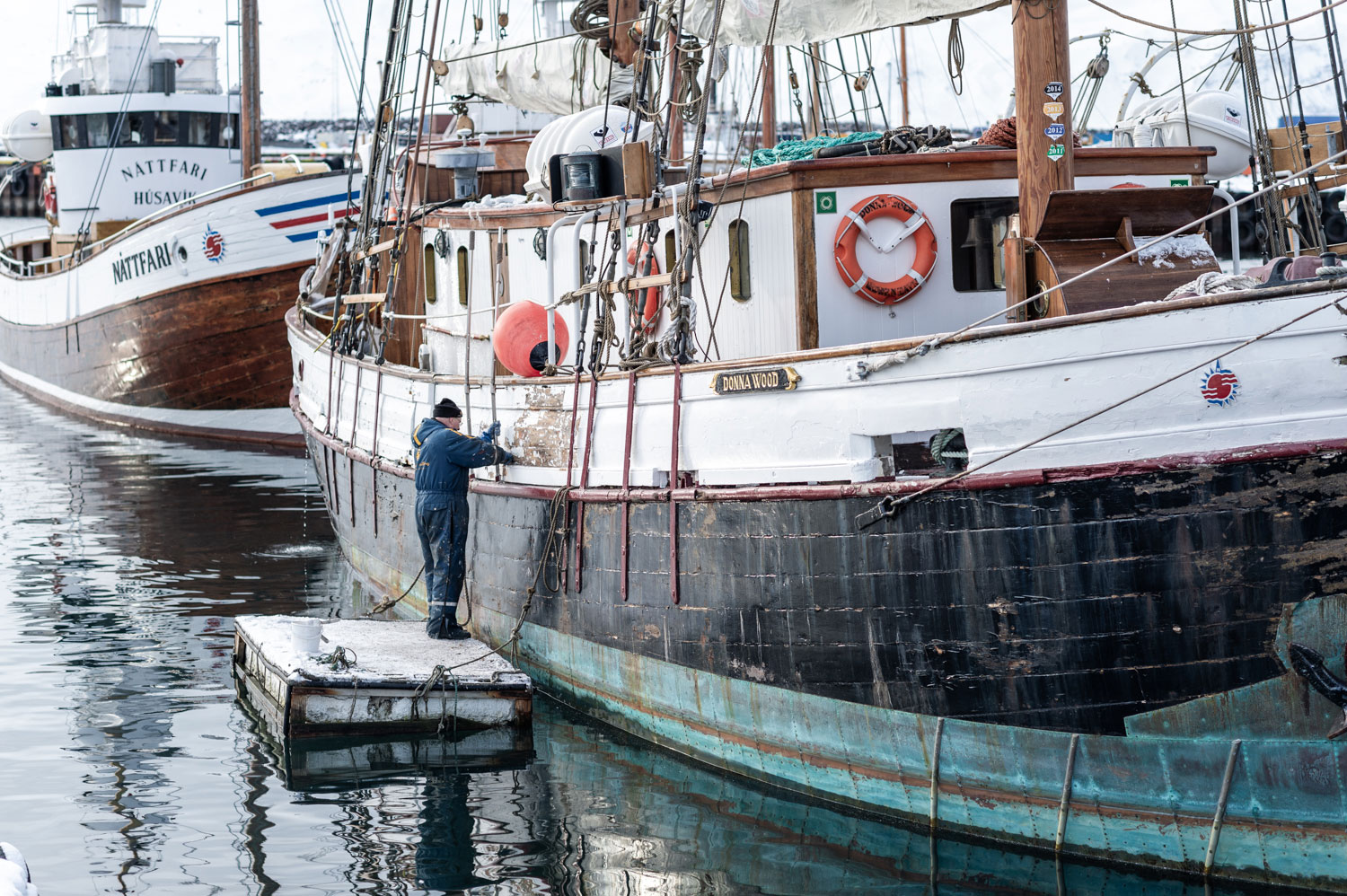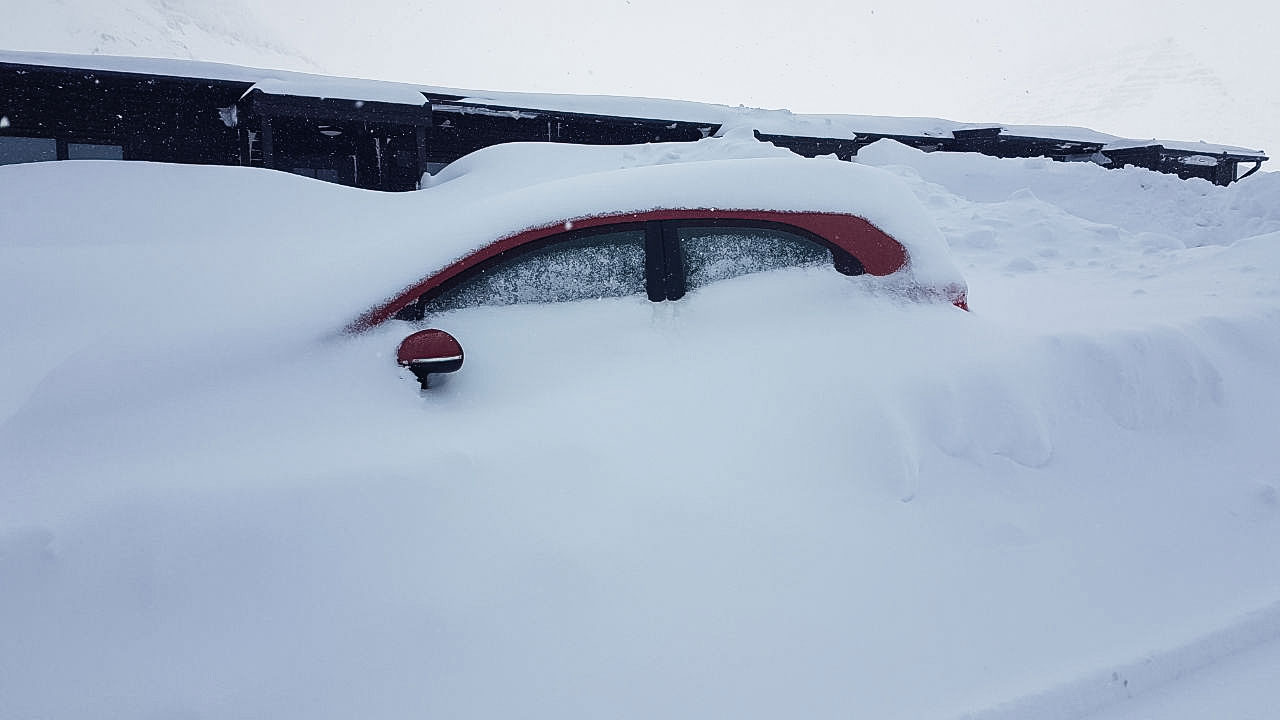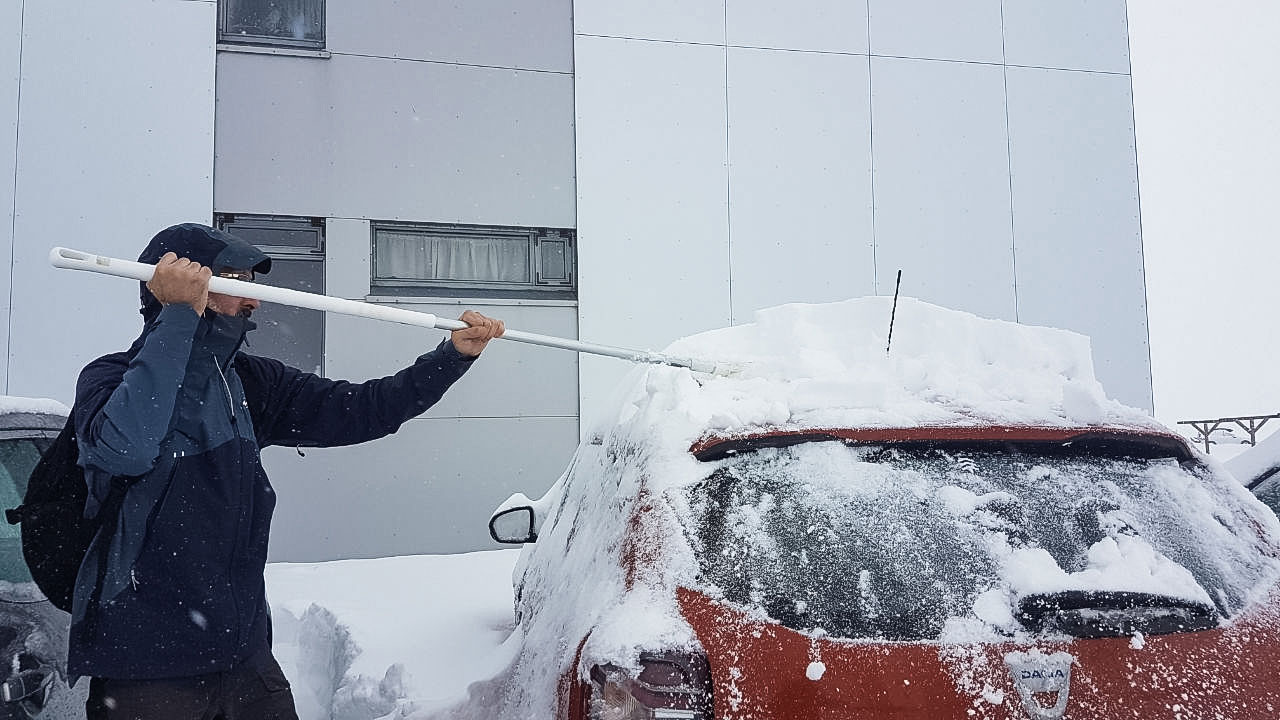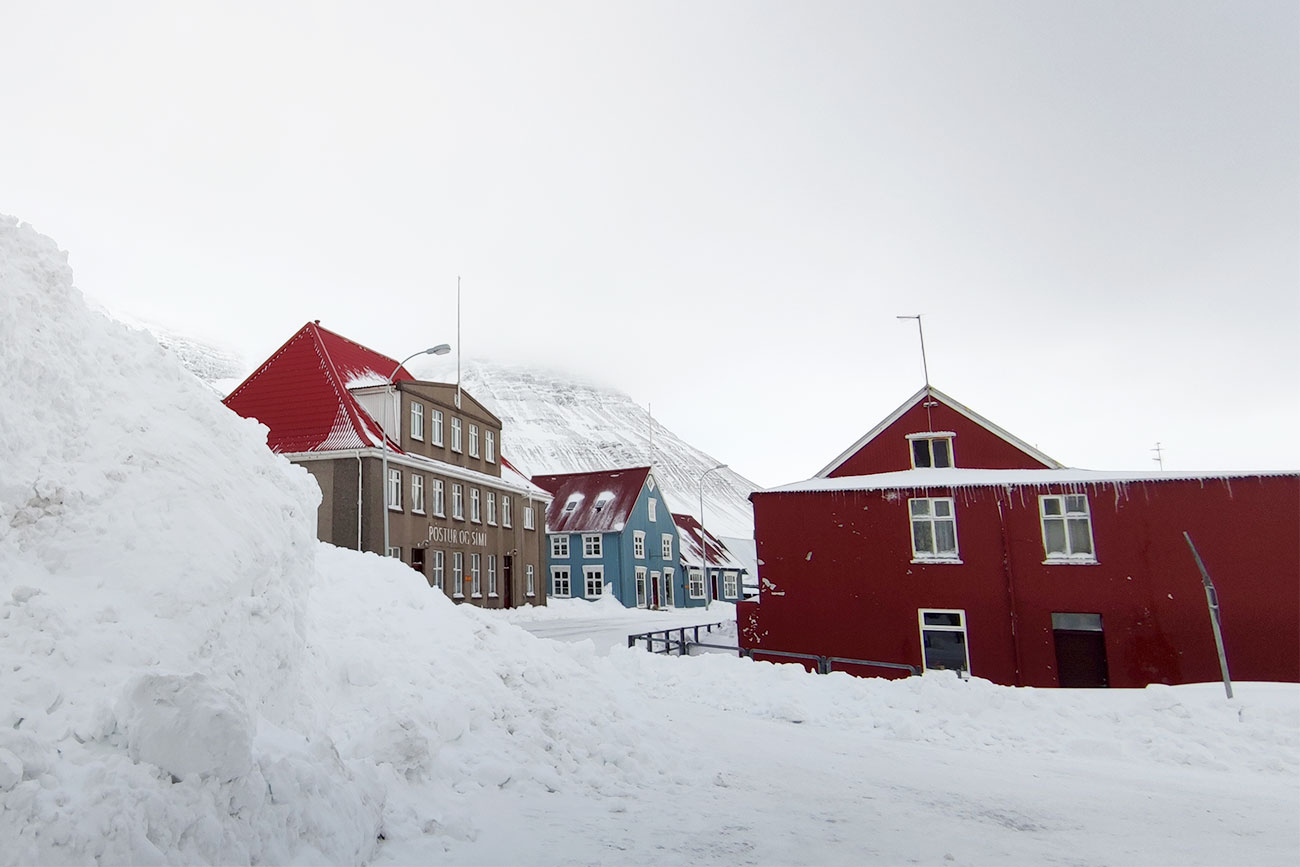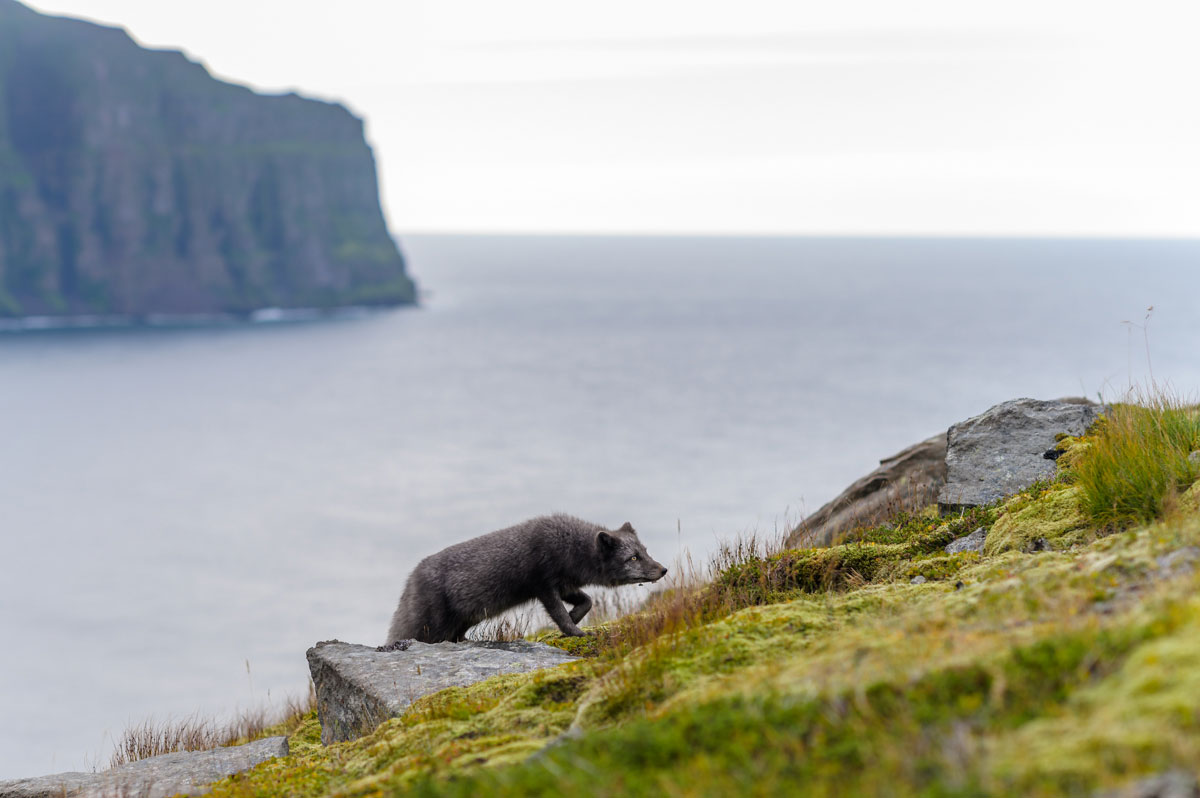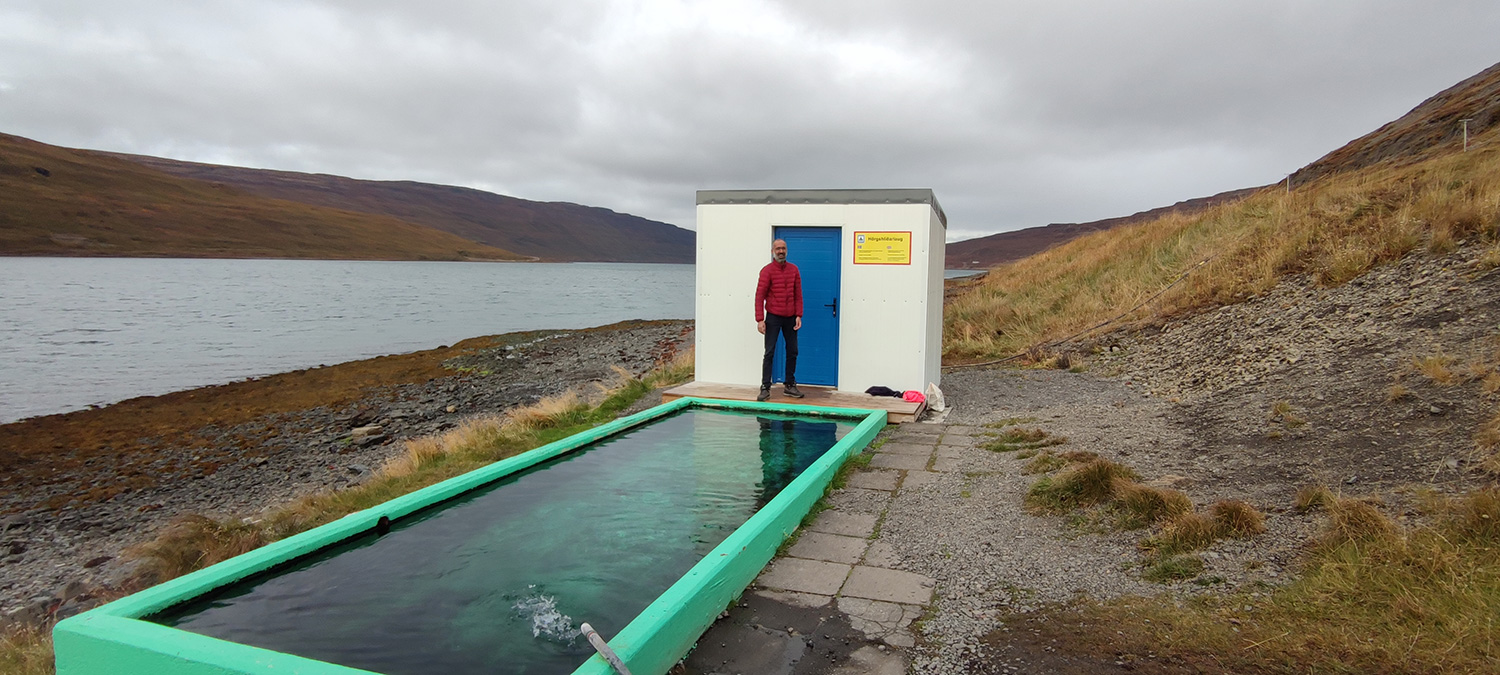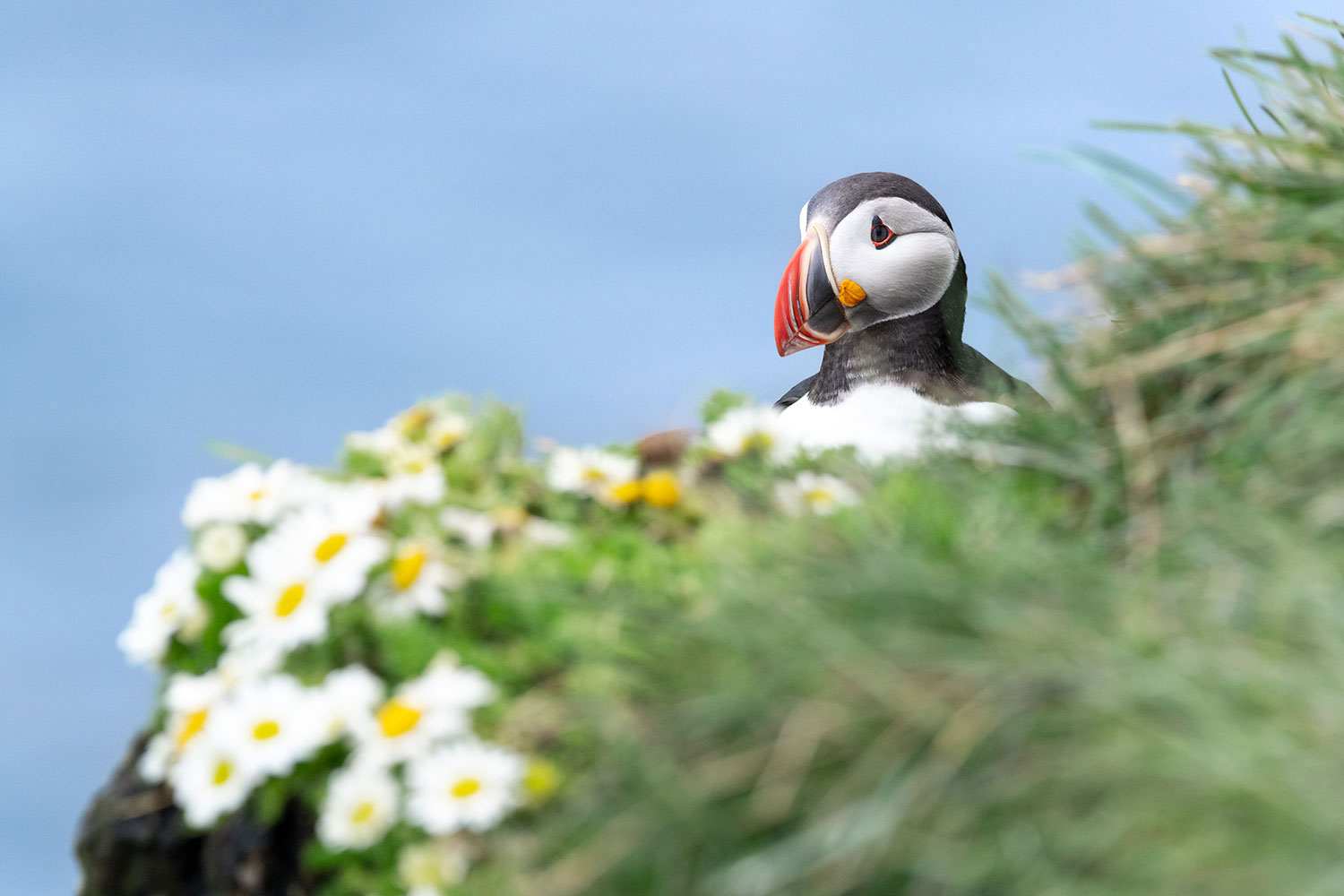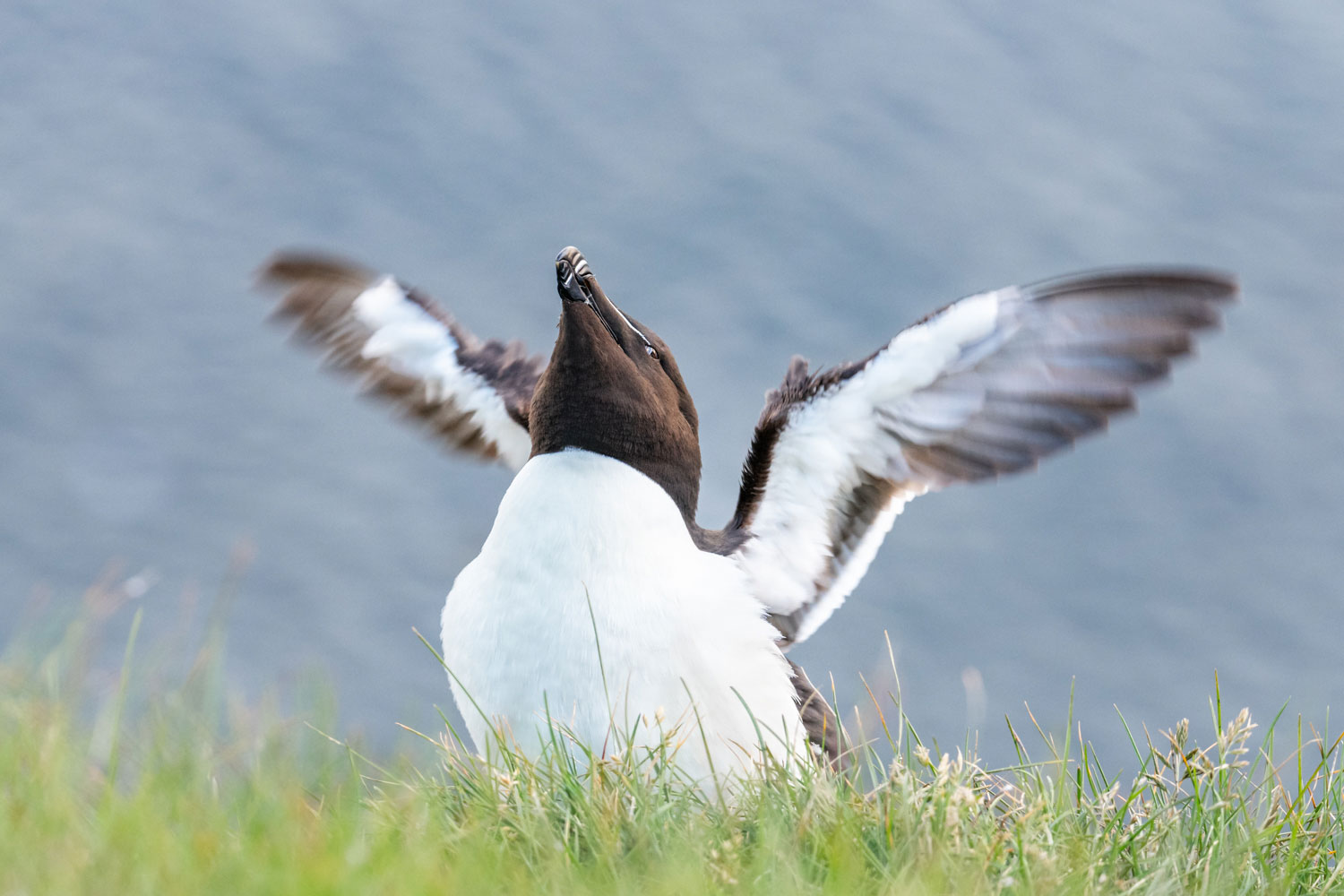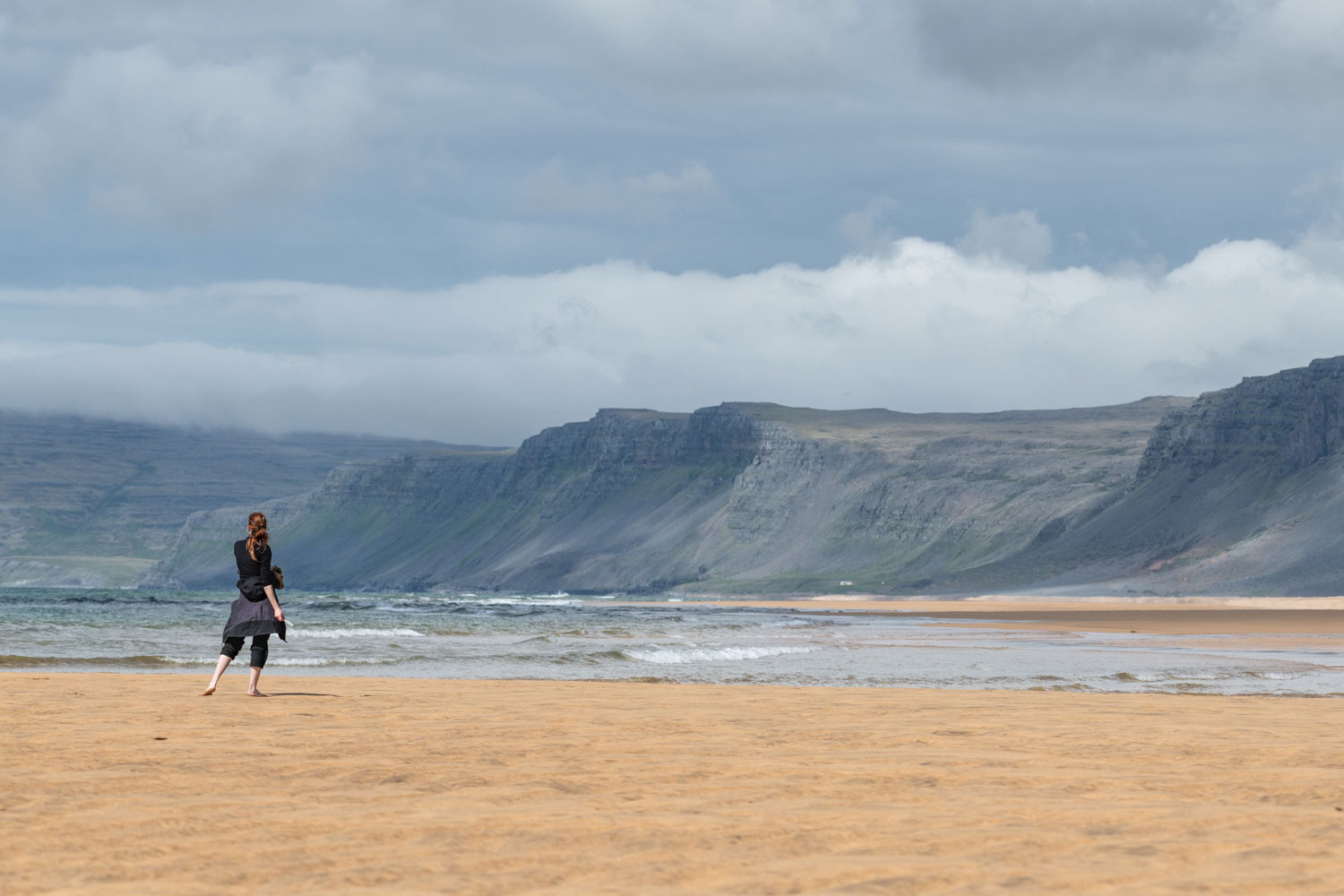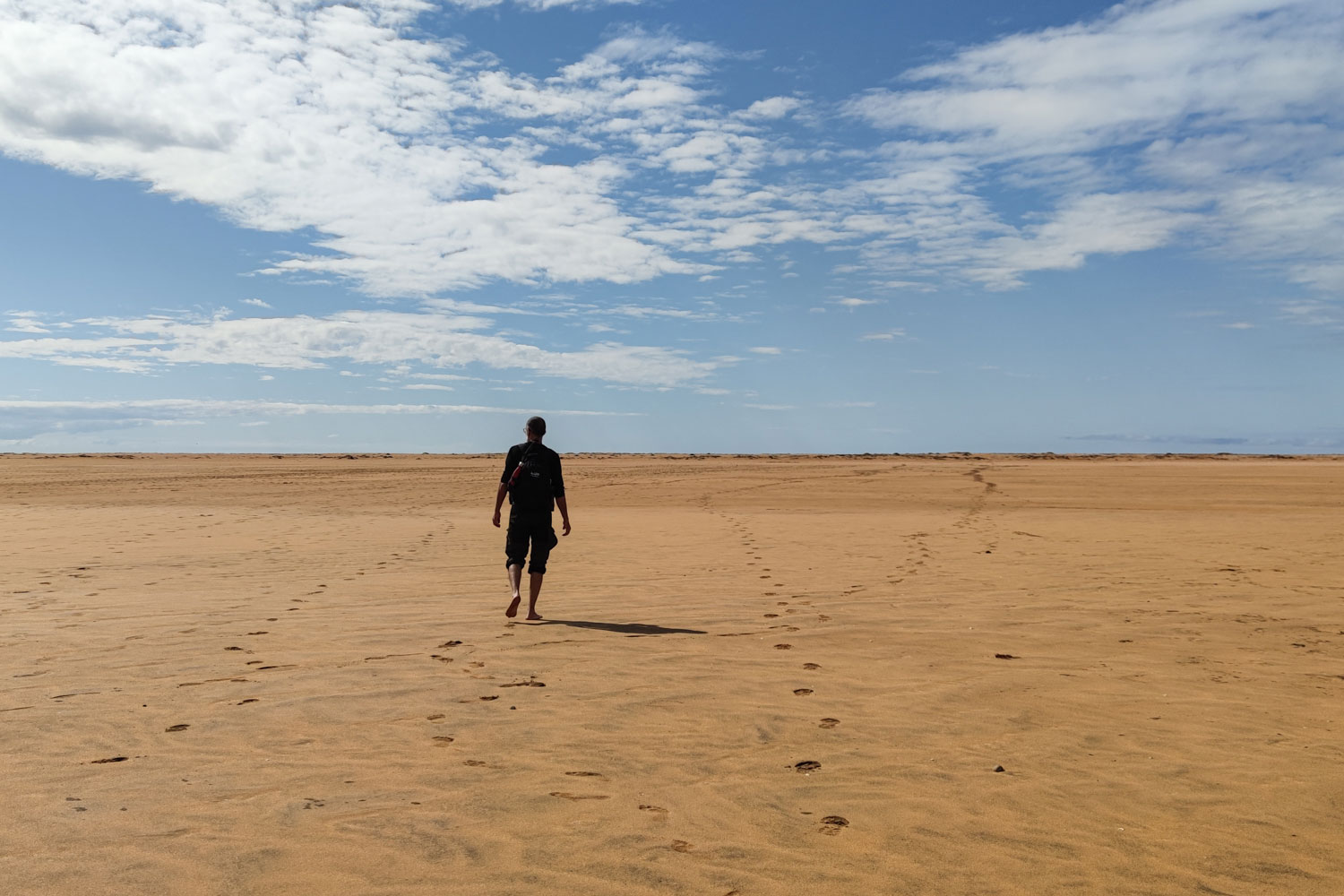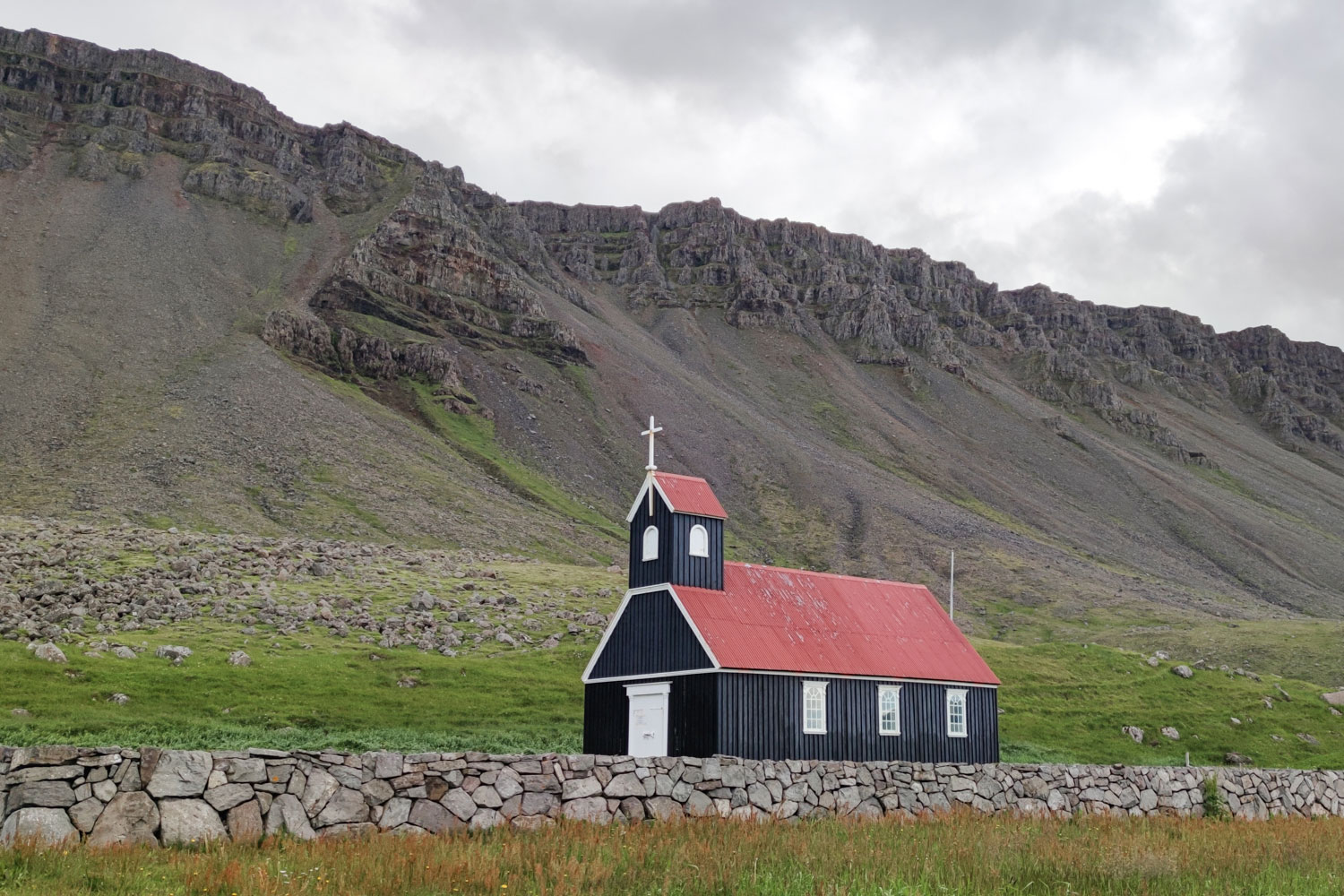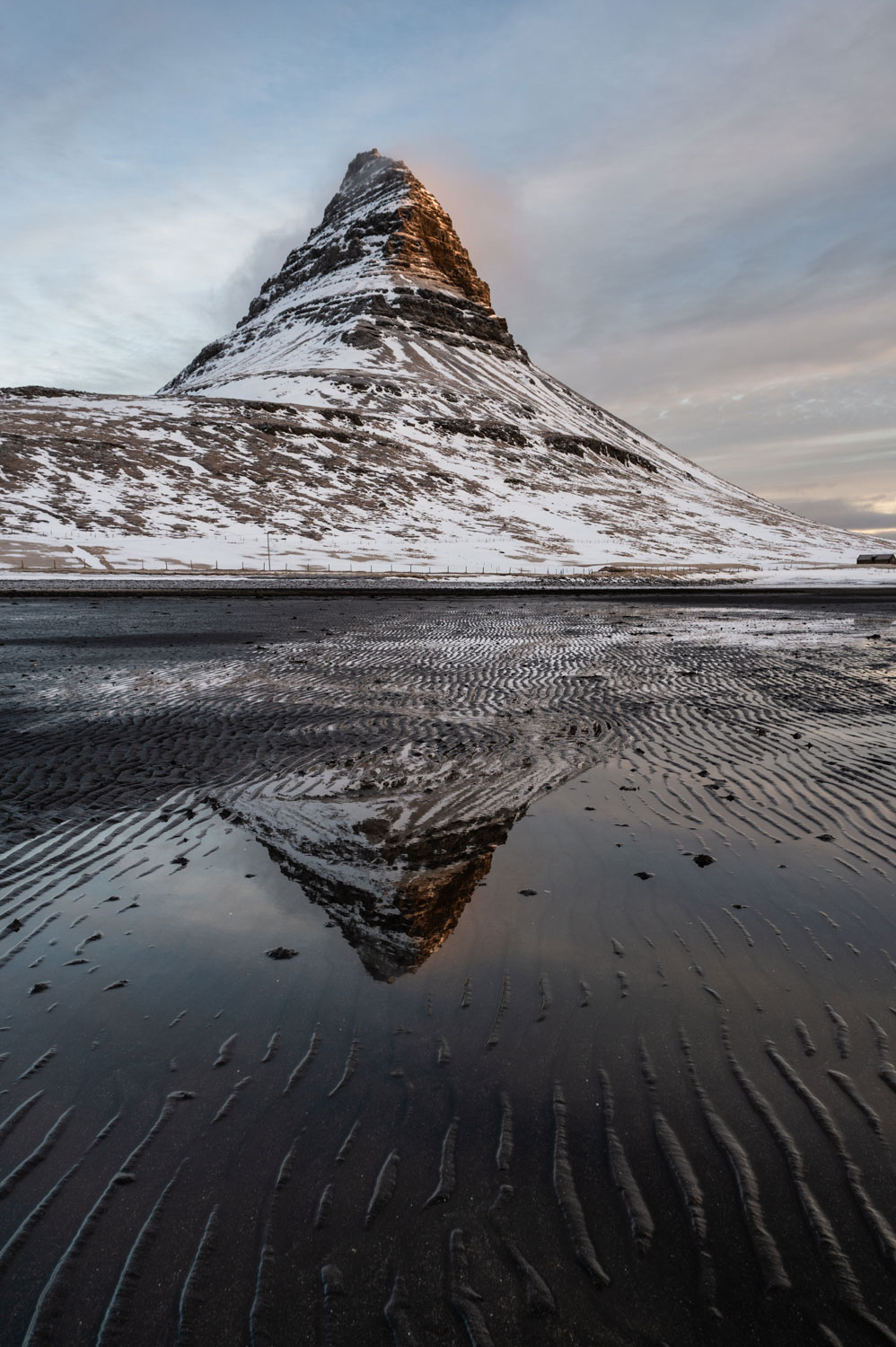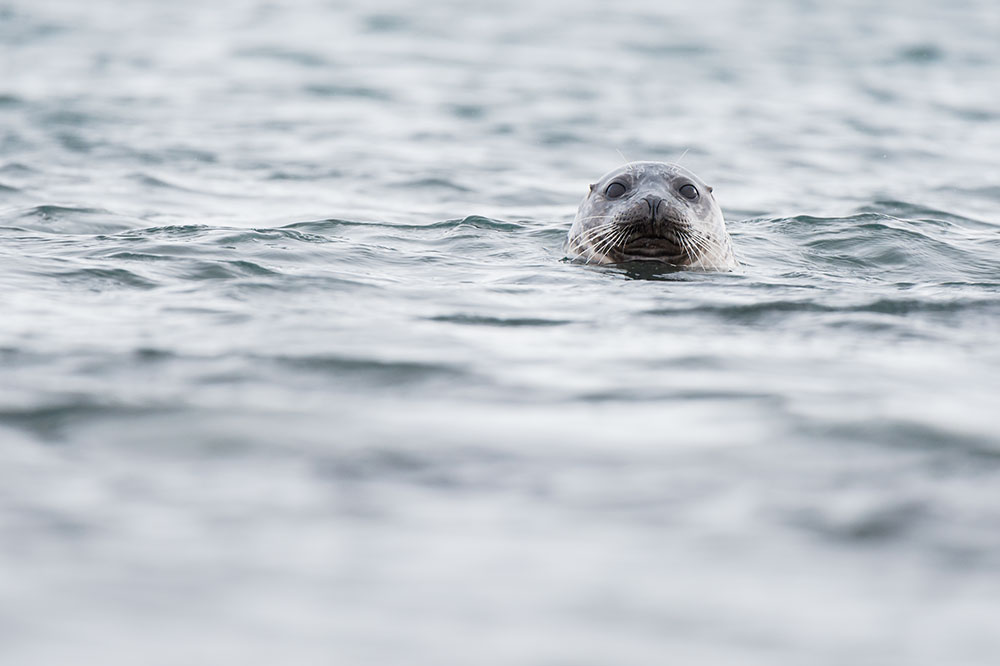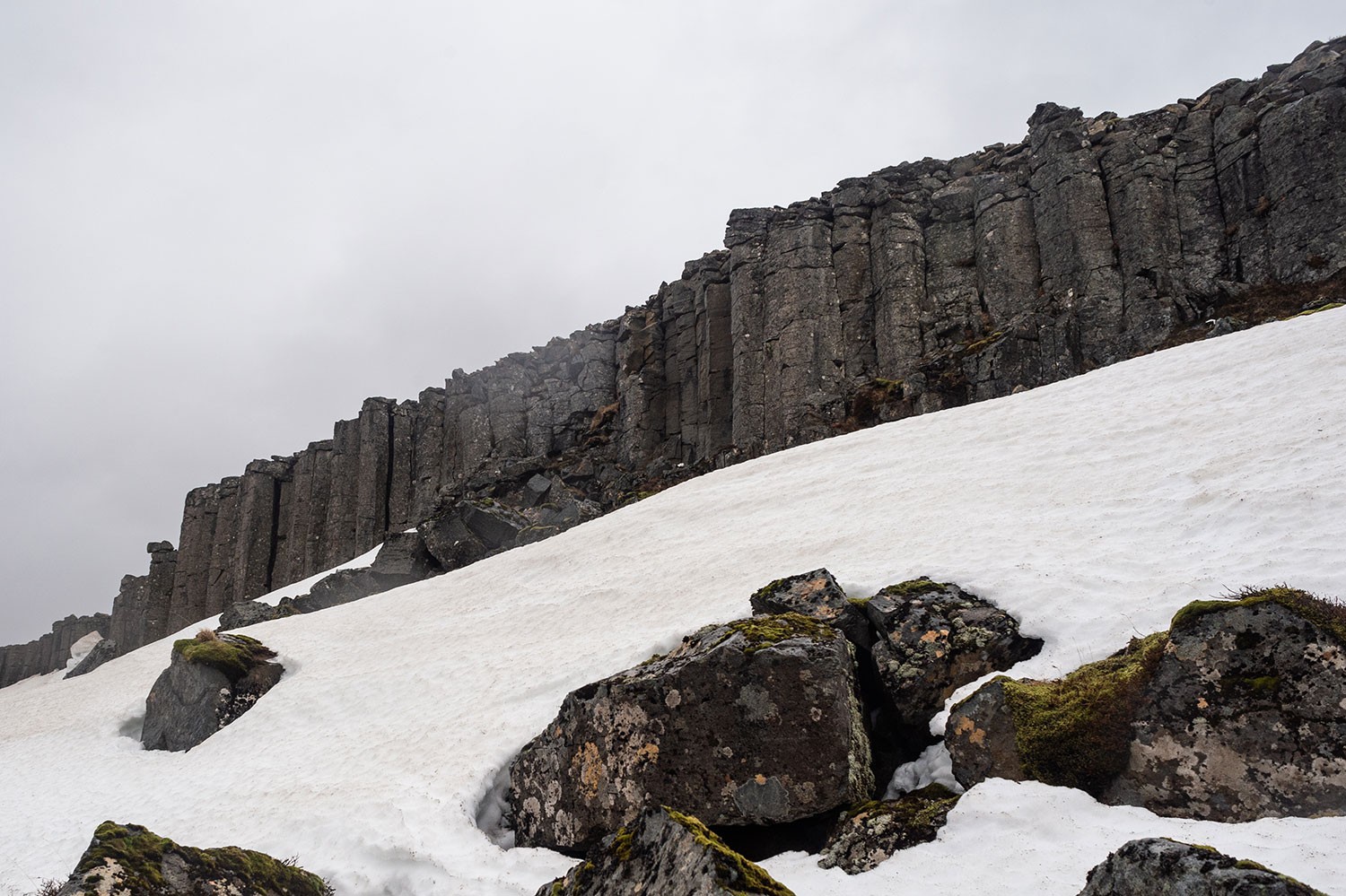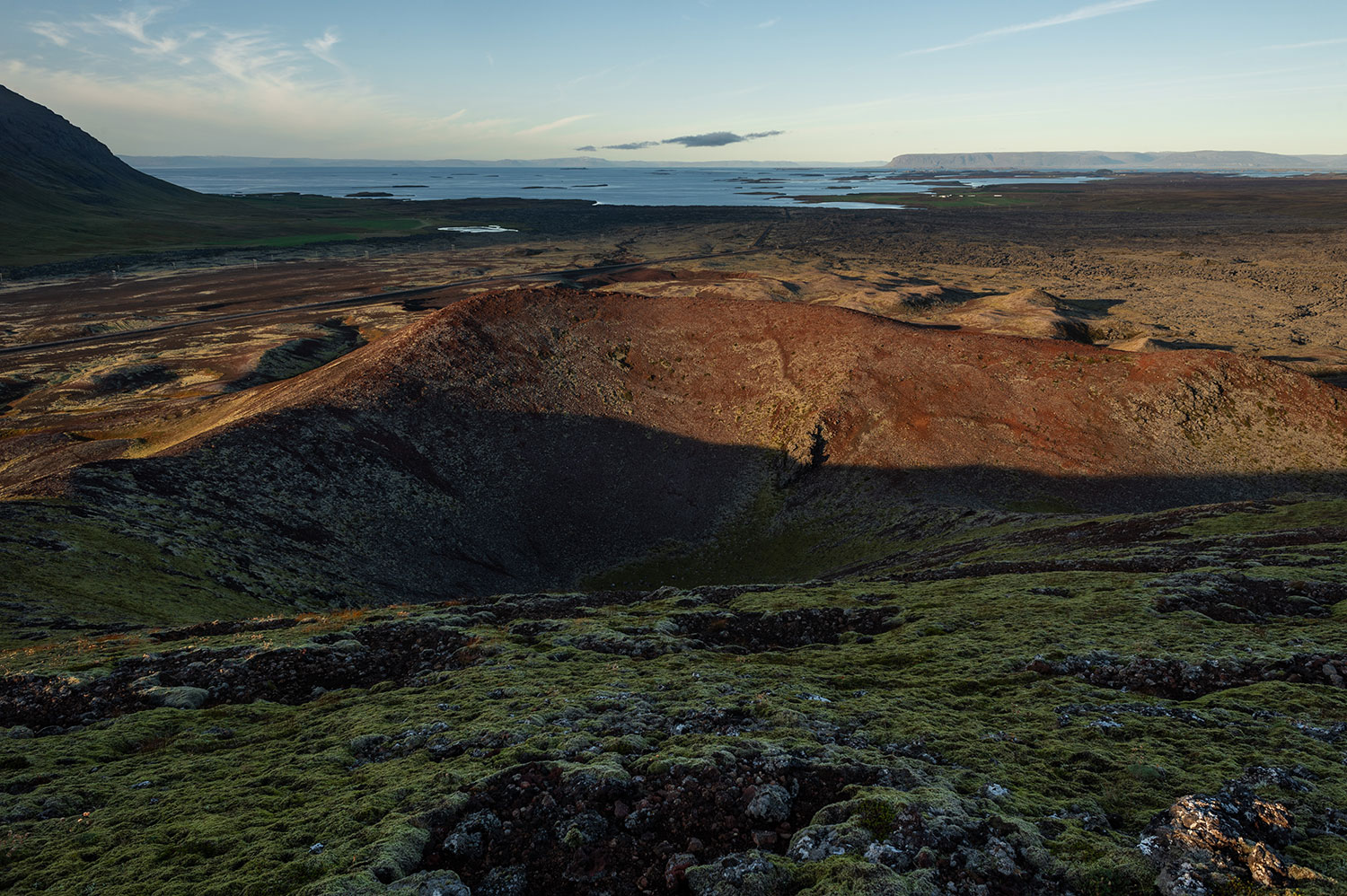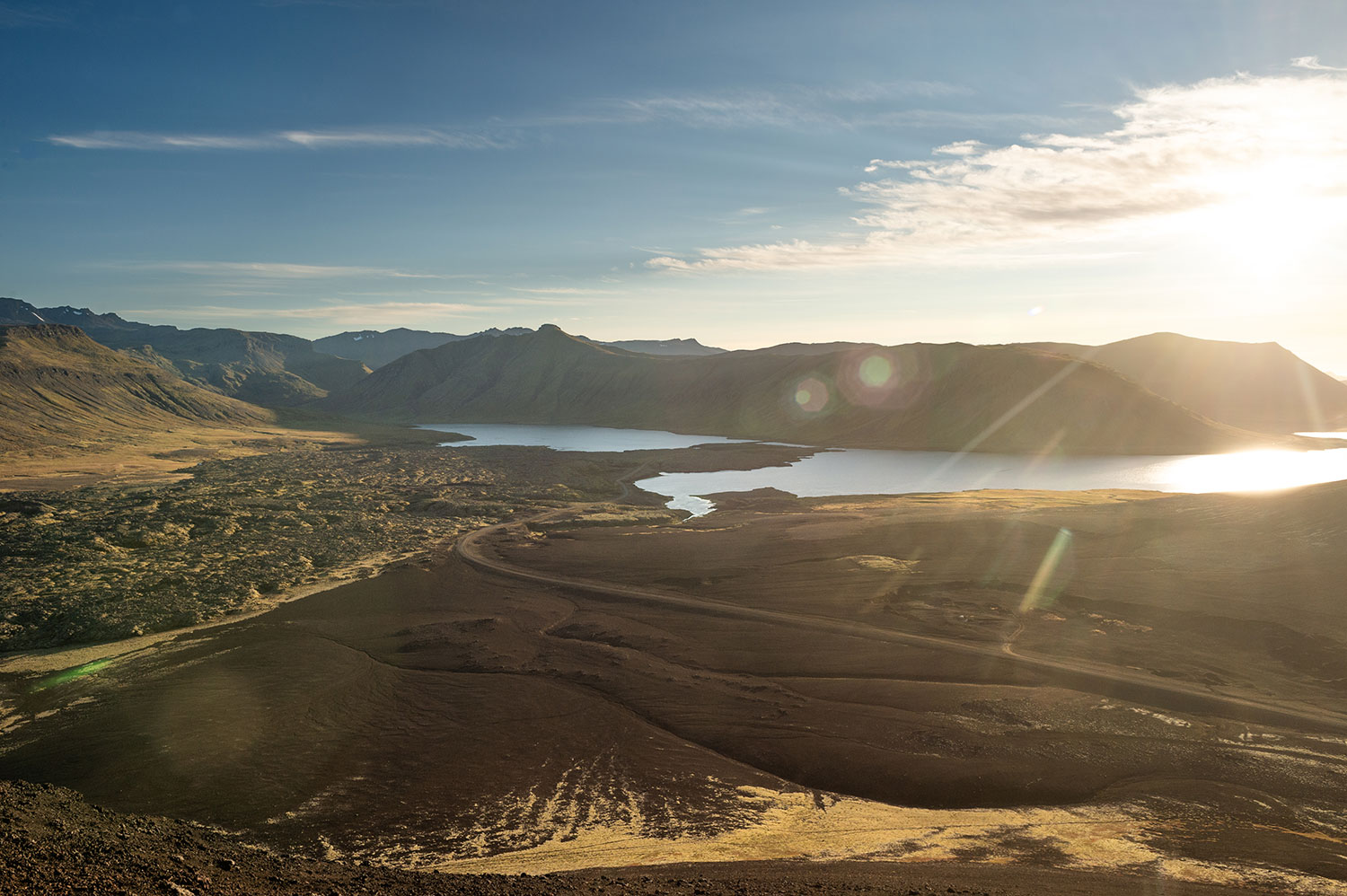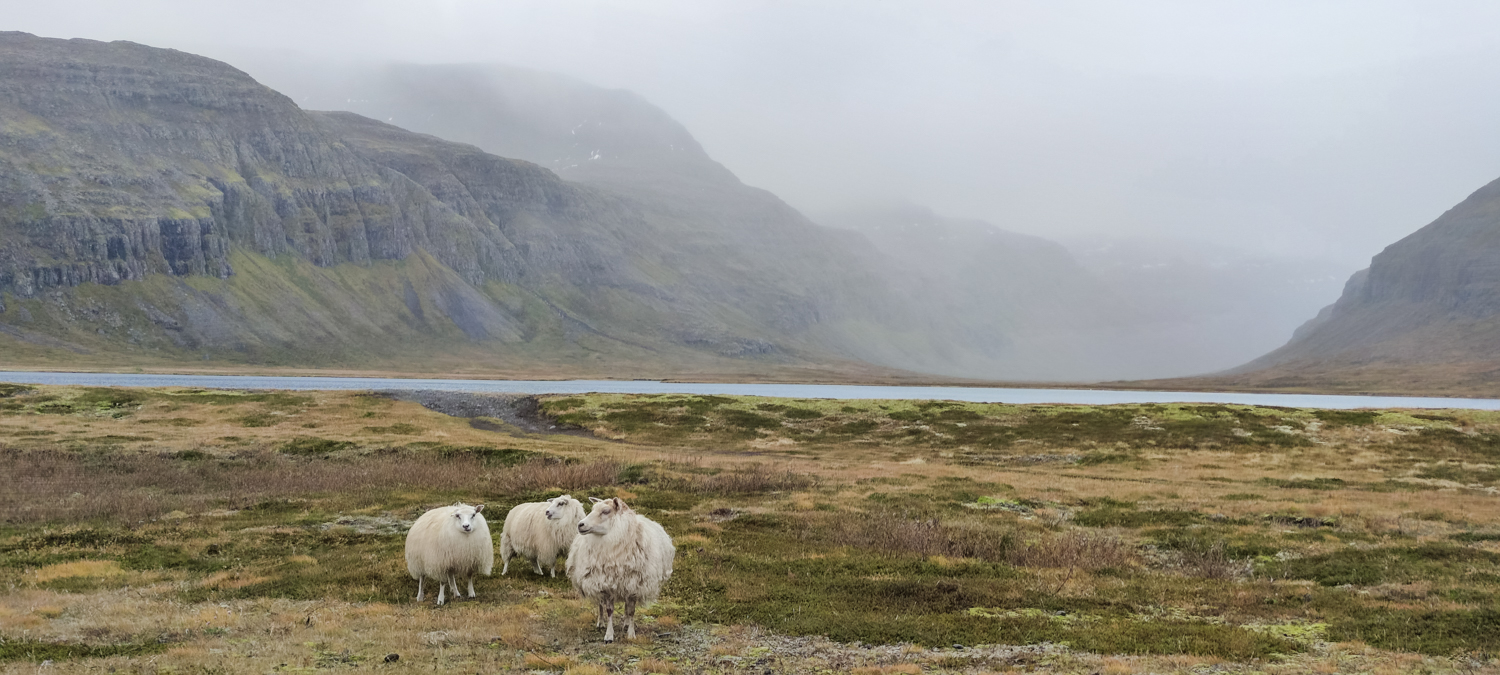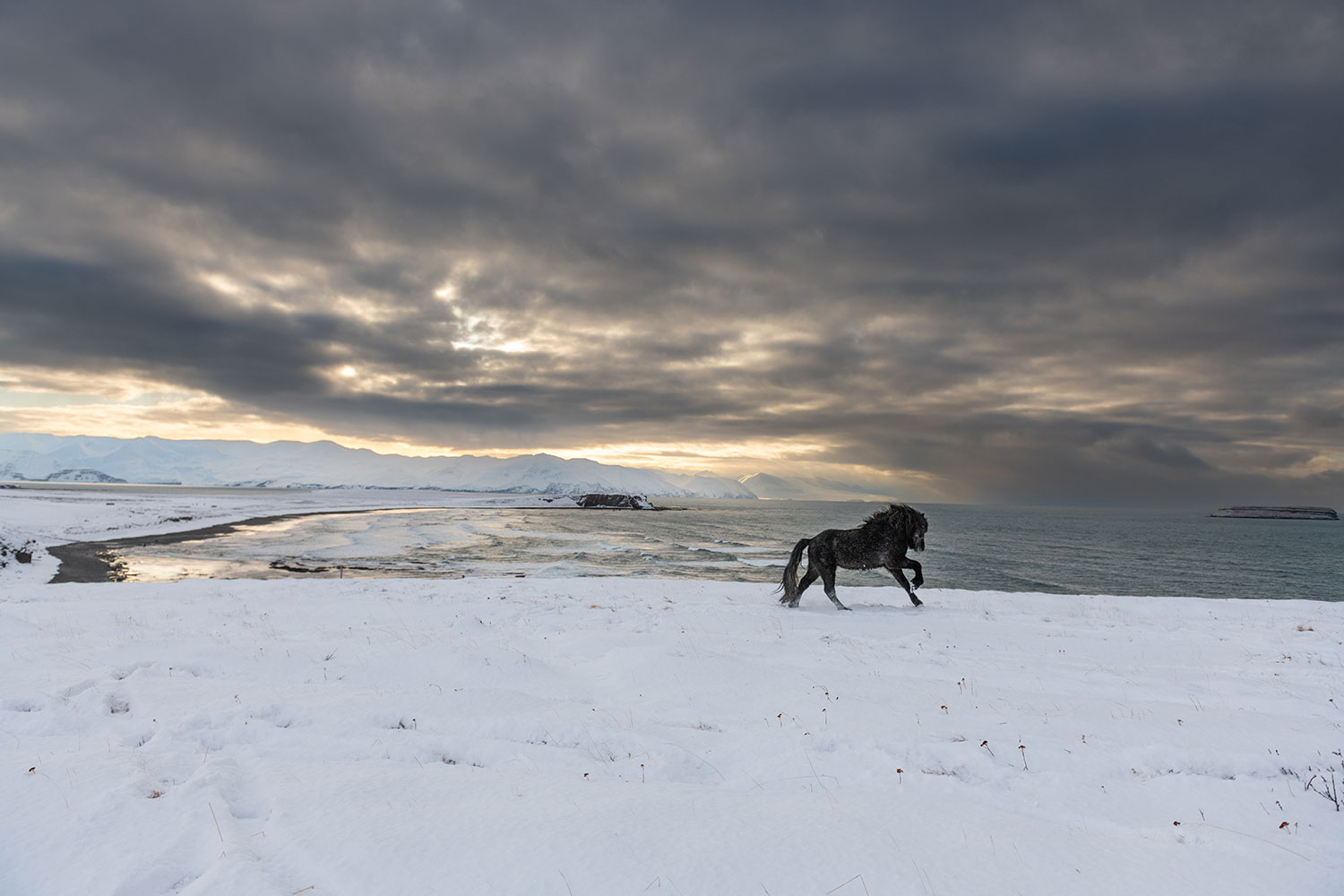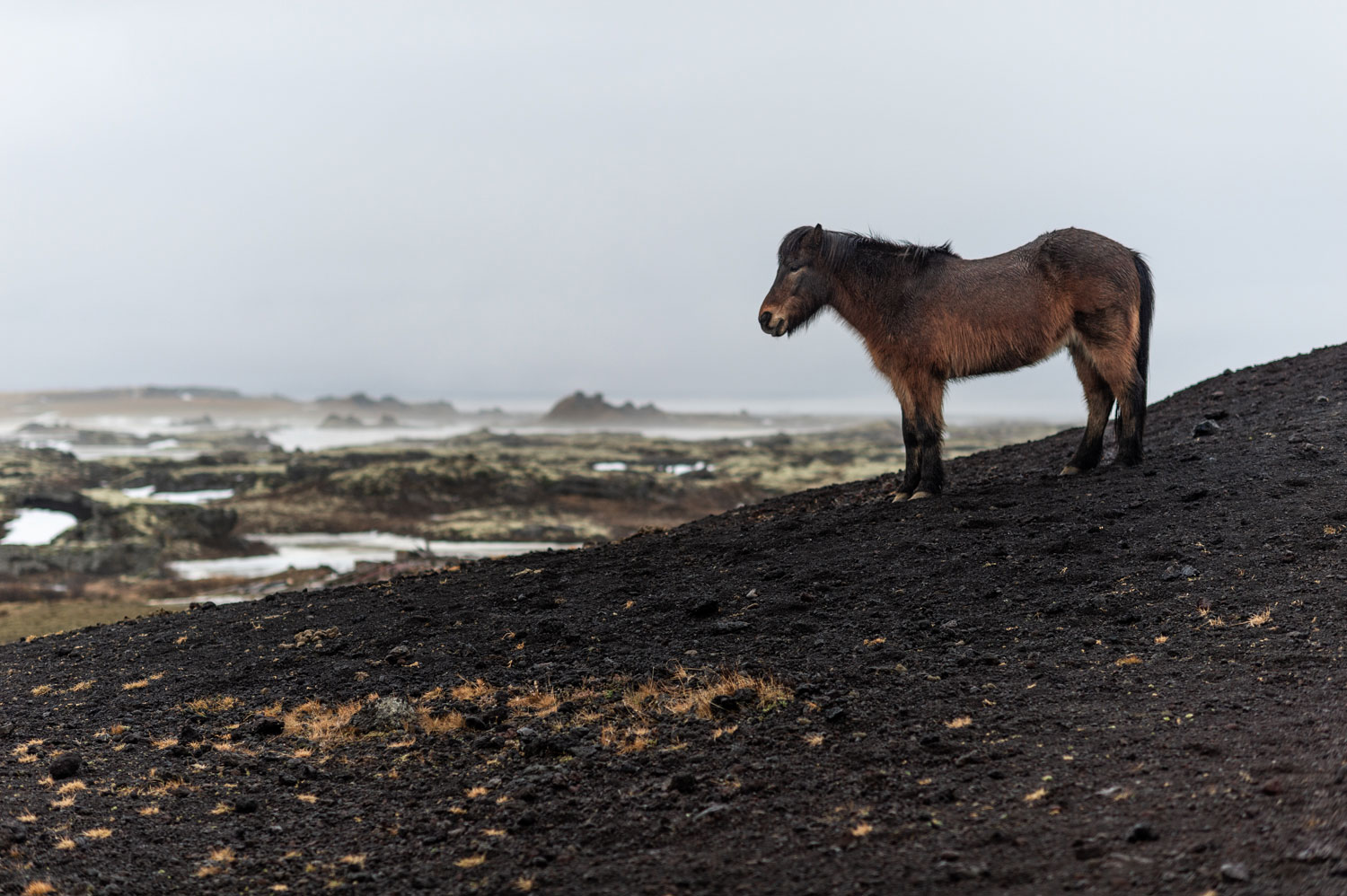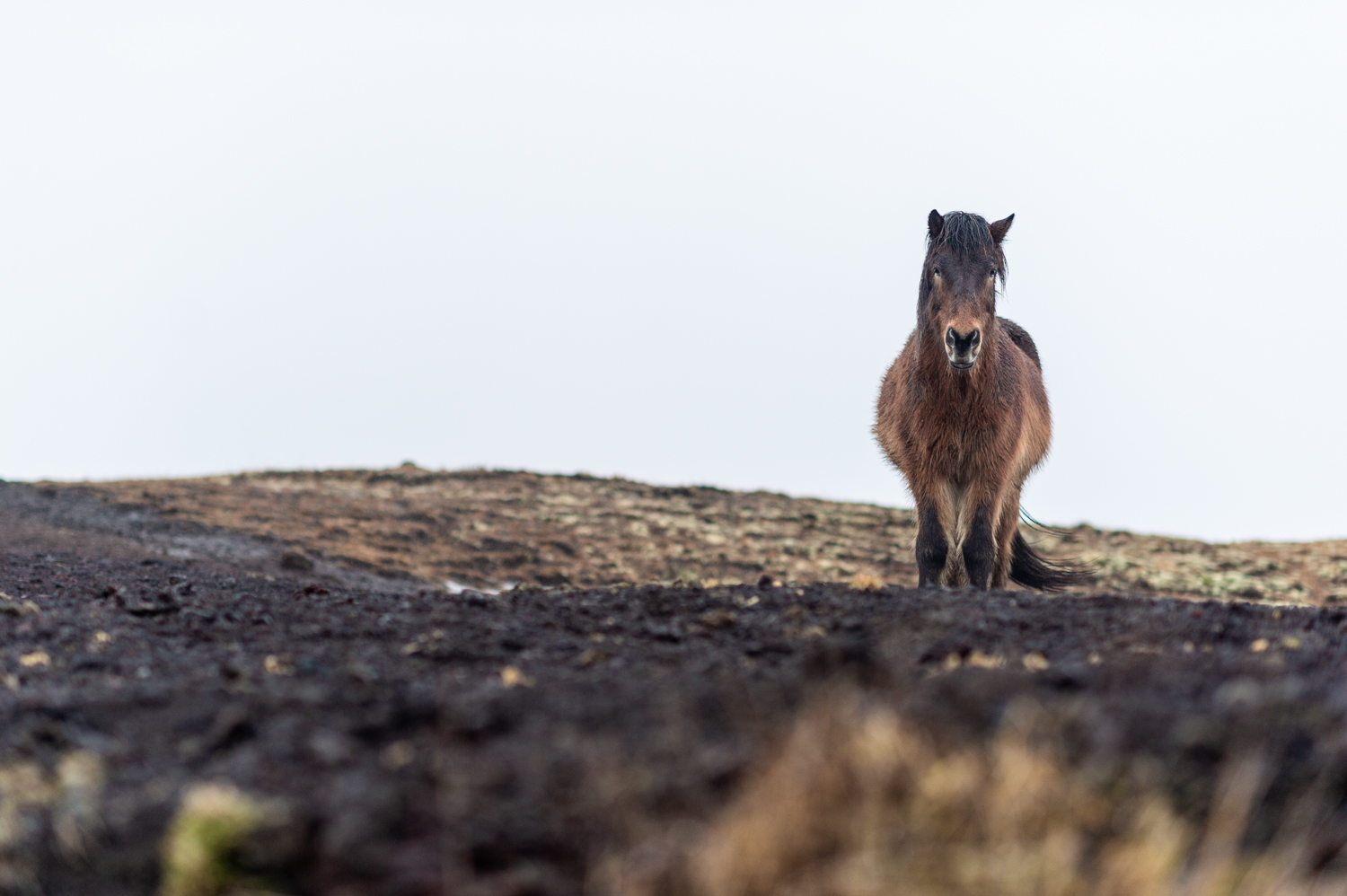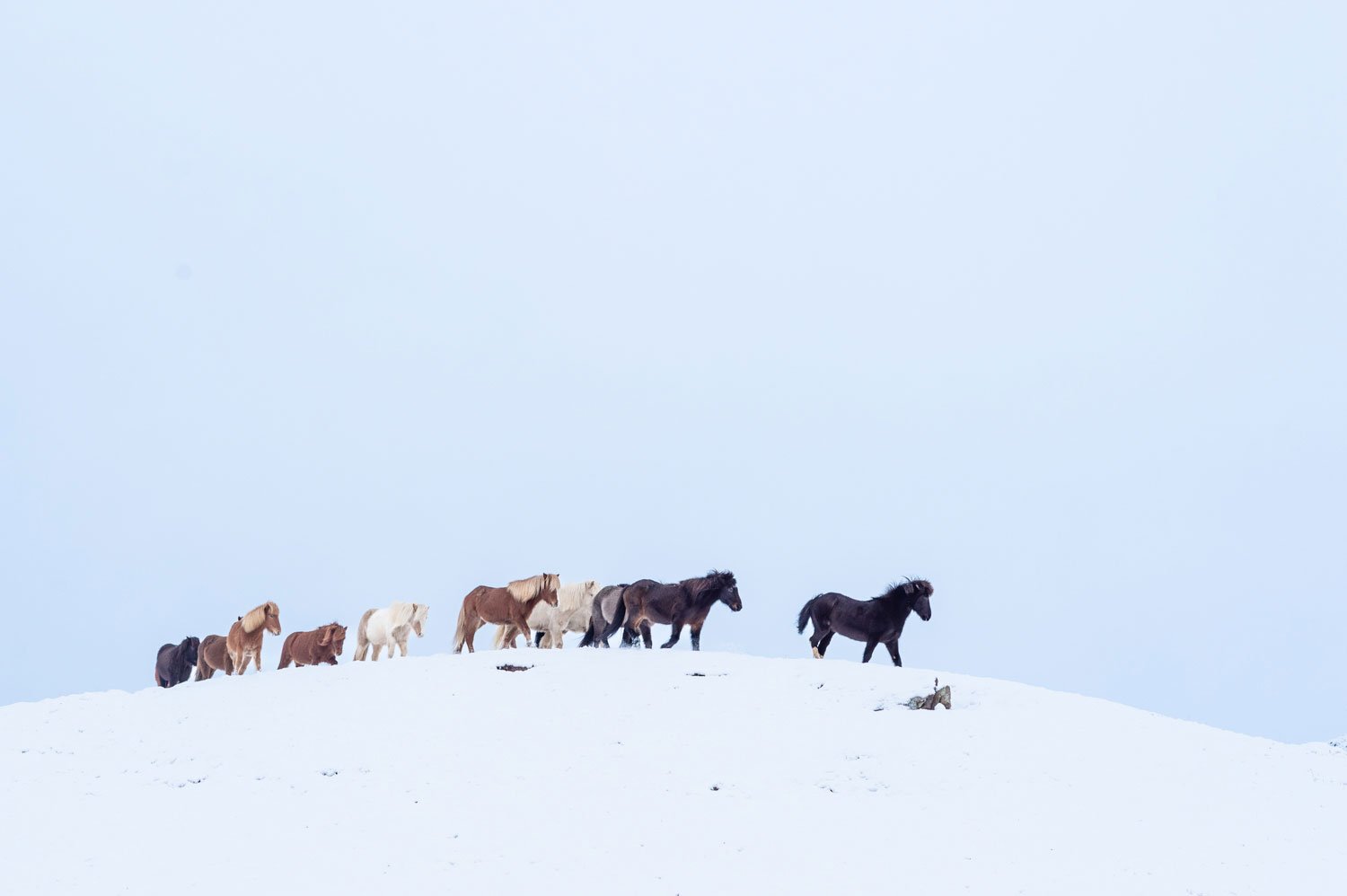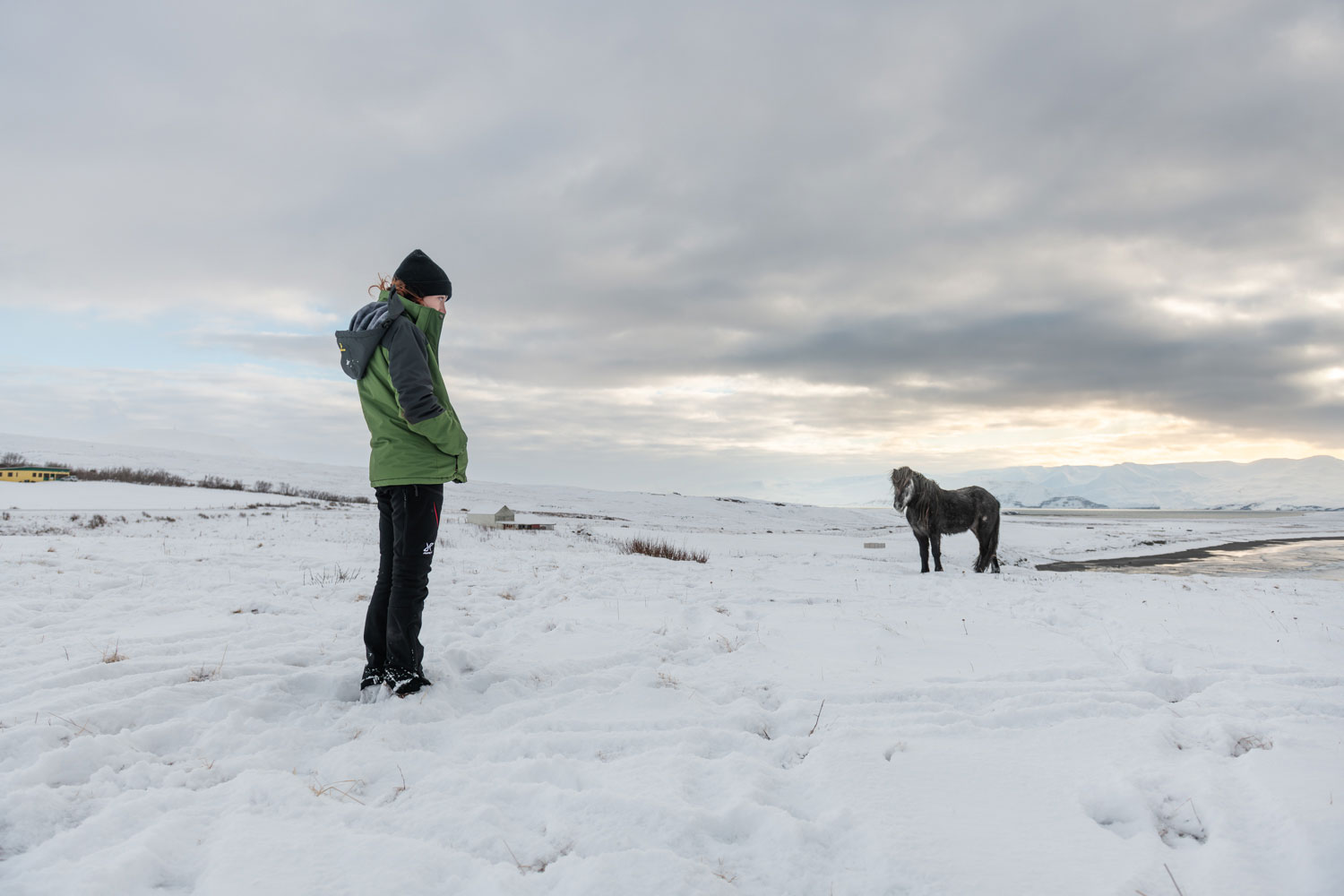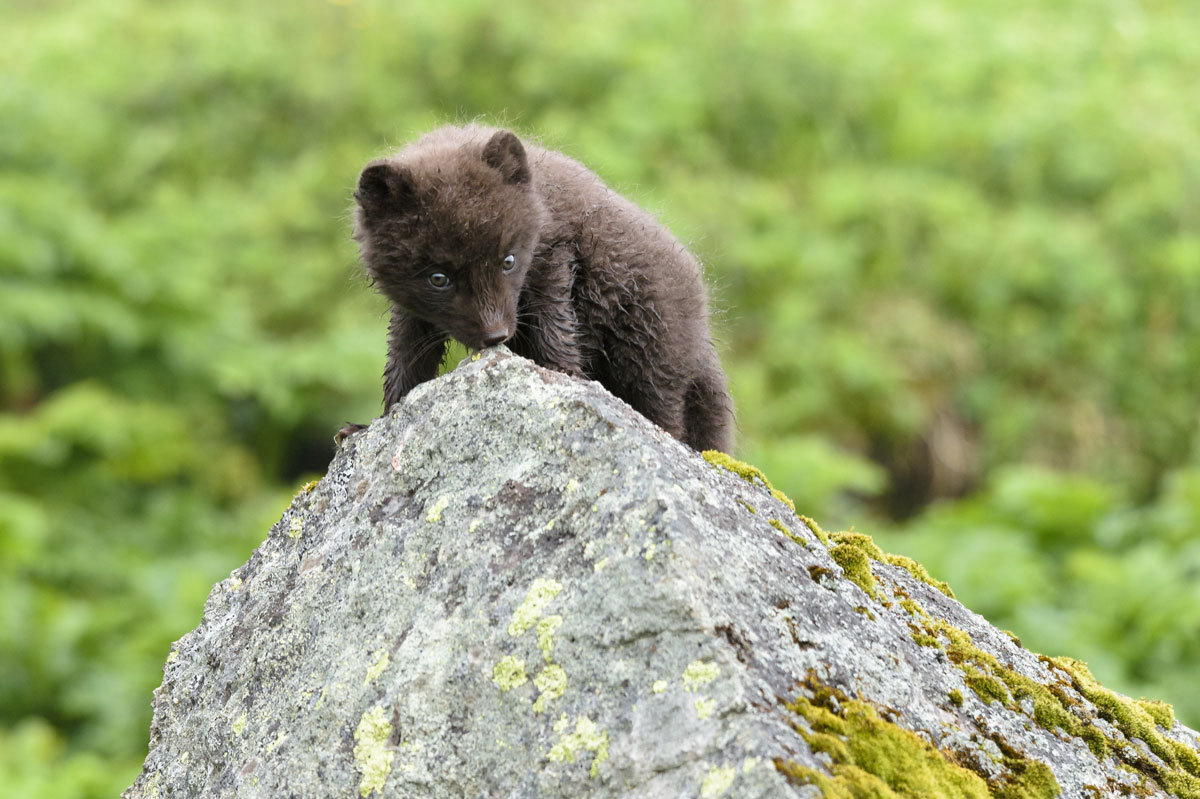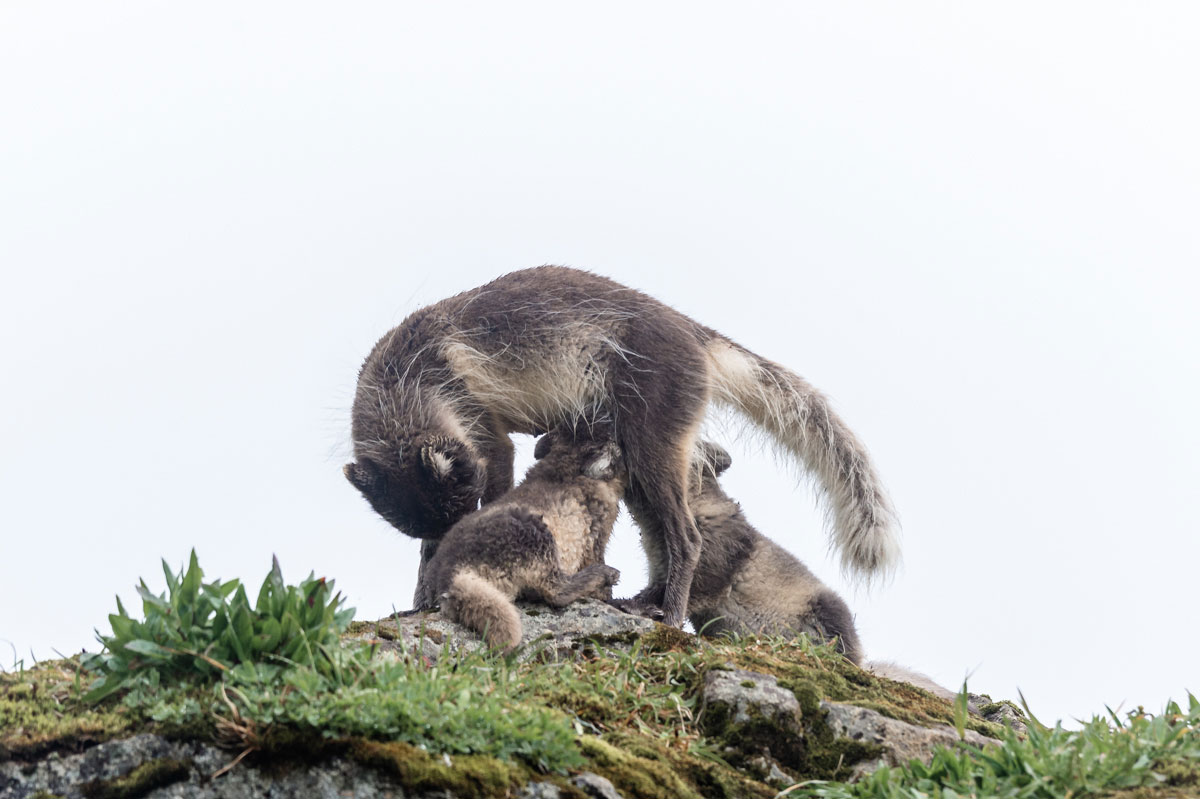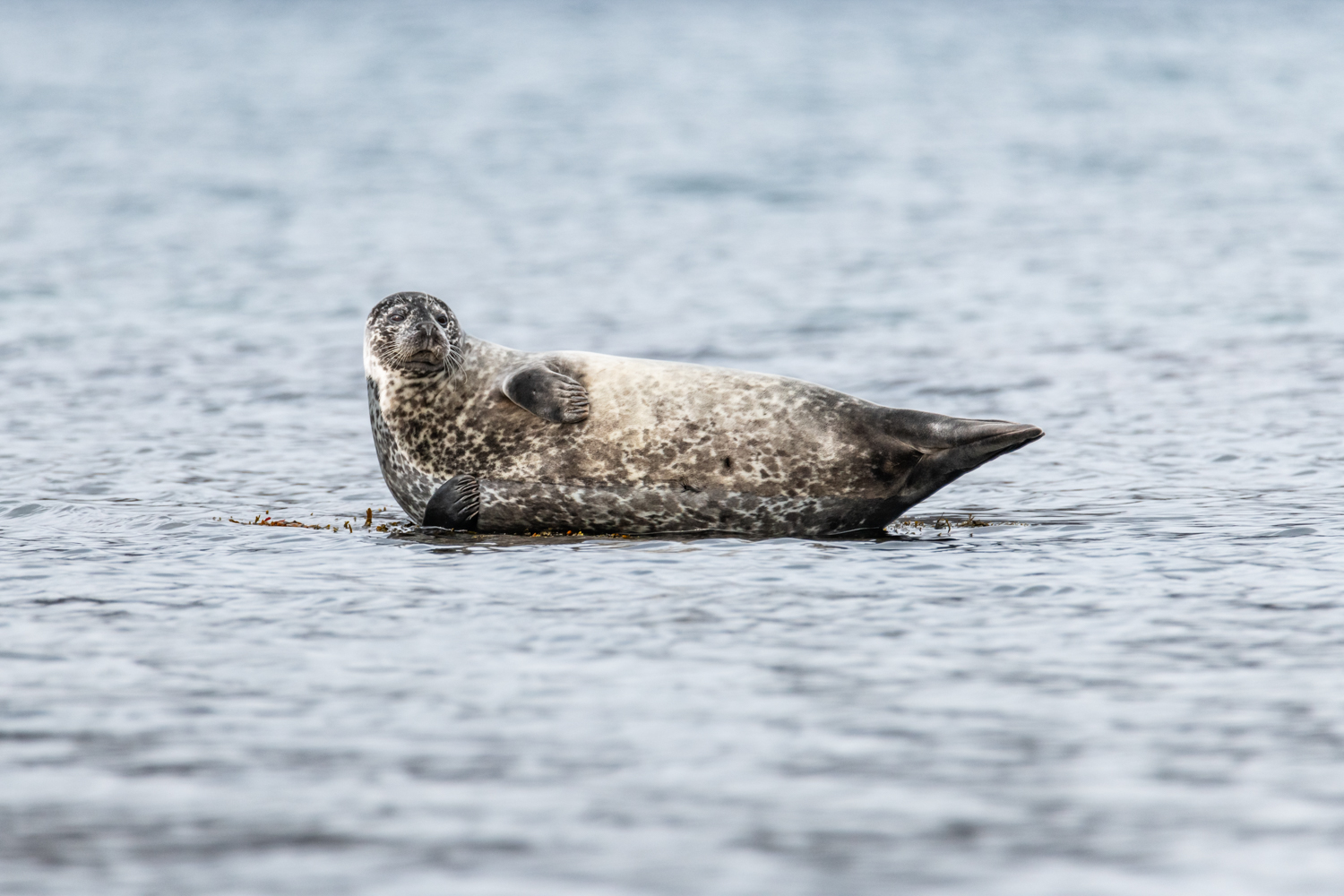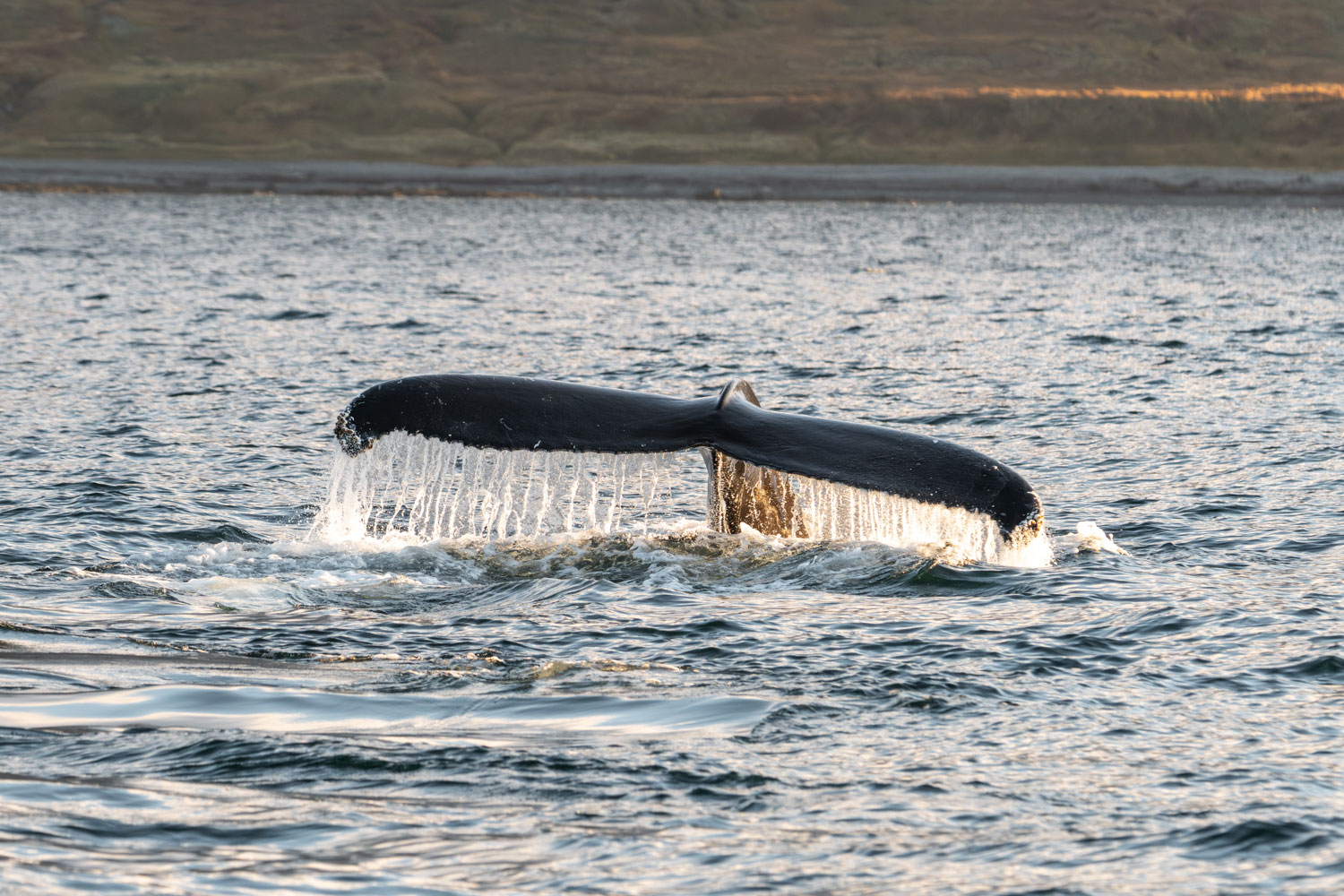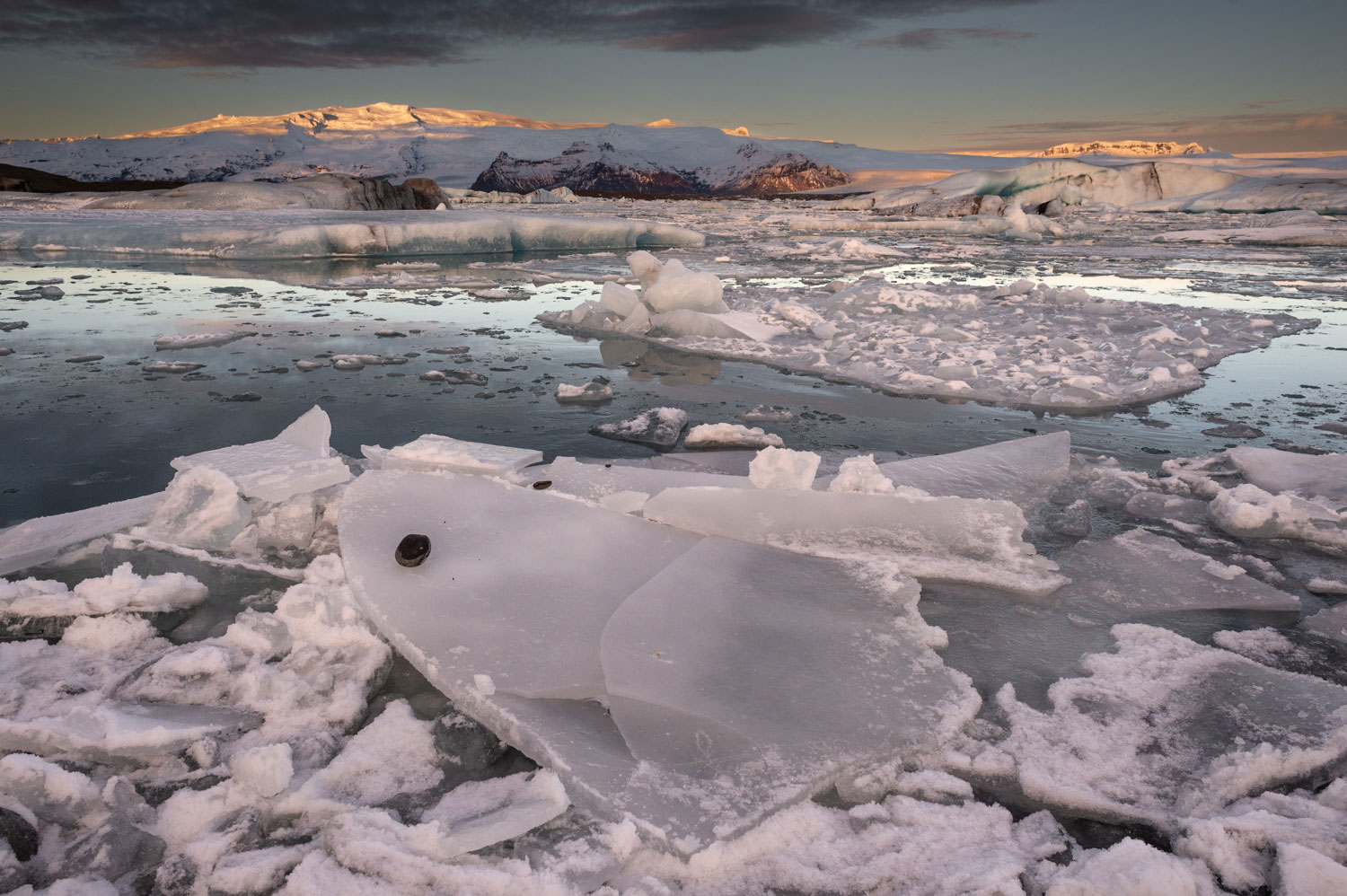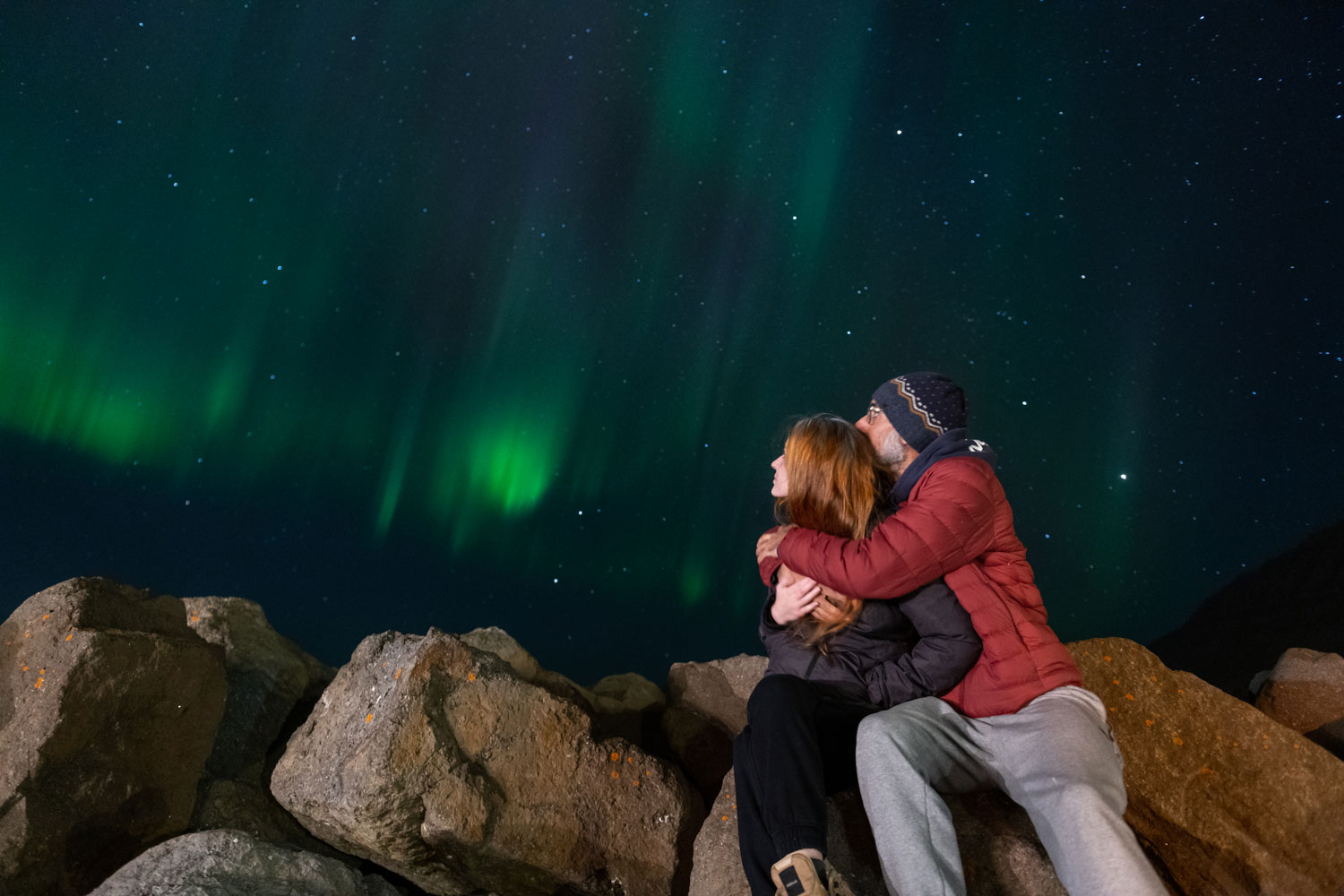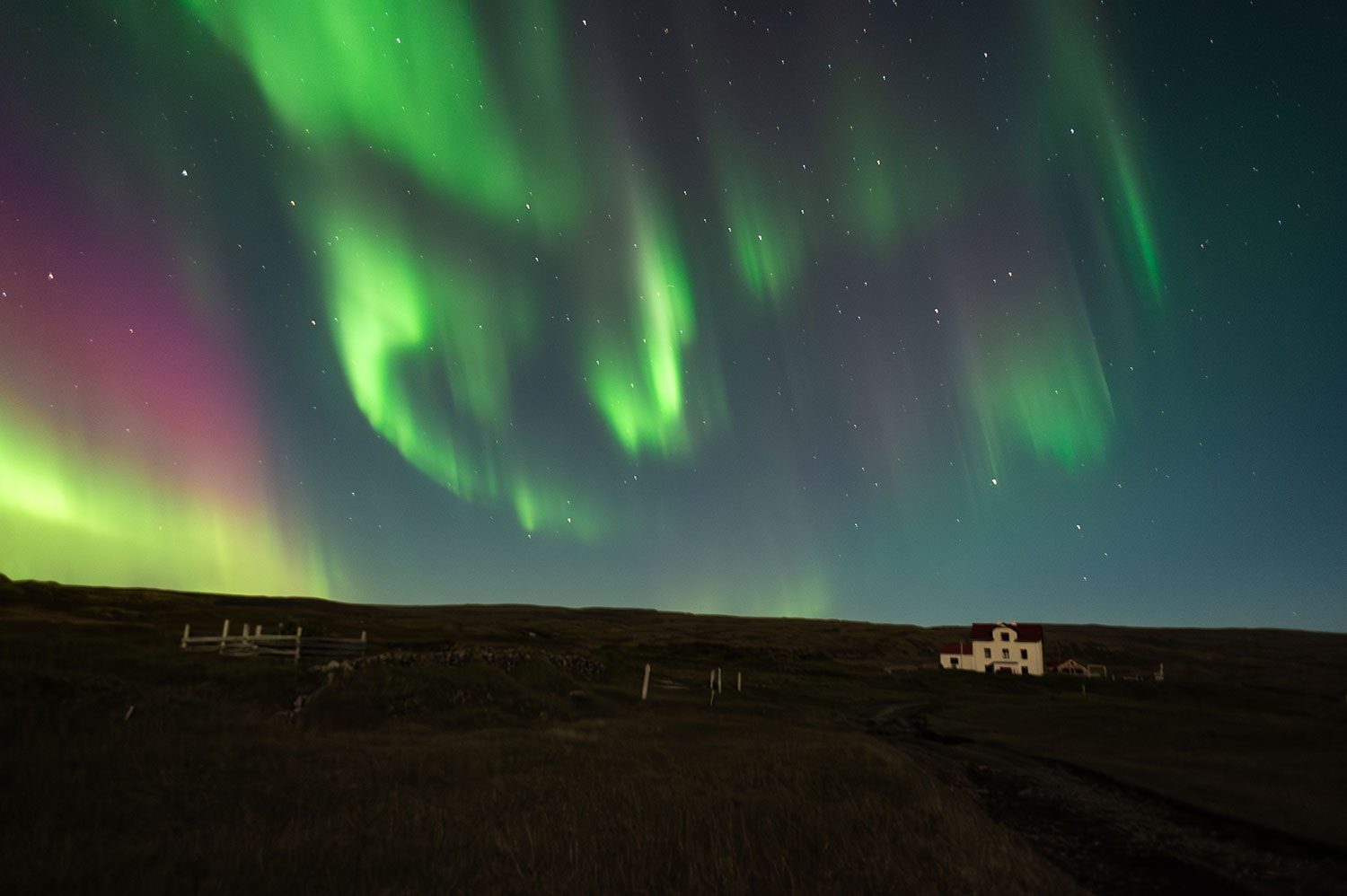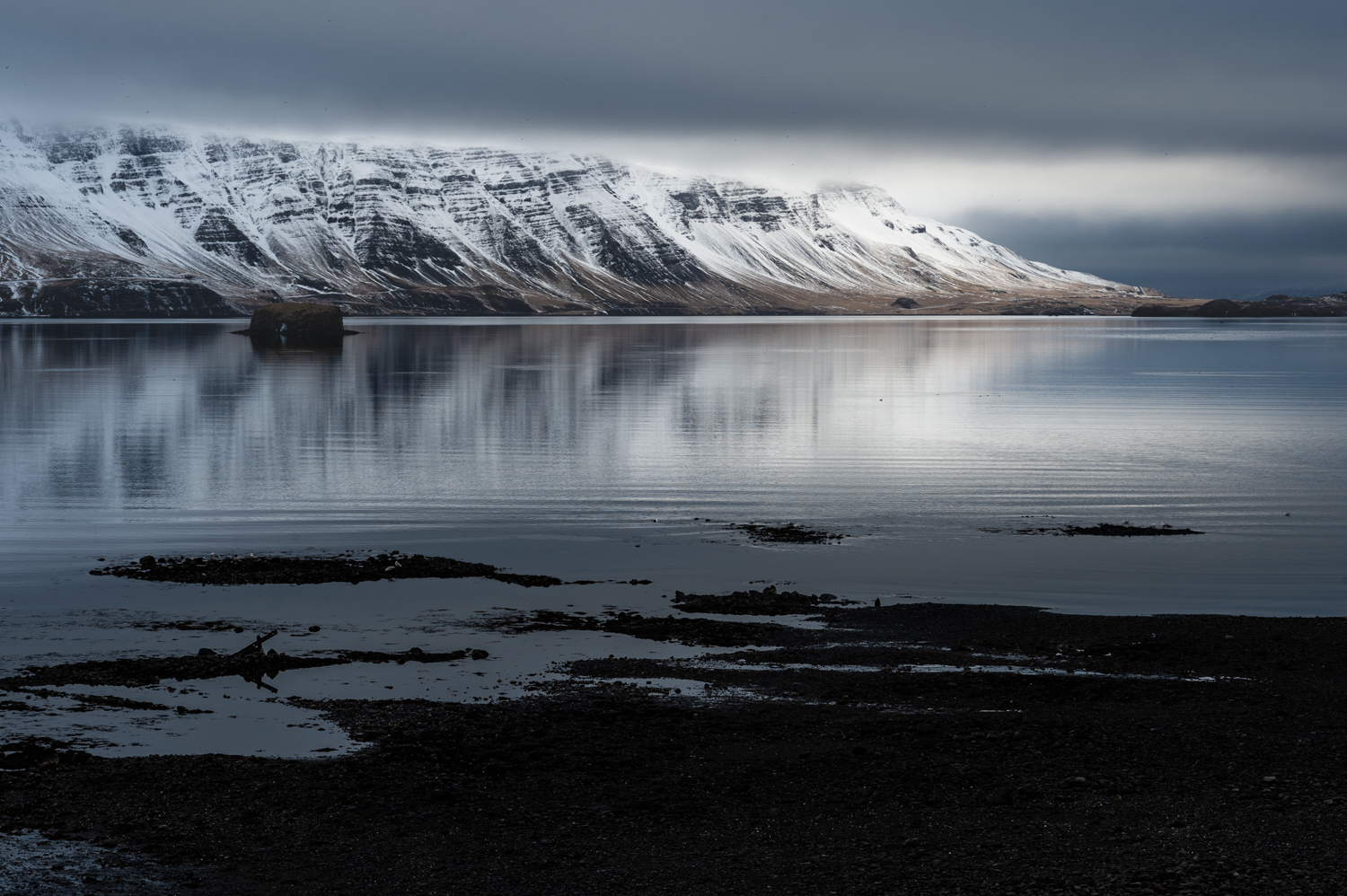Visiting Iceland in winter : the ring road in 10 days
Of the adventures we’ve been most excited about in recent years, travelling to the Land of Fire in winter was in the top 3. We wanted to see volcanoes and natural hot springs, but also glaciers, snow, lots of snow and extreme conditions, blizzards. We decided to make one of our dreams come true: visiting Iceland in winter ! This is the travel diary we’re sharing with you today.
What excited us most about this trip to Iceland was feeling the elements, feeling so small in front of the harshness and beauty of this wilderness. We knew Iceland from our autumn and summer visits. But this time, we wanted to see the real face of the island, that of storms, cold and ice!
A tour like this takes preparation: what to do in Iceland in winter? What clothes should we bring? Which roads are closed in winter? In short, there were lots of questions, and we spent a lot of time scouring forums and websites to make sure we didn’t miss anything. That’s why we’ve decided to put it all together in this article and tell you about our Iceland winter tour and give you some tips for visiting iceland in winter.
- 1 Visiting Iceland in winter: road trip on route n°1 (and beyond)
- 1.1 Visiting Iceland in winter : the south
- 1.2 Visiting Iceland in winter: the east
- 1.3 Visiting Iceland in winter: the far north!
- 1.4 Visiting Iceland in winter: the Westfjords
- 1.5 Visiting Iceland in winter : Snaefellsnes peninsula
- 2 Wildlife of Iceland
- 3 Breathtaking scenery!
- 4 Events not to miss in winter in Iceland
Visiting Iceland in winter: road trip on route n°1 (and beyond)
In winter, the inland roads of Iceland are mostly closed. For the most part, they are gravel roads. For our road trip, we confined ourselves to Route 1 and a few maintained secondary roads. We didn’t hesitate to get off the beaten track whenever possible. The goal was to make a 10 days trip in Iceland in winter avoiding the crowds as much as possible. There’s a lot of things to see in Iceland in winter, but what we really wanted to do was discover Iceland’s wilderness!
Visiting Iceland in winter : the south
Touring the island can sometimes be complicated. But Visiting South Iceland in winter is the easy part. Because the south rarely has snow. We’ve always had roads clear of snow and ice, whereas elsewhere in the country, drivers have to be vigilant because the roads are icy and/or snow-covered.
Visiting South Iceland in winter allows you to see all the natural sites in a snowy and sometimes arctic atmosphere. Unfortunately, few waterfalls freeze over in the south. If you want to see ice landscapes with frozen waterfalls, you should go to the north and the Westfjords.
It takes just 3 hours to cross the south of Iceland. This part of the country is accessible via route 1. It is rare to see this part of the road closed due to bad weather. This was the easy part of our Iceland winter trip. Only the glacier region to the south-east is prone to flooding.
Finally, the south of Iceland is full of natural treasures to visit. Despite the fact that this part of the country is the most popular with tourists, some natural sites are a must for people visiting Iceland in winter.
Reykjavik, the capital of Iceland
Reykjavik is the capital of Iceland. This small, village-like town has become increasingly important in recent years. It is now one of the main cities to visit in Europe. While visiting Iceland in winter, we spent a few days in Reykjavik, visiting the city, its historic sites and museums, as well as scouring the bars and restaurants for the must-sees.
Despite its isolation, Reykjavik is open to the world. The city’s inhabitants are rather progressive, in the way of other Scandinavian countries. It is therefore a city where human rights are important, and which is at the cutting edge when it comes to women’s rights and rights in general.
Elsewhere in the country, on the other hand, the culture is rather conservative.
Reykjavik is also the capital of parties and nightlife. There is no shortage of places to go out and meet people. The locals are rather curious, even if over-tourism tends to keep them further and further away from visitors.
Today we can share with you a number of good tips, but also what to avoid at all costs in Reykjavik!
National Museum of Iceland
National Museum of Iceland is a gem! The museum traces the history of Iceland and the culture of Icelanders from the first settlers to the present day. Seeing the evolution of Icelandic culture over the centuries and discovering the events that have left their mark on Icelanders was very interesting. We recommend this museum as a priority if you visit Reykjavik.
In the National Museum of Iceland, you’ll find historical and even genetic information about the first inhabitants of Iceland. You’ll discover how the Vikings settled in this hostile land. But also the difficulties they had to face: clan wars, volcanoes, melting glaciers and epidemics.
The museum also retraces the famous Icelandic sagas, inviting visitors to immerse themselves in these tales of mythology and history.
Last but not least, the National Museum of Iceland boasts precious collections of historical objects. These objects fascinated us! From jewellery from the Middle Ages to vintage objects from the 1960s, everything was interesting!
The Harpa
The Harpa is Reykjavik’s main concert venue. This huge, modern building, which also serves as a congress venue, was inaugurated in 2011. However, the project was almost abandoned in the wake of the 2008 financial crisis. In fact, it was the only building to be saved in a complex that also included a hotel, housing and a shopping centre.
Harpa was designed by Henning Larsen, a Danish architectural firm. The glass building imitates the famous basalt columns with a honeycomb structure. The result is remarkable, especially with the lighting effects in the evening.
The Harpa is located at Austurbakka 2, 101 Reykjavík. The building was constructed on the level of the old port and faces Mount Esja, the famous mountain visible from Reykjavik. Many concerts are held here, ranging from classical and experimental music to metal and jazz. The Harpa’s programme is extremely varied, so there’s something for everyone. You can also simply visit the building or enjoy a drink in the Harpa’s bar or restaurant.
Perlan
Perlan is a former geothermal water storage station that has been converted into a museum. The impressive building is located at Varmahlíð 1, 105 Reykjavík, Iceland. It is easy to spot thanks to its imposing glass dome.
The Perlan is a museum and exhibition hall. It is dedicated to Icelandic and Arctic nature in general. If you want to find out more about how Iceland’s volcanoes and glaciers work, Iceland’s flora and fauna, or how the Atlantic Ocean works, then a visit to Perlan is a must. The museum also offers some pretty incredible immersive experiences, such as one devoted to the Northern Lights.
Getting to Perlan couldn’t be easier. Once you’ve visited Harpa, all you have to do is go to the nearby car park to catch a shuttle bus to Perlan. These shuttles leave the Harpa every 30 minutes and are free of charge, for once…
Finally, to visit Perlan, it’s best to book in advance, as the museum is so popular with tourists.
Hallgrímskirkja, Reykjavik’s Lutheran church
How can we talk about Reykjavik without mentioning its famous Hallgrímskirkja Lutheran Church? The 74-metre-high church was completed in 1986 by architect Guðjón Samúelsson. The building is imposing and dominates the city of Reykjavik. As with the Harpa, the architect drew inspiration for the church from the basalt organs that symbolise the country.
Visiting Iceland in winter is a great opportunity to admire the magnificent 15-metre high organ in Reykjavik church. On certain days, the organ resounds in the church. It has 5,275 pipes and 72 stops.
You can also take a lift to the very top of the church. This panoramic view of Reykjavik is the best in the city. From the top, you can better understand the organisation of the city and its history.
Finally, if you visit the church in Reykjavik, don’t miss the statue enthroned in the main square. This statue represents the explorer Leif Erikson, who was the first European to sail to America, a few centuries before Christopher Columbus. Leif was the son of Erik the Red, the first Scandinavian to have sailed to Greenland, which owes its name to him.
If you’re a fan of series, then you should know that the spin-off of the TV shon Vikings is devoted to Leif Erikson and his sister Freydis Eiriksdottir.
The sun voyager
Sólfar or the Sun Voyager is a sculpture by Jón Gunnar Árnason depicting a Viking ship heading off into the sunset. It is one of the most photogenic places in Iceland. Unfortunately, the site is very busy at sunset, especially with photographers.
The sculpture is a site worth seeing, but nothing more. You can take the opportunity to walk along Reykjavik Bay before going to the Harpa at the end. This is what we did when visiting Iceland in winter.
The Settlement Exhibition
If you want to understand the history of the Icelanders and the colonisation of Iceland by the Vikings, then the Settlement Exhibition is the place to do it. The Settlement Exhibition traces the human history in Iceland, from the first Norwegian explorers to the total colonisation of the island. The exhibition features historical objects, computer graphics and timelines. The museum also traces the development of Reykjavik from a small isolated farm in a bay to Iceland’s capital.
The museum building was constructed using some of Iceland’s oldest walls, dating from around 870. The museum’s creators have successfully blended archaeological remains and technology to create an experience that is both authentic and modern.
Allow around an hour and a half for a leisurely tour of the museum.
Walking around Reykjavik
Walking around Reykjavik in winter is a great experience. Despite the hostile climate and the cold, the city remains lively day and night. You can admire the old Icelandic houses on the city’s narrow streets, some of them decorated with frescoes by local artists.
A stroll through Reykjavik will take you to some completely different districts. The first is Laugavegur, Reykjavik’s main street, which is also the street for shops, bars and restaurants. This is where you’ll find all the souvenir shops. Then there’s Reykjavik’s Old Quarter, with its typically Icelandic atmosphere and colourful old houses. Finally, the Old Harbour district is perfect if you like seaside walks, old boats and fish restaurants. If you like fish, we recommend the Seabaron restaurant on the seafront.
Walking around Reykjavik is a great way to get a feel for the city and its soul. During our visit to Reykjavik, after crossing Laugavegur, we wandered through the narrow streets of the old town, without really knowing where we were going, and for us it was the best way to discover Reykjavik.
Where to stay in Reykjavik?
Finding a hotel in Reykjavik isn’t the hardest part. Finding an affordable hotel, however, is another story. Iceland has become an extremely expensive country. And Reykjavik is the most expensive city in Iceland. Among the capital’s chic places to stay are the Freyja Guesthouse & Suites and the Apótek Hotel Reykjavík. But we’re not going to hide from you that while we did go to a hotel in Reykjavik for one night, just for the experience, we mostly slept in youth hostels.
Visiting Iceland in winter, we stayed in “our” hostel in Reykjavik, it’s the Kex Hostel! The hostel building is an old biscuit factory, and the owners have preserved a certain old-fashioned and sometimes industrial atmosphere.
The Kex offers all types of rooms, from double rooms to dormitories. Obviously, the more beds in a dormitory, the cheaper the price.
But the best thing about the Kex is its bar/restaurant. You can drink beers and eat pizzas while listening to live music on certain evenings, or taking part in quizzes on other evenings. We spent some great evenings at Kex when visiting Iceland in winter.
Finally, Airbnb and Booking won’t be much help in Reykjavik. Prices on these platforms are still very high. If you travel to Iceland in winter, you’re better off dealing directly with guesthouses or hotels.
Reykjavik’s bars
Many people ask themselves “what can you do in Iceland in winter?“, imagining the country completely covered in snow and ice. But there’s one thing you need to know: Icelanders have always lived in these climates and adapted to it. In fact, visiting Iceland in January, December, March or July all boils down to the same thing: all the bars in Reykjavik are open whatever the weather!
There are a huge number of pubs in Reykjavik. Some are very well known, such as the Lebowski Bar and The Irishman Pub. But here again, we have our own preferences, away from the big tourist spots.
First of all, there’s the Kex bar, which we mentioned earlier. We really like this place, but it’s not the best place to meet Icelanders. In fact, only tourists, and in part hikers, stay here. But it’s still in our top 3, because it’s such a pleasant and practical place to stay.
Then there’s Gaukurinn, an LGBTQ+ friendly bar and concert venue. The bar plays host to Reykjavik’s entire underground scene and is reputed to be a mecca for the Icelandic cultural scene in general. Bar Gaukurinn was the first bar in Iceland to serve draught beer, which gives it a special status, even among Icelanders. We love this bar and, a bit like the Kex, it’s a place of pilgrimage for us.
Finally, of the many popular bars in Reykjavik city centre, our favourite is The Irishman Pub for its old-world atmosphere, very quiet during the day but packed with people in the evening.
Where to eat in Reykjavik?
It’s a tall order to recommend a good restaurant in Reykjavik. The city is teeming with restaurants of all kinds. Whatever your eating habits, you’re sure to find what you’re looking for in Iceland’s capital.
If you’re not vegetarian or vegan, then the best restaurants are on the waterfront. We mentioned the Seabaron restaurant above. This is a typical Icelandic fishing village restaurant. You can sample just about any Icelandic seafood here.
Hressingarskálinn restaurant, or Hressó to its friends, is an old Reykjavik restaurant opened in 1932. Here you can try almost all the traditional Icelandic dishes in a new, more modern version. You should expect to pay around $60 for a meal including starter, main course and dessert. Not too expensive.
Finally, if you’re looking for fast food and vegetarian dishes, we highly recommend the little Reykjavik Chips. This little restaurant in Reykjavik offers potato and sweet potato chips, accompanied by a wide choice of sauces and draught beers. We spent a lot of time at Reykjavik Chips trying all the sauces. Lily preferred the garlic sauce, while Samy preferred the Harakiri sauce. If you try this restaurant, tell us what your favourite sauce was in the comments 🙂
The Golden circle
This is undoubtedly the most popular tourist area in the country: Iceland’s Golden Circle.
Visiting the Golden Circle in winter is still a visit to a very touristy region. But how can you visit Iceland without seeing these exceptional natural sites?
The Golden Circle is within easy reach of Reykjavik. The first site in the Golden Circle, Þingvellir (or Thingvellir) National Park, is less than an hour’s drive away. The other sites are an hour’s drive from the park.
Iceland’s Golden Circle includes three major tourist attractions:
Þingvellir National Park
The name of Thingvellir National Park means “the plain of parliament”. This is because the first parliament in Iceland, and indeed in Europe, was founded here in 930.
Þingvellir National Park is both a historical site, the most important in Iceland, and a natural site, as it is located on the tectonic rift that separates the European and American continents. You can walk through the fault, literally between two continents! The National Park is also surrounded by volcanoes, making it one of the most active in Iceland.
A hiking trail leads through Thingvellir National Park to the pretty Oxarafoss waterfall. You should allow an hour round trip for this walk. And keep your eyes peeled for white Arctic foxes in Þingvellir National Park.
This short walk in Thingvellir also gives you the chance to visit the park’s charming little church. A typical Icelandic white and green church.
However, we’d advise you to bring walking sticks, as on some days in winter, the path is completely icy and it’s easy to slip.
Visiting Iceland in winter, we reached Thingvellir National Park from Reykjavik via route 36 in 45 minutes. Routes 435 and 360 are also good access routes if you’re coming from the south.
Gullfoss waterfall
Gullfoss is certainly Iceland’s most impressive waterfall in terms of flow and power! The name of this waterfall means “golden waterfall”, certainly in reference to the rainbow that appears as soon as the sun comes out.
Gullfoss is 70cm wide and 32cm high. The height is divided between two jumps, the first of 11 metres and the second of 21 metres. The two jumps do not face in the same direction, which adds to the unique charm of this waterfall.
Gullfoss waterfall was almost drowned in a hydroelectric dam project at the beginning of the 20th century. But the site was saved thanks to Sigríður Tómasdóttir, a pioneering Icelandic environmentalist and daughter of the owner of the land on which the waterfall stands. This well-known Icelandic campaigner regularly travelled to Reykjavik on foot, threatening to jump into Gullfoss if the project went ahead. The Icelandic authorities eventually agreed with her and abandoned the dam project.
Finally, there are a number of hotels close to Gullfoss, but we recommend you move away from the area, for example to Selfoss, to find reasonably priced accommodation.
Geysir geothermal area
Geysir is less than 10 km from Gullfoss waterfalls. It is the third of the main sites in the Golden Circle and perhaps Iceland’s best-known tourist attraction. If you’re visiting Iceland in winter, Geysir is a must!
Geysir is a geothermal field located just 60 km from Reykjavik. It is also the name of the main gushing spring in the area. In 1845, a record of 170 m was recorded during spectacular eruptions. It seems that earthquakes either increase or reduce Geysir’s activity.
But although Geysir gave its name to this geothermal field, it is Strokkur geyser that is the most active today. Strokkur erupts every 5 minutes, while Geysir only three times a day.
Geysir and Strokkur springs are protected by a simple rope. We strongly advise you not to step over this rope, as the jets can be so unpredictable (and hot!!).
We also recommend that you take a look at Blesi hot spring, located right next to Strokkur. This small diamond-shaped pool of hot water has an incredible turquoise-blue colour!
There is a charge for parking at Geysir. So remember to pay when you park to avoid any nasty surprises on the way back.
Other attractions can round off a visit to the Golden Circle in winter:
- Kerið crater: Kerið is a volcanic crater with a deep blue lake at the bottom. 30 minutes from Thingvellir Park and 1 hour from Gullfoss. It is therefore possible to include an ascent of the crater in a Golden Circle tour when visiting Iceland in winter.
- Glymur waterfalls: At 196 metres, this waterfall is the second highest in Iceland. However, you’ll need to do some hiking to get to the site from the car park. In winter, it’s a good idea to bring crampons to avoid any accidents. Some of the passages leading to Glymur are icy and slippery.
- Skálholt Cathedral: the site of Skálholt is an important place in the history of Christianity in Iceland, with a Bible dated 1584 on display.
- Bruarhlod: Bruarhlod canyons are not very well known, but this site is very popular for rafting. The canyon is just 12km from Gullfoss and easy to fit into a visit to the Golden Circle in winter.
Reykjanes Peninsula
Reykjanes is a huge peninsula in south-west Iceland. It is home to Keflavik airport and town, as well as the Blue Lagoon. It’s also where a volcano erupted on 18 December 2023, and then several times in 2024. We were lucky in that one of these eruptions occurred just as we were landing in Iceland in March 2024.
We can only recommend one activity on the Reykjanes peninsula: go to the very end of the peninsula and walk around the Reykjanestá lighthouse. The scenery is beautiful and you may see humpback whales in the ocean on certain days.
On our way, we stopped off at the Gunnuhver geothermal area to admire this incredibly colourful land.
You won’t often read this on the internet, but we avoided the Blue Lagoon for several reasons. Firstly, we didn’t want to pay a fortune for a bath in a hot spring as we had planned to visit a number of them, and for free. Secondly, the influx of tourists to the Blue Lagoon is such that it turned us off. Finally, given the succession of volcanic eruptions nearby, we didn’t know if it was going to be open.
In fact, if you travel to Iceland in winter, it’s best to visit the peninsula of Reykjanes at the beginning or end of your stay. This means that you can visit the peninsula from the airport, or sleep nearby to catch your flight the next day (or the same evening).
Sundhnúkagígaröðin volcano on the peninsula of Reykjanes
Waterfalls and cascades of south Iceland in winter
It’s impossible to list all the waterfalls in south Iceland, as we’ve seen so many. While some are more popular than others, if you travel to Iceland in winter, we still recommend that you take the time to visit the lesser-known ones. They have the advantage of attracting fewer people and are all worth seeing.
The best-known waterfalls in the south of Iceland are Skógafoss and Seljalandsfoss (good luck with the pronunciation); we should warn you straight away that these two exceptional natural sites attract a lot of people. In fact, you have to pay to park there.
Arriving from Reykjavik via Route 1, Seljalandsfoss is the first waterfall you’ll come across after around 2 hours on the road. If you want to visit it, make sure you wear waterproof clothing so that you can pass behind the waterfall. The special feature of Seljalandsfoss is that a cave has been carved out by the water behind it. Taking a photo from this cave at sunset is one of the area’s main tourist attractions.
A few hundred metres west of Seljalandsfoss (you can walk to it from the car park), a small crack in the rock leads to a small nook that hides the pretty Gljúfrabúi waterfall.
Skógafoss is just half an hour from Seljalandsfoss on the same road. More sober than its neighbour, it still impresses with its 62m height. A small path leads up the hill to Skógafoss, where you can see the waterfall from the top.
There are thousands of waterfalls in southern Iceland, so the best thing to do if you’re visiting Iceland in winter, is simply stop when the scenery inspires you. You’ll be amazed at the beauty that no-one cares about next to the tourist attractions that often attract too many people.
Vík, Reynisfjara Beach and Dyrhólaey
The village of Vík, in southern Iceland, is home to two of Iceland’s most visited natural sites: Reynisfjara Beach (or Black sand beach) and Dyrhólaey.
If you’re travelling to Iceland in winter for the first time, Vík is a must. Three things stood out for us in the region:
Firstly, the church of Vík, which dominates the village from the top of the hill, and which seems to be part of the mountain. This church is certainly the most photographed in the country, so don’t be surprised to see lots of people there.
Next, Reynisdrangar, or the Trolls of Vík í Mýrdal, are three rocks that emerge from the ocean. Legend has it that these trolls tried to rescue a ship that had run aground, only to be surprised by daylight and turned into rocks.
The site of the Vík Trolls is also perfect for amateur photographers who want to capture sunrises in Iceland. As the sun rises from the side of the rocks, the result can be pretty cool!
Finally, a stroll along the black sand beach of Reynisfjara, and a visit to Dyrhólaey, a promontory in the shape of an arch, impressive for its height (120 metres) and the waves that crash violently against it.
For fans of the Viking series, black sand beach (Reynisfjara Beach) is the beach where the scene of Flóki’s landing when he discovered Iceland was filmed.
During our visit to Vík, we had to pay for parking on the black sand beach (around $7). No other parking solutions were available. When you enter the car park, a special camera films your number plate. You are then obliged to pay using the special application.
Visiting Iceland in winter: the east
The East fjords of Iceland are less crowded due to the distance from Reykjavik, with the exception of Vatnajökull glacier, one of Iceland’s most visited sites.
Visiting the east of Iceland in winter gives you a chance to get away from it all, to leave the tourist areas behind and find yourself in a wilderness where there are very few humans. We really enjoyed visiting eastern Iceland, stopping off in no-man’s-land and watching the wild reindeer by the ocean.
However, due to lack of time, we weren’t able to visit the villages in the east fjords, such as Seyðisfjörður or Eskifjörður. For that, we would have needed to plan at least 12 days in Iceland in winter. But we’re still happy to have included this region in our winter trip to Iceland. So this is the section of our trip, but there’s a lot more to see in East Iceland.
Vatnajökull glacier
Vatnajökull is the largest glacier in Iceland and the second largest in Europe. It is part of the Vatnajökull National Park in the south-east of the island.
We were lucky enough to see Vatnajökull while we were visiting Iceland in winter. To do so, we went to the various ice tongues accessible from the road, in particular Fjallsárlón, whose melting has created a lagoon where icebergs drift. It’s possible to see this glacier tongue from quite close up. We were impressed by the ice peaks and the contrast between the black mountain and the blue-white ice. The landscape is well worth the diversions!
Visiting an ice tongue is the easiest and cheapest way, as it’s free, to see the Vatnajökull glacier in winter. But there are other (paying) activities to do in Vatnajökull national park, such as glacier walks and ice cave visits.
To go hiking on Vatnajökull glacier, you need to go to Skaftafell park, the starting point for activities on the glacier. From there, a guide is assigned to each group. We strongly advise against venturing onto the glacier alone, especially in winter. Hiking on a glacier like this requires mountaineering skills and experience.
However, from the Skaftafell car park, you can set off on an unguided hike towards the Skaftafellsjökull glacier tongue and the impressive Svartifoss waterfall. This waterfall, made of black basalt columns and partially frozen at its base in winter, is Samy’s favourite in Iceland!
The Vatnajökull glacier is undoubtedly one of the must-see attractions in south Iceland in winter.
Jökulsárlón lagoon
It’s impossible to imagine a place like Jökulsárlón lagoon until you’ve visited it, such is its uniqueness!
The melting of Vatnajökull glacier created a lagoon at the foot of the Breiðamerkurjökull ice tongue. This 18km² lake, with a maximum depth of 284m, is connected to the ocean by a fast-flowing river. This is the best place to see icebergs in Iceland. Huge blocks of ice break off the tongue and drift into Jökulsárlón before reaching the ocean and diamond beach.
Jökulsárlón lagoon was formed relatively recently, in 1935. This suggests that the glacier began to melt almost a century ago!
In summer, the water in the lagoon is free. The icebergs therefore flow directly into the ocean. In winter, however, they are blocked by frost and remain in the lagoon. The best time to see them is in winter, between December and March.
While visiting Iceland in winter, Jökulsárlón was the best place to see common seals. These adorable, dog-like animals rest peacefully on the lake’s ice floe, safe from predators such as orcas. The lake is also a haven for birds such as common eiders, which are ducks that live mainly in the Arctic.
Sitting on the edge of Jökulsárlón with a cup of hot coffee and enjoying the scenery, the animals and the drifting icebergs is an experience we highly recommend!
Diamond beach
After visiting Jökulsárlón lagoon, the next step is to head a few hundred metres away to Diamond beach.
This black sandy beach owes its name to the thousands of blocks of ice that wash up here. These blocks break off from Vatnajökull glacier and fall into Jökulsárlón lagoon. After drifting in the lagoon, sometimes for a whole season, they reach the ocean before being washed up on the beach by the waves, where they slowly melt.
It’s a unique sight! The contrast between the black sand of the beach and the deep blue of the ice is a must-see. At sunrise, the sun shines through the ice, creating light effects that are sometimes blue, sometimes orange. How can you describe a spectacle that exists nowhere else?
Diamond Beach is the perfect place to take a stroll and observe the blocks of ice and the strange shapes created by melting. It’s also a fantastic playground for amateur and professional photographers. If you travel to Iceland in winter, you could spend days taking photos at Diamond beach, the possibilities are so endless.
Vestrahorn mountain and Stokksnes beach
Vestrahorn Mountain is one of Iceland’s most photographed mountains. This black rocky peak overlooking the ocean is both majestic and frightening.
Stokksnes beach lies at the foot of the mountain. It is famous for its Vestrahorn reflections, its black sand dunes and the tufts of grass that dot the landscape.
In winter, snow or ice (or both) can be the order of the day, making the landscape even more majestic.
Vestrahorn and Stokksnes are a jewel for those who love landscape photography. The colours, textures and shapes are a call to creativity. We spent some time there taking landscape photos and portraits. You’ll need to bring some good clothes, though, as the wind blows hard!
We took advantage of our trip to Vestrahorn and Stokksnes to visit the Viking village built at the foot of the mountain. This typical village was built in 2009 as a film set. Unfortunately, the film never saw the light of day and the Viking village has now been turned into a museum that can be visited. It was a wonderful experience to wander between the Viking houses, whale bones and other Viking sculptures.
Finally, very close to the Viking village of Stokksnes, we were able to see a reconstruction of a Viking ship up close.
Wild reindeer in the East fjords of Iceland
The East fjords are home to one of Scandinavia’s most emblematic animals, the Icelandic wild reindeer. In fact, this is the only region where you can see them in Iceland.
Visiting Iceland in winter, we didn’t really know if we were going to find them, it was like looking for a needle in a haystack. But in the end, wild reindeer are quite easy to see in the East fjords. All you have to do is drive along Route 1 and keep your eyes peeled.
The advantage in winter is that they are less well camouflaged than in summer, so are easier to spot. We came across several groups and a few lone individuals here and there.
Some individuals were fearful, while others took absolutely no notice of the human presence. We kept our distance to limit any disturbance.
Reindeer were imported to Iceland fairly recently, during the 18th century. The aim was to breed them, as the Sami do in Lapland. But the introduction was a failure and most of the reindeer died of starvation and cold. In 1939, when reindeer were thought to have disappeared from Iceland, research revealed that around a hundred individuals were living in the East fjords. The population then grew to around 6,500 wild reindeer in Iceland today.
Visiting Iceland in winter: the far north!
After the Westfjords, the north of Iceland was our favourite region on this Icelandic winter trip. It’s worth noting that while the south sees very little snow in winter, the opposite is true in the north. It’s the perfect place for a snowshoe hike.
The north of Iceland is made up of mountains and deep fjords. It’s also colder than in the south. We had temperatures of -8° to -12° during our visit to northern Iceland.
The north is also home to Icelandic horses, which look like ice horses in the snow. They can easily be seen in the mountains or near farms. These farms are far fewer than in the south. You have to drive for a while before you come across a house. Some are really isolated.
Finally, the north of Iceland is the land of frozen rivers and waterfalls. While visiting Iceland in winter, we saw some magical landscapes to the west and east of Akureyri, the main town in the north.
The Diamond circle
While in the south of Iceland the best-known route is the Golden Circle, in the north it’s the Diamond Circle, which takes you to five exceptional natural sites:
- Goðafoss waterfall: One of the country’s best-known waterfalls, it’s easily accessible by car as it’s just off Route 1.
- The village of Húsavík: A typical fishing village, the capital of whale watching and home to the fascinating Whale Museum.
- Ásbyrgi canyon: This natural curiosity is a gigantic horseshoe-shaped canyon, home to lush vegetation protected from the wind. Legend has it that Sleipnir, Odin’s horse, formed the canyon by placing his hoof on the ground.
- Dettifoss waterfall: Unfortunately rarely accessible in winter, Dettifoss is the most powerful waterfall in Europe at 100m wide and 44m high.
- Lake myvatn: This very large lake covers an area of 37km² and is located in a geothermal area with a very cold climate. You can dip your feet in water at over 40°C as well as walk on the ice floe.
It’s worth bearing in mind that the term Diamond Circle was invented recently for tourism purposes, rather like the Golden Circle. Nevertheless, these tourist circuits in Iceland have the merit of grouping together the main natural attractions. This is particularly useful for people visiting Iceland in winter for just 3 or 4 days.
Akureyri, the country’s second city
Akureyri is the country’s second-largest city, after Reykjavik, and the capital of north Iceland. Nestling at the head of the Eyjafjörður fjord, Akureyri has a natural harbour and is known as one of the most wind-sheltered towns in Iceland. It owes its privileged geographical location to the mountains that surround it. In fact, the region is the most mountainous in Iceland, with peaks reaching altitudes of almost 1,500 m, such as Kista Mountain.
Inevitably, Akureyri is THE winter sports region in Iceland. The best-known ski resort is Hlidarfjall.
As fans of Icelandic beer Einstök, which is brewed in Akureyri, one of the first things we did was to go and have a drink at Einstök Brewer’s Lounge, located at Kaupvangsstræti 23. This little pub is the perfect place to enjoy a quiet beer while planning the rest of your Iceland winter trip.
Beer and SPA lovers can even mix the two at the Bjorbodin (beer bath). This establishment offers an unusual experience, but is said to be good for the skin: bathing in a bath of young beer!
Akureyri region is known as one of the best places to see the Northern Lights in Iceland. The skies are often clear, protected by the surrounding mountains.
If you are visiting Iceland i winter, many activities are possible from Akureyri, given its proximity to all of Iceland’s natural attractions. The best solution is to stay in Akureyri and spread out around the area. Accommodation is more affordable in the city. From here, you can go whale watching, skiing, visit Goðafoss, Húsavík or the geothermal area of Hverir and Namafjall.
Goðafoss waterfall
If there’s one waterfall in Iceland that stands out for us, it’s Goðafoss. If you are going to Iceland in winter, you absolutely must see this!
Located 35 minutes east of Akureyri, this waterfall forms a circle 12m high and 30m wide. We parked in a car park before taking one of the two paths leading to the waterfall. The car park was free, but we wouldn’t be surprised if it had to be paid for before long. The area was completely covered in snow and ice. We’ve heard that it always does in winter.
What makes this waterfall even more beautiful is the fact that part of the water freezes while another part remains free. The contrast between the moving water and the static water is striking!
We owe the name of this waterfall to the lawmaker Þorgeir Þorkelsson who, in the year 1000, had to decide what religion Icelanders should adopt.
Having previously been pagans, the Icelanders became Christians on Þorgeir’s recommendation. On his return home, Þorgeir stopped at a waterfall to (symbolically) throw down his former pagan gods. The waterfall became known as Goðafoss, the waterfall of the gods!
Lake Mývatn, Dimmuborgir, Grjótagjá Cave, Hverir and Namafjall
Lake Mývatn is a 37km² body of water. It is the country’s largest lake. Its name literally means “Lake of the Flies”, in reference to the large number of flies that thrive there in summer. Lake Mývatn has been part of the Mývatn-Laxá conservation area since 2004. The area is protected, not least because it is home to a large number of duck species. So it’s a great spot for birdwatching in Iceland.
In winter, Lake Mývatn is completely frozen over, sometimes for 6 months of the year. We spent some time exploring the area on our winter trip to Iceland. After bathing our feet in Grjótagjá cave (well, swimming is normally forbidden as the water is very hot), we took a short hike to Dimmuborgir. This natural site is a lava field with impressive volcanic formations. It’s the ideal place for people who like to watch the clouds to see animal shapes. Except that here, the black rocks are reminiscent of elves or giants. We even stumbled across a basalt formation in the shape of a church. The Icelanders call it Kirkjan (literally, the church).
Finally, we visited Hverir and Namafjall. This is a sulphur-coloured mountain with Iceland’s most impressive geothermal area at its foot. Hverir is a marvellous patchwork of yellow, orange, sometimes green and grey. Here and there, fumaroles escape from the faults and bubbles can be seen on the mud. A post-apocalyptic landscape that is both beautiful and frightening.
If you’re visiting Iceland in winter, this is one of the areas well worth a visit, with its wealth of natural attractions and interesting places to walk.
Húsavík, the pearl of North Iceland
Húsavík is arguably Iceland’s oldest village. It was here that Garðar Svavarson, the first human to settle in Iceland in 870 AD, lived. This is even where the name of the village comes from, meaning “the bay of houses” in reference to the first house in the country.
We loved visiting Húsavík. The village is full of charm and the surrounding countryside is sublime. Our first recommendation is to visit the whale museum in Húsavík. This small museum is a gem for anyone wanting to learn more about whales. The history of the evolution of the species is very well documented.
Húsavík is also regarded as the whale-watching capital of Europe. Several companies offer whale watching. You can even spot whales in Húsavík by landing on one of the cliffs surrounding the town and looking out over the ocean. Luck can smile on the patient 🙂
Wandering around Húsavík harbour is the other activity we recommend if you are travelling to north Iceland in winter. This old port is full of charm and, at lunchtime, it’s bustling with fishermen coming and going from the small Gamli Baukur restaurant. This charming restaurant serves local draught beers.
It takes about an hour to reach Húsavík from Akureyri, taking Route 1 to Route 85.
Visiting Iceland in winter: the Westfjords
The Westfjords is a region of Iceland situated in the extreme north-west of the island. The main feature of the region is its isolation and extreme conditions.
It was in the Westfjords that Raven Flóki (Hrafna-Flóki), the first person to voluntarily sail to Iceland, gave his name to the country, after climbing a mountain and seeing frozen fjords as far as the eye could see.
Visiting the Westfjords in winter was a real obstacle course for us. After the small town of Hólmavík, we had to cross a high plateau that greeted us with a typically Icelandic blizzard. If you’re used to driving in extreme conditions (wind, snow, ice, etc.), this is the road for you. Otherwise, we advise you to avoid this region altogether, as the driving can be very stressful and dangerous for people who aren’t used to it. It is possible to visit Iceland in winter following only route 1 and avoiding Westfjords.
After the plateau, things settled down a bit, until the next day when we had to take refuge at a friend’s house in the village of Bolungarvík.
Trapped by a surprise storm, our plans to sleep watching the stars at the bottom of Isafjordur fjord fell through when we were told that the roads would be closed within the hour. So we cleared the snow from the car and followed our friend to her home, 15 minutes away.
The next day, stuck in Bolungarvik, we took the opportunity to go for a long walk through the village and jump into the town’s hot water pool. Bathing in 40°C water when it’s snowing on our heads is a wonderful experience! We removed the thick layer of snow from the car (maybe 30 cm), and were able to drive off unharmed. That why you need to be flexible!
Winter conditions in the Westfjords
In winter, most of the roads in the Westfjords are closed, making it difficult to access the various natural attractions. As we had a hire car while visiting Iceland in winter, we confined ourselves to the town of Ísafjörður and the surrounding villages to avoid taking any risks. But we’re still going to tell you about some of the sites in the Westfjords that we visited in summer. It would be a shame not to talk about this region that we know so well.
Ísafjörður, the capital of the Westfjords
Ísafjörður, literally the ice fjord, is the largest town in the Westfjords. It was built on a sandbank at a time when fishing was Iceland’s only industry. After our winter tour in Iceland, we decided to spend the summer in Isafjordur, living and working there from June to October. It was a wonderful experience that we’ll be repeating next summer. But for now, let’s talk about winter in Isafjordur.
Isafjordur has one of the harshest climates in Iceland. We were going to sleep in the car, but we had to change our plans, as the winds were so strong and the snowfall so heavy. We have devoted a whole article to the town of Isafjordur, which we invite you to discover.
There are plenty of things to do in the region, but we advise you to leave a little margin in your planning. To get to Isafjordur, you need to take route 61 from Holmavik. This road is often closed in winter as it crosses a plateau that is often icy and snowy. You also need to make sure you have the necessary ice-driving skills and good studded tyres. In short, the Westfjords and Isafjordur are fantastic, but the region has to be earned!
Hornstrandir nature reserve
Accessible only in summer, Hornstrandir nature reserve is a peninsula hidden away in the far north-west of Iceland, in the Westfjords region. Beyond, the North Atlantic as far as the eye can see and Greenland, which can be glimpsed in summer on a clear day.
Hornstrandir is best known for being a refuge for the Icelandic Arctic fox. This small canid is protected from hunting, so it has no predators in the reserve. But the region is much more than that! First and foremost, it is a paradise for enthusiasts of self-sufficient trekking. You can go on long hikes and stop off at the various camps that the authorities have set up in the reserve. The local flora and fauna are simply incredible! You can spot common seals, humpback and minke whales, dolphins, orcas and countless seabirds and land birds.
Access to the Hornstrandir reserve is by ferry only. The journey costs between €80 and €110 (depending on the destination) and you need to book the return journey in advance, as there is virtually no mobile network in the reserve.
Hot springs in the Westfjords
There are quite a few hot springs in the Westfjords. But you have to earn them! They are practically all isolated, sometimes at the end of tracks. But the experience is well worth the diversions!
Among the hot springs we spotted:
- Hellulaug hot spring: Located near Barðaströnd, in the southern part of the Westfjords, this natural hot spring is just a few metres from the ocean. This proximity means you can alternate between hot and cold baths.
- Reykjafjarðarlaug swimming pool: at the bottom of Arnarfjörður fjord, an open-air swimming pool has been built right next to a natural hot-spring. You can choose to bathe in the pool (which pumps hot water from the spring) or directly in the spring.
- Pollurinn swimming pool: Like Reykjafjarðarlaug, this site has two pools, one a classic swimming pool, the other a hot spring. This pool is located near the village of Tálknafjörður.
- Hörgshlíðarlaug pool: Easily accessible from road 61 between Holmavik and Isafjordur, then from gravel road 633, this small pool is lost at the bottom of Mjóifjörður fjord. It’s the perfect place to relax in 40° water, far removed from mass tourism.
- Reykjaneslaug swimming pool: here too, entrance fees are required. Reykjaneslaug is Iceland’s largest natural swimming pool, measuring 50 metres long and 12.5 metres wide. It’s also one of the most accessible in the Westfjords, even in winter. It is located in Reykjanes, along Route 61 (the main road through the Westfjords).
Látrabjarg cliffs : the bird paradise of Iceland
Látrabjarg is the other must-see attraction in the Westfjords. If you are visiting Iceland in winter, unfortunately, as with Hornstrandir nature reserve, access is impossible in winter, and the site is of less interest at this time of year.
Látrabjarg is a cliff in the south-west of the Westfjords. It is a refuge for hundreds of thousands of seabirds. The stars of the cliffs are puffins and Razorbills, which can be watched at incredible close quarters. These seabirds arrive on the cliffs between April and May, and leave in August after breeding and raising their young.
The puffins are Iceland’s emblematic birds. These little birds, with their clown-like appearance and brightly coloured heads, nest on cliff edges and feed their young on small fish.
Látrabjarg is a paradise for wildlife watching in Iceland. As well as seabirds, Arctic foxes regularly come to hunt or steal eggs.
Rauðisandur beach
Rauðisandur, literally red sand, is a red/orange sand beach in southern Westfjords. It’s not always possible to get there in winter, as there is a track leading to it, but it’s worth checking road.is website to see the condition of the road when visiting Iceland in winter.
The history of this exceptional site is incredible. The red colour of the sand is thought to come from scallop shells which, crushed by Atlantic wolffish, end up piling up on the beach and forming a red, orange or pink colour depending on the light. The area is very beautiful, but is also known to be home to a good population of common seals. In summer, you can also see a wide variety of seabirds, waders and land birds. We spotted a white-tailed eagle, for example.
We loved walking along the beach, picking up feathers and shells and watching the hundreds of birds.
Next to the beach, Raudasandur Church is well worth a visit. This small black wooden church, with its graveyard and ancient tombstones, seems frozen in time.
Finally, Rauðisandur beach is close to the cliffs of Latrabjarg, so it may be worth combining a visit to both sites, especially if the road is open.
Visiting Iceland in winter : Snaefellsnes peninsula
Kirkjufell, the church mountain
Another one of the country’s most photographed tourist attractions. Both a mountain and a peninsula, Kirkjufell is a rather special natural site, with its bucolic little waterfall, its pretty shapes in the black sand and its pyramid-shaped mountain reflected in the water.
In winter, the ocean around Kirkjufell is sometimes frozen over. You can then walk on the ice with water bubbles moving between the black sand and the ice under your feet. It’s quite an unusual experience, and you don’t really understand what you’re looking at.
Nearby Kirkjufell is the charming little 17m-high Kirkjufellsfoss waterfall, which in winter is completely frozen over, making the scenery even more magnificent.
Finally, for Game of Thrones fans, Kirkjufell played the role of Arrow Head Mountain in season 7.
Unfortunately, given the popularity of Kirkjufell in Iceland, the place sees quite a large number of tourists during the day, both in summer and winter. It is therefore advisable to visit early in the morning or at the end of the day to enjoy it more peacefully.
See seals at Ytri Tunga
Another seal-watching spot in Iceland! Ytri Tunga is one of our favourites. We were even able to see baby seals, so I’d say we’ve reached the peak of cuteness on this winter trip in Iceland.
There are both common and grey seals at Ytri Tunga. Both species are easily recognisable by their heads: common seals have round heads, grey seals have elongated heads.
Although the best time to see seals in Iceland is in summer, they are present at Ytri Tunga all year round. What’s more, the site is easily accessible by car via Route 54. If you are visiting Iceland in winter, it’s one the best spots for seal-watching.
The amazing natural site of Gatklettur
We spent some time walking around Gatklettur, because the site is such an open-air museum! Rock formations, basalt columns, arches, caves… Nature has created a complete work of art that the ocean continues to sculpt.
Gatklettur in Snaefellsnes is an arch on the west tip of the peninsula. But the whole site is well worth a visit. We expected to see just one rock formation, but there are natural wonders everywhere you look.
Gatklettur is close to the village of Arnarstapi and in the immediate vicinity of the Snæfellsjökull glacier. However, it is advisable to bring good clothing. The wind blows hard at the end of the Snaefellsnes peninsula and there is nothing to protect you at Gatklettur.
The columns of Gerðuberg
Gerðuberg, or Gerduberg, is a rock formation of basalt columns standing like a wall, 7 to 14 metres high and more than a kilometre long. While there’s no need to linger over it, seeing this natural site is well worth the diversions. The site is close to Route 54. A small track provides access to the car park.
Gerduberg is relatively uncrowded, making it a perfect picnic spot on a winter road trip in Iceland.
Berserkjahraun lava field
Berserkjahraun is a lava field located to the north of the Snaefellsnes peninsula. It was perhaps the highlight of our 10-day trip to Iceland in winter. When we arrived at Berserkjahraun, the sun was shining brightly and the colours were spectacular: the red of the metal-laden rock and earth, the green and beige of the moss, the volcanic rock formations – this natural site was simply magnificent.
We took a short hike to the top of Kothraunskúla, one of the slag cones (a kind of volcanic crater), for an exceptional view of the lava field.
Wildlife of Iceland
Iceland is a paradise for anyone who loves nature, wildlife and wide open spaces, and we did! We took every opportunity to see animals during our 10-day trip around Iceland.
It’s not easy to find animals when you don’t know their habitat. But we’re going to give you a few tips and the main places to see animals in Iceland in winter.
Icelandic sheep
Iceland is famous for its horses, Arctic foxes and many other animals, but we mustn’t forget the one we come across the most: the Icelandic sheep!
Lying by the side of the road, or peacefully at the bottom of a fjord, you won’t be able to miss these adorable, peaceful creatures.
They are a breed of European sheep with a short tail. They often have horns.
With their thick wool, Icelandic sheep generally keep their wool on during the winter and are very resistant to the cold thanks to their double fleece. Their wool produces very little lanolin.
The mixture of outer and inner coat weave produces a wool specific to Iceland called lopi.
The origins of Icelandic sheep
It is thought that it was the Vikings who brought sheep to Iceland, mainly for clothing and meat. Indeed, woollen clothing was one of Iceland’s main exports for many centuries.
What makes Icelandic sheep’s wool unique is also the purity of the breed: isolated for centuries and protected from cross-breeding, it has remained of the same quality and its weaving has remained in line with local customs. Many Icelanders knit wool, and almost everyone owns one of Iceland’s famous woollen jumpers!
You can find a wide range of woollen garments (as well as balls of wool) in specialist shops and also in local stores (including Nettó supermarkets).
Up until the 1940s, Icelandic sheep were bred for their milk, but today they are bred mainly for their meat, which explains why they roam freely over vast areas.
Here’s a fun fact: until recently, there were more sheep than people living on the island. And also: if you look closely at the map of Iceland, you can see that it is shaped like… a sheep! 🙂
We can see that the history of Icelanders has been built on that of the sheep that populate the island, which explains why their relationship is so close.
We can only encourage you to admire them – and not to drive too fast on the roads at the risk of hitting them.
Icelandic horses
It’s impossible to visit Iceland in winter without taking the time to enjoy the majestic Icelandic horses!
The Icelandic horse was imported by the Vikings during colonisation, shortly before the year 1000. The importation of horses was subsequently banned, favouring natural selection in a hostile climate. Icelandic horses became much more resistant to the elements, their fur grew thicker and they acquired the ability to survive on very little food.
Horses can be seen everywhere in Iceland, but certain regions are known to be home to more of them than others. We particularly recommend the north, near Akureyri, because you can see a lot of horses there, but also for the magnificent landscapes in which they live. Seeing an Icelandic horse at the foot of a mountain in the north of the island is an experience to be savoured.
In winter, at night, you can even see them under the northern lights. Suffice to say, it’s an unforgettable experience!
However, people who are not used to being around horses should be aware that, while on the whole these animals are peaceful and friendly, some horses, particularly Icelandic stallions, can be a little aggressive. In such cases, it is essential to keep your distance.
Finally, it is possible to go for a short ride on an Icelandic horse or on a horse trek. For our part, we prefer to see them express themselves freely and enjoy the poetry and strength that emanate from these Viking horses.
Arctic foxes
The Arctic fox is Iceland’s only endemic mammal. It arrived on the island during the last ice age, crossing the North Atlantic on the pack ice. When the ice age came to an end around 11,700 years ago, the Arctic fox remained on the island, until it became a subspecies (Vulpes lagopus fuliginosus or the Icelandic Arctic fox).
Arctic foxes are very difficult to observe in Iceland, as they are hunted by farmers. But as hunting is banned in nature reserves, the chances of spotting them are very high.
We saw quite a few Arctic foxes in Hornstrandir nature reserve. The region is considered to be the best place for Arctic foxe watching. But other reserves are also reputed to be home to Arctic fox populations, such as Vatnajökull National Park in the south-east.
As a general rule, Icelandic Arctic foxes are not shy in nature reserves and parks. So you don’t have to do anything special, the trick is to find them. On the other hand, they are wild animals, so you must respect their safe distance, not approach them, not feed them and generally not interact with them.
In Hornstrandir reserve, it was in Hornvik Bay that we saw the most foxes.
Common seals
It’s not always easy to distinguish common seals from rocks, as they blend in so well with the landscape. Most people walk past seals without seeing them. The best thing is to know where to look.
There are many places seal watching in Iceland. They can be found all along the coast. But here are the best places to see seals.
The best seal watching spots in Iceland
- Jökulsárlón in the south-east: This glacial lagoon, Iceland’s largest, is a great opportunity for seals. They can access the lake via the river that links it to the ocean, and are therefore safe from predators. You can easily observe seals here. They are also not very shy, so this is the ideal spot for people wanting to photograph seals.
- Vatnsnes peninsula in the north-west: Seals can be seen almost anywhere on the peninsula of Vatnsnes. In Hvítserkur, you can also take the opportunity to visit the huge basalt monolith in the shape of an animal (a rhinoceros or an elephant? each to his or her own).
On the other side of the peninsula, Illugastadir seal watching is renowned for its seals. A small observation hut ensures that the wildlife is not disturbed. - Hvitanes in the Westfjords: We passed through Hvitanes on several occasions and systematically observed harbour seals. There were always at least 15 individuals in the rocks. There is an area where you can park.
You can also take the opportunity to visit the small farm at Litlibær and its café, famous for its waffles and cakes with rhubarb jam. - Ytri Tunga beach on the peninsula of Snaefellsnes: there are many reasons to visit the peninsula of Snaefellsnes west Iceland. And one of them is to observe the colony of common seals that occupies the coast not far from Ytri Tunga farm. We were even lucky enough to see baby seals accompanied by adults. However, we advise you to go at low tide to get close to the seals. Remember to bring waterproof shoes or boots.
Humpback whales
Here’s a majestic animal that everyone wants to see at least once in their lives. Humpback whales can be found just about everywhere in Iceland, so rich are its waters.
We were lucky enough to see them on several occasions, sometimes from the car as we drove along the Westfjords.
There are several ways to see humpback whales in Iceland. The easiest is of course to book a trip with one of the many whale watching companies in Reykjavík, Akureyri, Húsavík or Ísafjörður. But this is neither the most environmentally-friendly nor the most respectful of these large mammals.
In the Westfjords, the fjords of Skötufjörður and Álftafjörður are renowned for humpback whale watching from the coast. As these fjords are narrow, there’s no need for a boat.
We also saw some from the cliffs of Reykjanes, at the very end of the peninsula.
In the north, Akureyri, the country’s second-largest city, and Húsavík, a small fishing village (our favourite in Iceland!) are renowned for their humpback, minke and killer whale watching. We also recommend a visit to the whale museum in Húsavík, which is as interesting as it is impressive. You can learn all about cetaceans, their evolution, their habitat, etc., and the museum has an amazing collection of whale bones.
Finally, in summer we had some magical moments on our crossings to the Hornstrandir nature reserve. There, humpback whales are numerous and the small ferry sometimes stops to allow travellers to enjoy the spectacle.
Breathtaking scenery!
Iceland’s winter landscape is breathtaking! Snow-capped mountains, frozen rivers and waterfalls, black sandy beaches and the Northern Lights make this island an incredible place for anyone who loves nature.
During our winter trip to Iceland, the word we uttered the most was undoubtedly ‘Wow! At the bend of a fjord, a mountain, or during a walk, exceptional pictures appear without warning, and sometimes disappear after a few seconds. This country invites visitors to appreciate the ephemeral, what was there for a brief moment and will never return in the same way.
Finally, we loved the dramatic, dark, frozen landscapes. We felt like we were on another planet, or in another time. One thing is certain, Iceland’s landscapes leave a lasting impression on us.
Visiting Iceland in winter to see northern lights
The Northern Lights are one of the reasons why millions of people visit Iceland in winter every year. Seeing the aurora dancing in the sky, and feeling very small in front of the immensity of nature, is a fascinating and strange experience.
In winter, Iceland’s weather is capricious. The sky is often overcast, but the climate changes quickly. To see the Northern Lights in Iceland, you need to be patient and, above all, stay up as late as possible.
When we travelled to Iceland in winter, we were lucky enough to see several Northern lights of varying intensity. One of them was particularly memorable because we were sleeping in the car. So we were able to enjoy it from the comfort of our warm seats.
The best way to see the Northern Lights in Iceland is to get away from the towns and villages. The absence of light pollution means you can enjoy the show to the full. What’s more, the silence in these isolated spots is an integral part of the experience.
Of course, winter is the only season in Iceland when you can see the Northern Lights. In summer, it’s polar day. And while the aurora continue to dance across the sky, it’s impossible to see it because it’s broad daylight all night long.
The best months to see the Northern Lights are December, January, February and March. After that, the nights get shorter and less dark. From May onwards, there is no night at all!
Iceland, photographer’s paradise
Iceland is undoubtedly a photographer’s paradise for a number of reasons: firstly, because the light is low and very conducive to photography, and secondly, because the island is a compendium of unique natural sites. Wherever you look, you’ll be overwhelmed by the landscape.
During our 10-day tour of Iceland, we stopped every 10 minutes because a landscape caught our eye. We even took advantage of these natural sites to include our own little touch, portraits or artistic photos with a character (one of us) lost in the landscape.
In winter, the shadows are soft, sometimes even non-existent. The landscapes are minimalist and mineral. At night, the Northern Lights sometimes danced above us. We were torn between taking photographs and enjoying the show with our loved ones.
Any photographer could spend months doing landscape photography in Iceland. But we’d say that during this trip to Iceland, what moved us most were the icy mountain landscapes. The plateau to the west of Egilsstaðir and the one to the west of Hólmavík particularly impressed us for their arctic atmosphere!
Events not to miss in winter in Iceland
You’re probably already familiar with international music and sports festivals, but visiting Iceland in winter could give you the chance to attend other types of event.
Winter is a time when Icelanders see very little sunshine, so there are plenty of events to bring the locals together and breathe a festive scent into the heart of the dark days!
Here’s a small selection of winter festivities in Iceland not to be missed if you’re in the area at these times!
The first day of winter (in Iceland, the ancient tradition was that there were only two seasons, winter and summer) is celebrated on the first Saturday between 21 and 27 October. To mark this day, which begins with increasing darkness, shopkeepers and locals distribute hot soup, usually meat-based.
Le folklore de Noël
From the beginning of December, towns and villages begin to decorate their cities for the Christmas festivities. The few hours of sunshine a day soon give way to half-light so that you can enjoy the many illuminations and the big Christmas tree!
From 11 December onwards, it’s all about celebrating Christmas, jól (derived from ‘Yule’, the pagan festival of the winter solstice).
The elves of Yule
Icelandic legend has it that there is no Santa Claus, only 13 Yule lads and their mother Gryla, a child-eating ogre.
From 11 December onwards, and every day until 25 December, when the presents are unwrapped, one of the 13 elves descends from his mountain to go into town to play tricks and mischief. On Christmas Eve, their mother devours any children who have misbehaved during the year. Nowadays, legend has turned the elves into more forgiving creatures, and children leave their shoes in the windows every evening during this period before going to bed in case one of the elves drops a present in them.
It’s the perfect time to visit the many Christmas markets in all the major cities and enjoy a delicious bowl of soup to warm up!
In winter, the saying “cold hands, warm heart” is a reality in Iceland. Take the opportunity to visit one of the restaurants or bars in your area and enjoy one of the many game nights with a hot chocolate or other comforting drink!
The thirteenth night of Christmas
On 6 January, all these festivities come to an end during Þrettándinn, “the thirteenth night” to celebrate the end of Christmas (it is in fact the thirteenth night after Christmas).
It is a night dedicated to magical creatures, elves and the hidden people.
On this night, the last of the Christmas elves goes up into the mountains to hide from the humans (probably in Dimmuborgir).
It’s also the day when the elves change houses for the New Year, and the locals leave their lights on all night to help them in the dark. Huge fires are lighted in the streets, and everyone sings together before bringing the festivities to a close with fireworks. The king and queen of the elves, accompanied by a few trolls, may even make an appearance!
Visiting Iceland in winter : Land of lights
It’s impossible to come to Iceland during the dark season and not be dazzled by the lights!
Certainly to add joy to days that might seem gloomy in the absence of sunshine, many towns organise illuminations during the months when light is scarce.
The main celebration is, and probably always will be the New Year’s celebration.
All over Iceland, huge fireworks displays (usually forbidden the rest of the year) are lit up to illuminate the fjords in the darkest of nights.
There’s nothing like it to fill the children (and if you’re like us, the older ones too) with wonder and sparkle!
If you arrive after New Year’s Eve, you may be able to attend Þorrablót, the half-winter festival, which runs from the end of January to the end of February.
During this festival, Icelanders prepare a banquet, toast the old gods and either make speeches or put on a show with short plays.
Bóndadagur, a festival to celebrate the man of the house, opens the festival, and the day of the woman, or Konudagur, closes it. Both celebrations are occasions for the exchange of small gifts and flowers for the people involved.
Iceland’s Beer Day
From 1915 to 1989, beer was banned in Iceland. Initially, all alcohol was banned. But very quickly, the Icelandic authorities had to back down in the face of sanctions imposed by other countries such as Spain, which wanted to continue exporting its wine to Iceland. In the end, only beer remained banned, much to the dismay of the Icelanders.
On 1 March 1989, the ban on beer in Iceland was lifted, and it was a memorable day for Icelanders! Since then, 1 March has been declared National Beer Day.
If you’re planning to visit Reykjavik in winter, we recommend a trip to the Gaukurinn bar. This gay-friendly pub, a pioneer in Reykjavik, is famous for being the first in Iceland to sell Bjórlíki (a mix of low-alcohol beer, vodka, whisky and wine). The town still celebrates Beer Day on 1 March.
The best way to celebrate Beer Day in Iceland is to head to one of the capital’s many pubs to take advantage of special offers, try one of Iceland’s many beers and meet new people.


